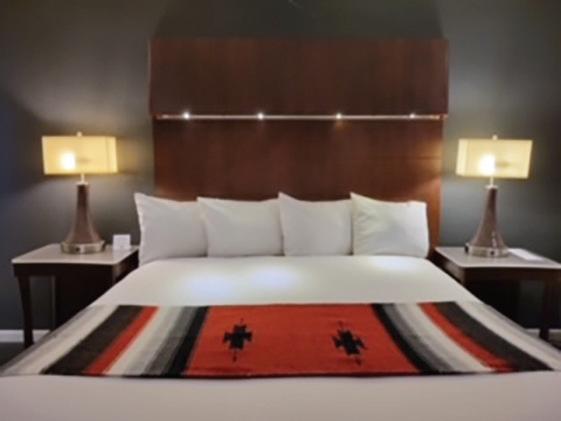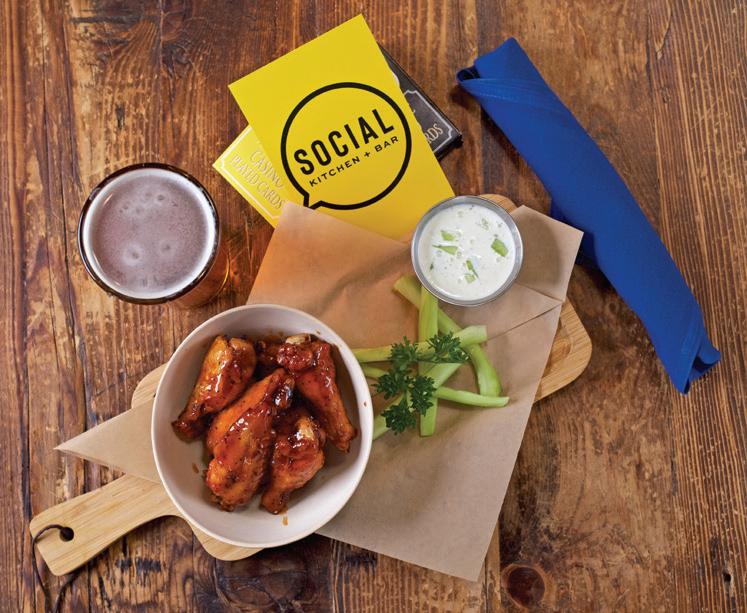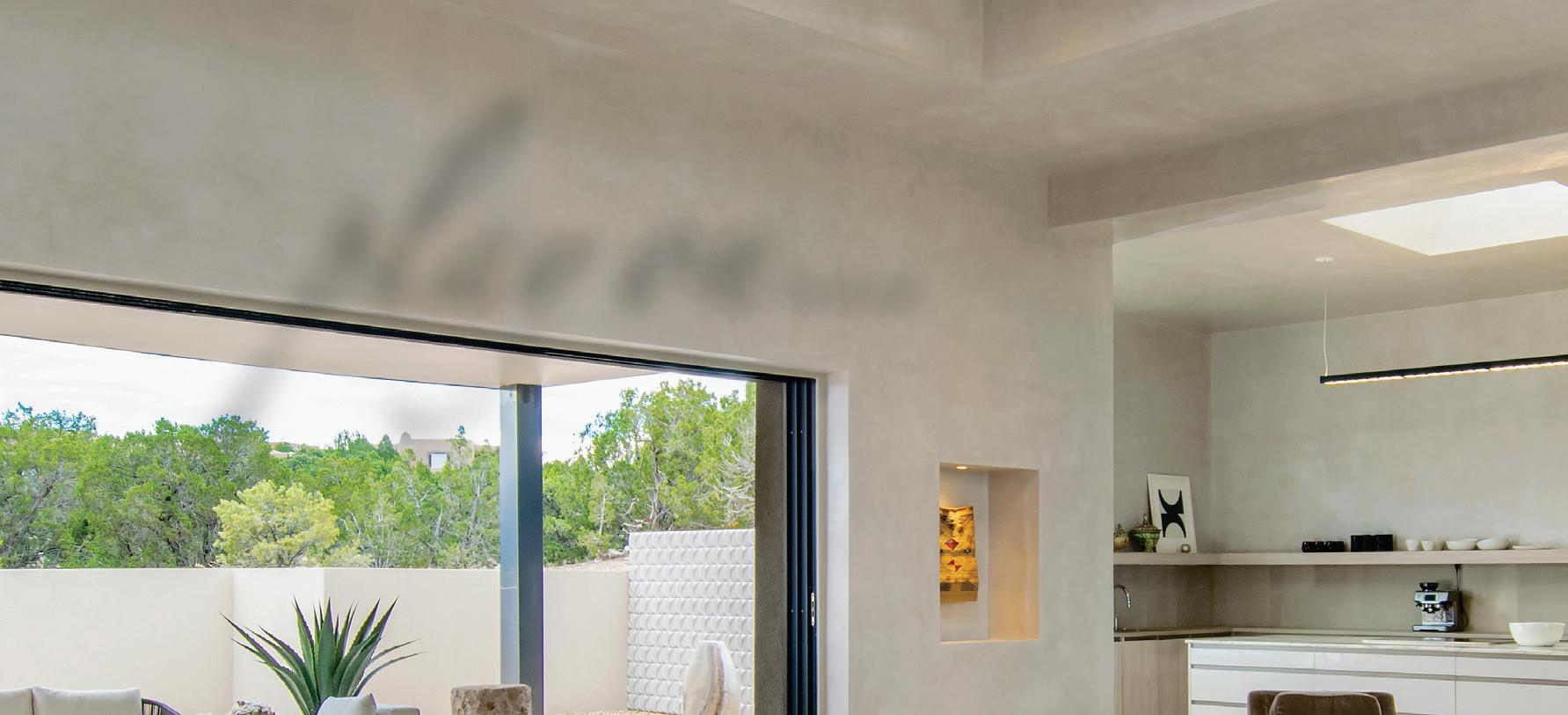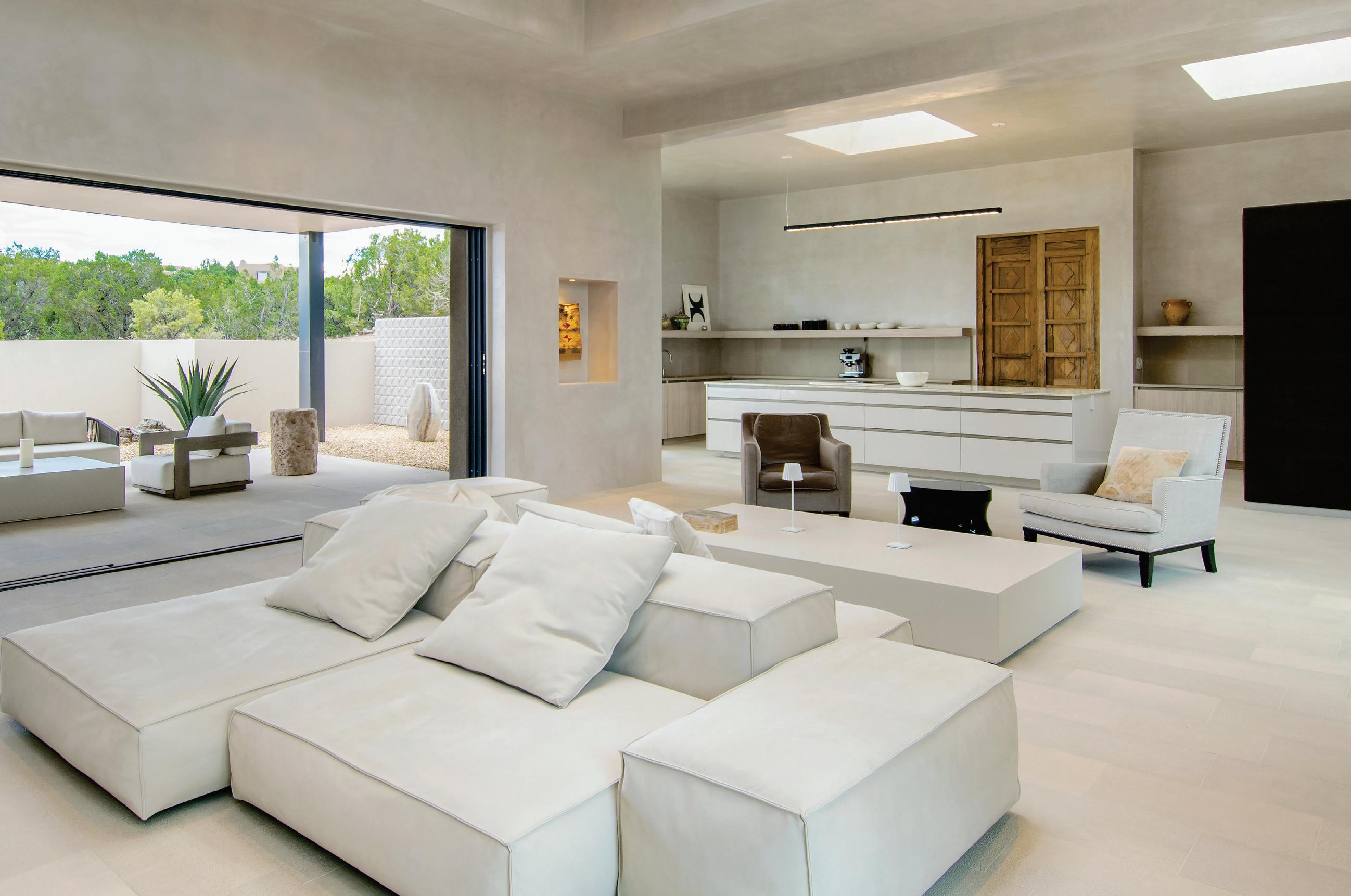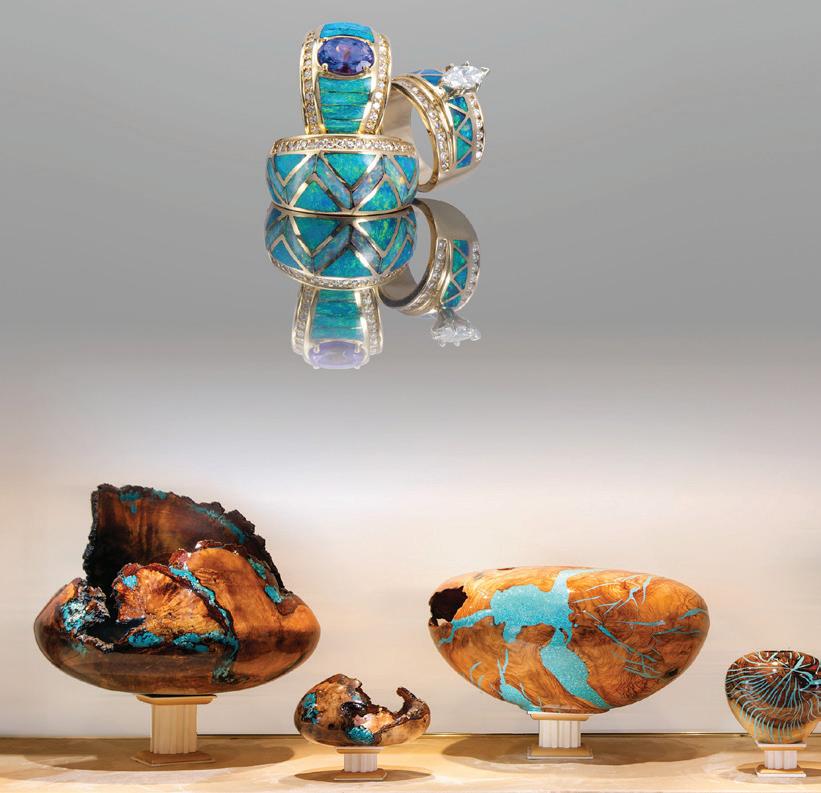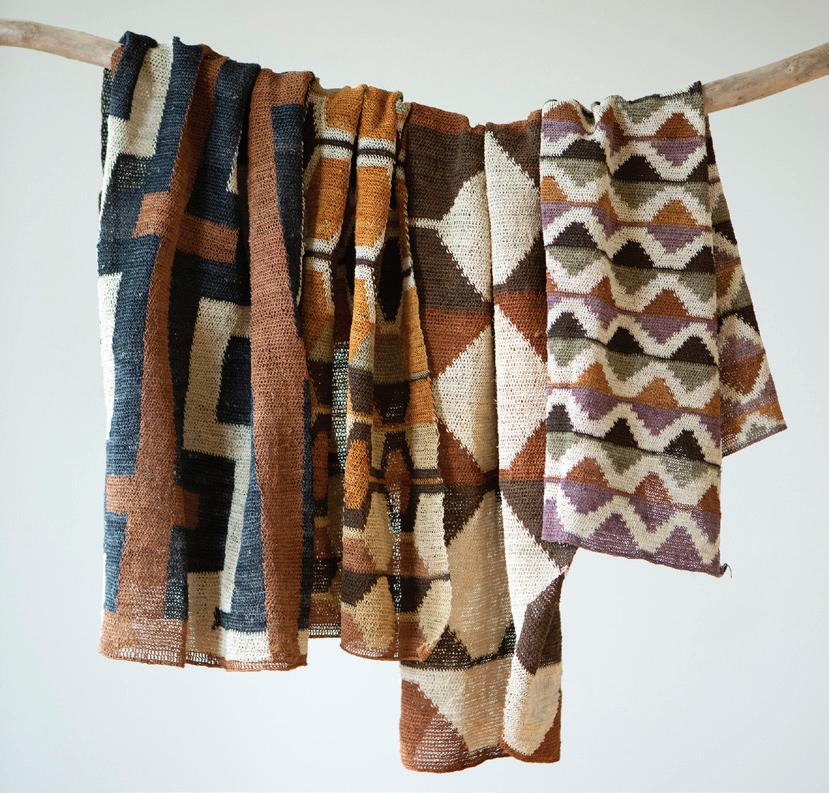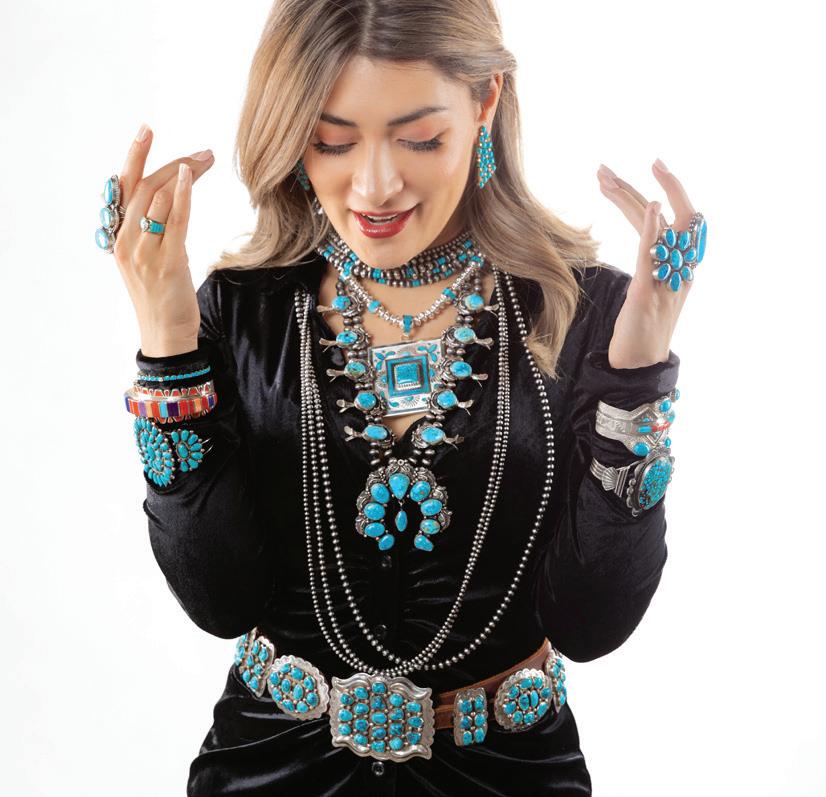








Thornburg is a global investment management firm delivering on strategy for institutions, financial professionals and investors worldwide.
Thornburg is proud to support The Santa Fe Symphony.





The title came from Solomon's Song of Songs. I believe pure expression of desire is fundamental for all creation. Melody, rhythm, poetry, color, forms, and movements in art and music will produce various vibrations and frequencies. The perfect combination of such an expression will make magic. That is genius, and that is creation. I wanted to celebrate our creativity in music and art through this painting.
—Rimi Yang

“In our shining city, filled with resplendent visual and performing arts, The Santa Fe Symphony Orchestra & Chorus stands as the crown jewel! The phenomenal talent of our world-class orchestral and choral musicians is like no other, complemented by awardwinning guest artists presenting the very best of classical music of all ages, for all ages. I am proud to be the Principal Conductor of this magnificent cultural treasure, and look forward to welcoming you to our concerts at Santa Fe's historic Lensic Performing Arts Center this season. See you at The Symphony!


David Felberg, Concertmaster
Kathie Jarrett, Assistant Concertmaster
THE BOO MILLER ASSISTANT CONCERTMASTER CHAIR
Ruxandra Marquardt
Alan Mar
Donna Bacon Mulkern
Jennie Baccante*
Gabriela da Silva Fogo*
Laura Chang
Carol Swift
Barbara Morris
VIOLIN II
Nicolle Maniaci, Principal Violin II
Sheila McLay
Gloria Velasco
Anne Karlstrom
Lidija Peno-Kelly
Laura Steiner
Justin Pollak*
Carla Kountoupes
Valerie Turner
VIOLA
Kimberly Fredenburgh, Principal Viola
Christine Rancier
Lisa Di Carlo
Barbara Clark
Allegra Askew
Cherokee Randolph
Virginia Lawrence
CELLO
Dana Winograd, Principal Cello
THE DR. PENELOPE PENLAND PRINCIPAL CELLO CHAIR
Joel Becktell, Assistant Principal Cello
Erin Espinoza
Melinda Mack
Lisa Collins
James Holland
Terry Pruitt, Principal Double Bass
Kathy Olszowka
Tobias Vigneau*
Frank Murry
Sam Brown
Mark Tatum
FLUTE
Jesse Tatum, Principal Flute
Laura Dwyer
OBOE
Elaine Heltman, Principal Oboe
Rebecca Ray
CLARINET
Lori Lovato, Principal Clarinet
Emily Erb
BASSOON
TUBA
Dr. Richard White, Principal Tuba
TIMPANI
Ken Dean, Principal Timpani
PERCUSSION
David Tolen, Principal Percussion
THE BOO MILLER PRINCIPAL PERCUSSION CHAIR HARP
Anne Eisfeller, Principal Harp
THE DIANE & PETER DONIGER PRINCIPAL HARP CHAIR
Dr. Stefanie Przybylska, Principal Bassoon
Leslie Shultis
HORN
Jeffrey Rogers, Principal Horn
Katelyn Benedict Lewis*
Peter Erb
Allison Tutton
Michael Lombardi
TRUMPET
Brynn Marchiando, Principal Trumpet
Leif Atchley
TROMBONE
Byron Herrington, Principal Trombone
Lynn Mostoller
Dave Tall, Principal Bass Trombone
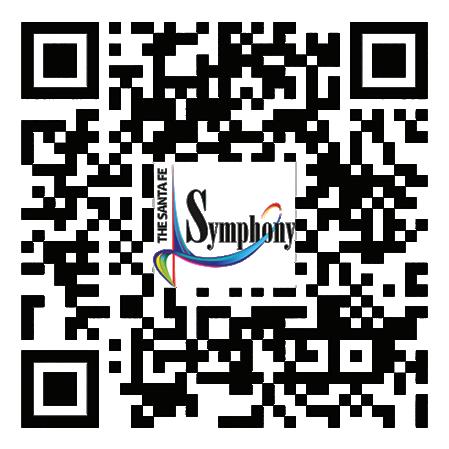





Giacomo
Claude Debussy
Antonín Dvořák ORFEO
Claudio Monteverdi World Premiere Orchestration by Nico Muhly

Executive
Emma
Creative
Kathryn
Development
Carole
Patron
Regina
Operations
Bethany
Music
Alexis
Tina
Principal Conductor
Guillermo Figueroa
Choral Director
Carmen Flórez-Mansi
Orchestra Personnel Manager
Nicolle Maniaci
Orchestra Librarians
Kerri Lay
Cherokee Randolph
Chorus Librarian
Bettina Milliken
Collaborative Piano
Paul J. Roth
Stage Manager
Curtis Mark
Recording Services
William



On behalf of The Santa Fe Symphony Orchestra & Chorus, welcome to this performance! We are honored to share our creativity, dedication, and passion with you today. Each of our 2022–2023 Season concerts showcases magnificent artists from right here in New Mexico, in addition to some of the brightest up-and-coming soloists in classical music. Our brilliant Principal Conductor, Maestro Guillermo Figueroa, and Choral Director Carmen FlórezMansi lead the orchestral and choral musicians to create breathtaking artistic experiences time after time.
We believe that classical music is a living art form. It connects us with our past, present, and future. The Symphony continues to present a wide array of beloved symphonic favorites and contemporary composers. Our commitment to highlighting diverse voices is stronger than ever, with female artists and composers and soloists of color taking center stage at every concert. Together, we can uplift all voices in classical music and encourage future generations to continue this beautiful tradition of symphonic and choral music— right here in Santa Fe.
Your Santa Fe Symphony Orchestra & Chorus is dedicated to our community, offering an ever-growing complement of community and engagement programming that impacts thousands of New Mexicans each year. Our musicians are local to New Mexico. They perform across the region in libraries, schools, Pueblo communities, senior centers, assisted living facilities, and other accessible venues. We invest in future generations of artists and music lovers through our award-winning Discovery Concerts, Music Mentors, and other programs that reach communities across Northern New Mexico.
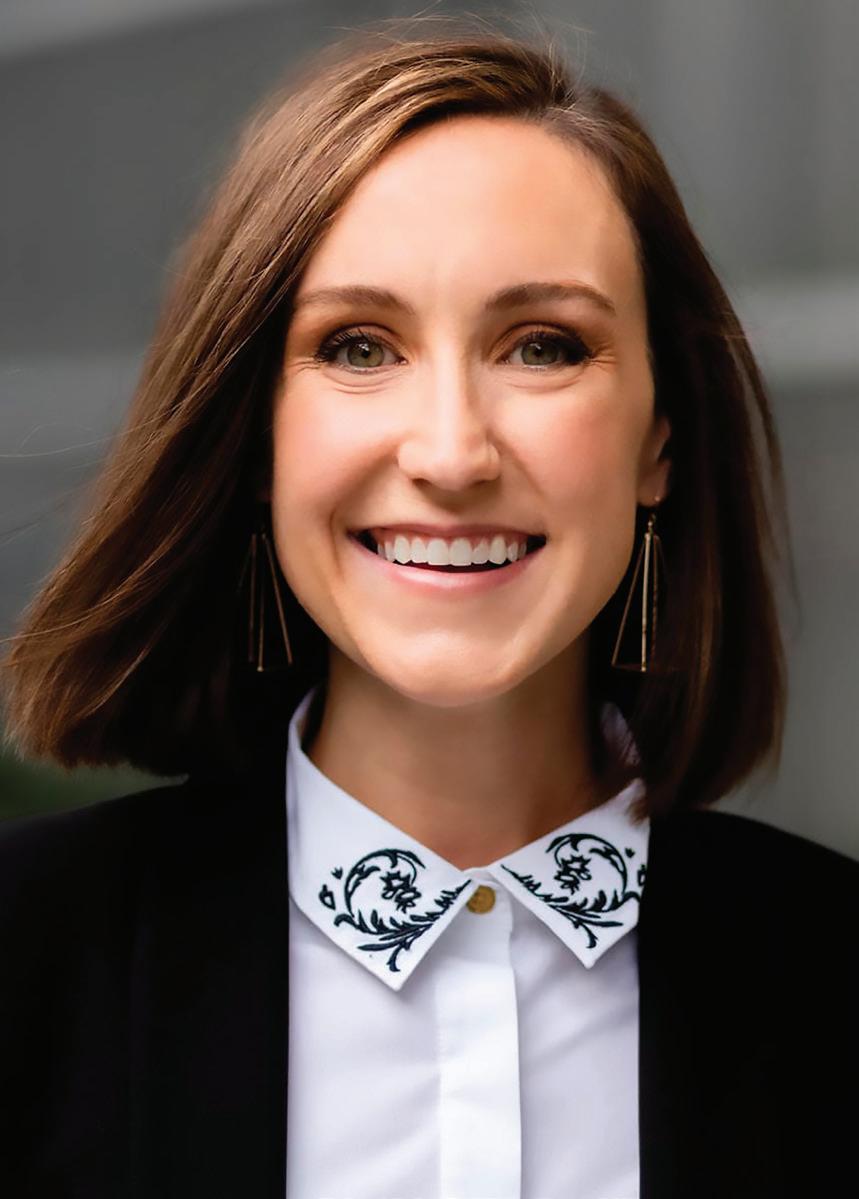
Each and every one of you has made this season possible, just by joining us today. Your gratitude and generosity makes all the difference as we bring great music to life. If you are already a member of The Symphony's donor family, thank you! If you would like to be more involved, we invite you to get to know us better by adopting a musician, becoming a member of our Symphony Club, sponsoring an artist or performance, volunteering your time, or leaving a legacy for future generations of symphony lovers.
The Santa Fe Symphony Orchestra & Chorus is stronger than ever, thanks to YOU. We look forward to sharing today’s concert with you and invite you to return again and again to enjoy beautiful music in our beautiful city.
Warm regards,
 Emma Scherer Executive Director
Emma Scherer Executive Director


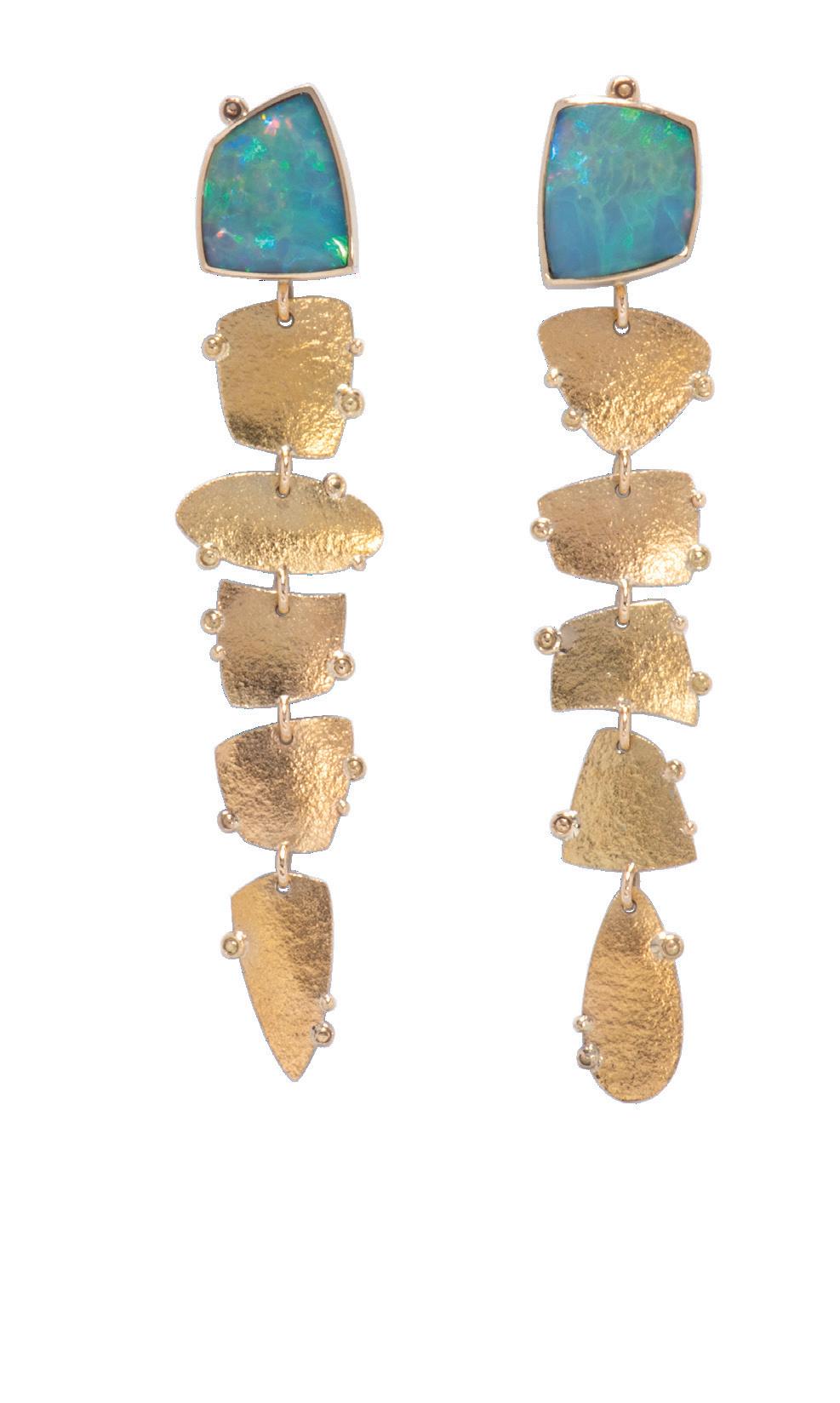


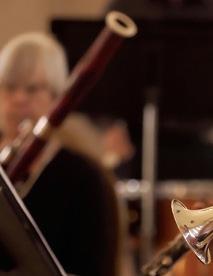
The 39th Season of The Santa Fe Symphony Orchestra & Chorus is upon us and once again there is nothing more joyous, soothing, exhilarating—sometimes all at the same time—than the symphonic music made by our amazingly talented orchestral and choral musicians. On behalf of them, as well as The Symphony’s Board of Directors and Staff, allow me to say “Welcome”—we are absolutely thrilled to have you joining us for this performance! Of course, we leave the Season’s concert programming to the experts and this season Maestro Guillermo Figueroa, Choral Director Carmen FlórezMansi, and your Symphony musicians have “pulled out all the stops” to bring you this much-anticipated 2022–2023 Season!
Our September season opener once again finds violin virtuoso and Santa Fe concertgoers’ favorite, Nikki Chooi, back on The Lensic stage, along with guest conductor JoAnn Falletta, who has conducted over 100 orchestras around the globe! Our May season finale showcases gold medalist and phenomenal cellist, Zlatomir Fung, and culminates with Tchaikovsky’s ongoing struggle with fate, as The Santa Fe Symphony performs his Symphony No. 5, adored by audiences around the world. With an eye towards diversity in composers, guest performers and music ranging from beloved orchestral classics to 20th century favorites, this Season ensures something for everyone.

In a city filled to the brim with artistic shining lights, YOUR Santa Fe Symphony Orchestra & Chorus continues to shine ever brightly upon the “City Different”! Again, “Welcome” and it is my sincere hope that you enjoy this and every performance of our 2022–2023 Season.
 Perry C. Andrews, III Board President
Perry C. Andrews, III Board President
Perry C. Andrews, III

Dr. Penelope Penland
Justin Medrano
Steven J. Goldstein, MD
Ann Neuberger Aceves
E. Franklin Hirsch
Randall Balmer, PhD
Anne Eisfeller
Emily Erb
Joseph Fasel
Jose “Pepe” Figueroa
Kim Fredenburgh
Gary Lutz
Mary Macukas
Boo Miller
Teresa Pierce
Dr. Stefanie Przybylska
Rebecca Ray
Laurie Rossi
Emma Scherer
David Van Winkle
Rick Vaughan
Everett Zlatoff-Mirsky
Each and every time we put on a performance we endeavor to share something extraordinary. Music matters … and your support helps The Santa Fe Symphony bring great music to life. ®

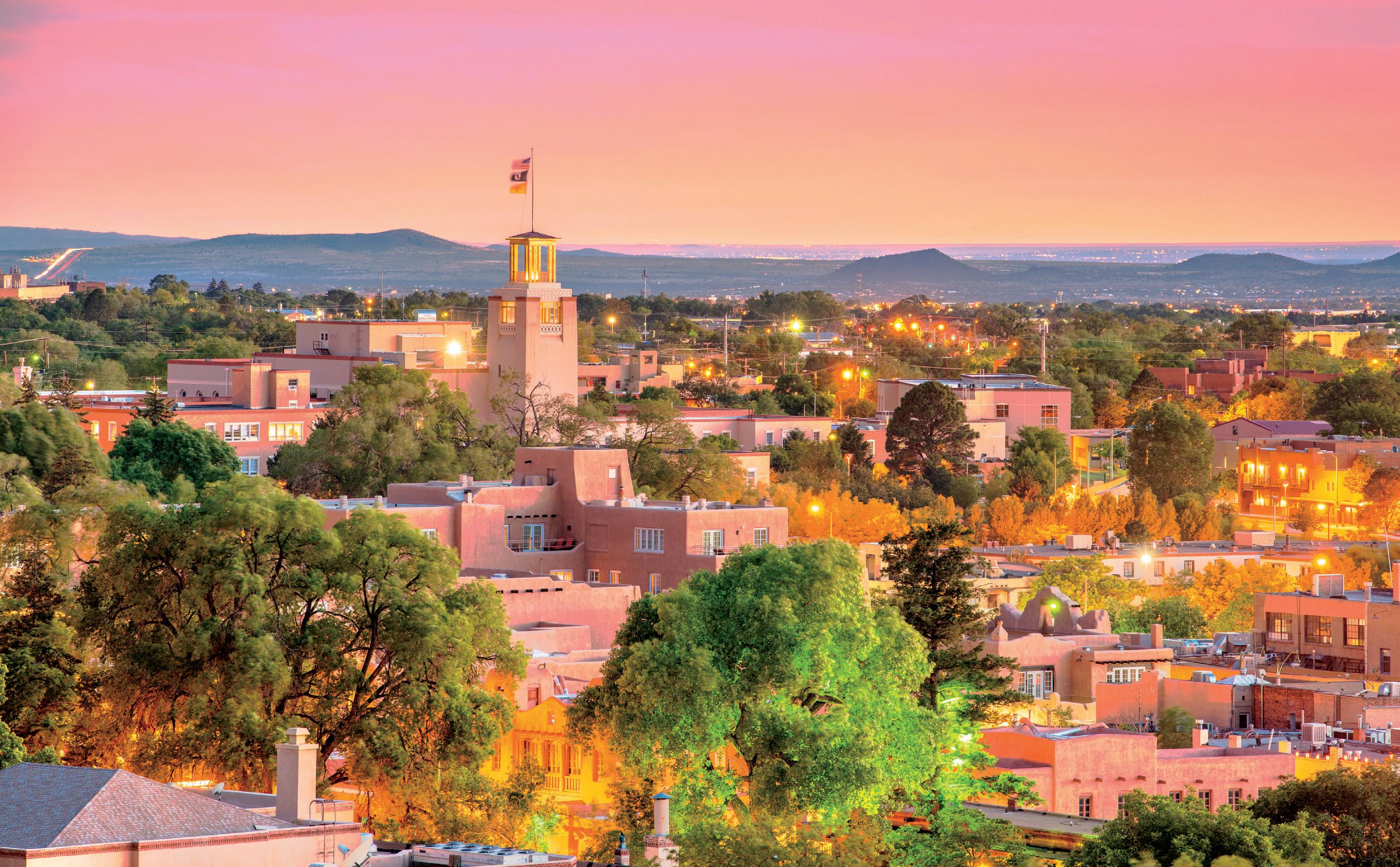

The Santa Fe Symphony Orchestra
JoAnn Falletta, Guest Conductor
Nikki Chooi, Violin

“
Nothing touches more with dreamy sweetness than the end of this Poème ...
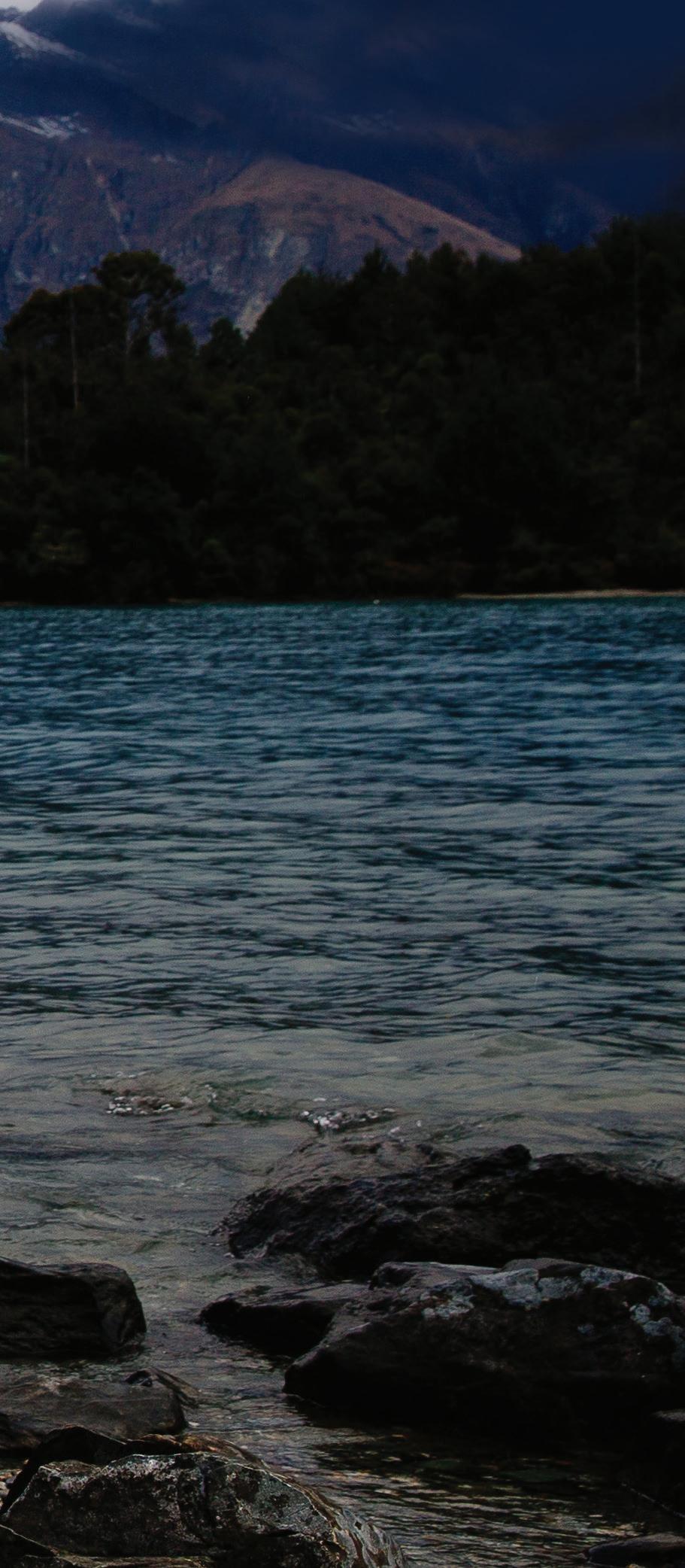
LILI BOULANGER
Born 1893, Paris
Died 1918, Mézy-sur-Seine
D’un matin de printemps
The younger sister of the great teacher Nadia Boulanger, Lili Boulanger was a musician of extraordinary talent. A student of Fauré, Boulanger was the first woman to win the Prix de Rome, but that promise was cut short by perpetually poor health and by an early death: She was only 24 when she died. So short a life inevitably means that one’s output is small, and today she is remembered for her vocal settings and a small amount of instrumental music.
As might be expected from the sister of Nadia Boulanger, her music is beautifully crafted. She has been described as an impressionist, but more striking are her instinctive sense of form and an expressive control of what is at times a surprisingly chromatic harmonic language.
In 1917, late in her brief life, Boulanger composed two mood pieces, each inspired by a different time of day: The subdued D’un soir triste (“Of a Sad Evening”) and the lively D’un matin de printemps (“Of a Spring Morning”).
She composed the latter first as a duo for violin (or flute) and piano, then arranged the music for string trio, and finally arranged it for full orchestra. She was still working on the orchestral version when she died early in 1918, and it was left to her sister Nadia to supply a certain number of dynamic and phrase markings. The music has been widely performed and recorded in all three versions.
Marked Assez animé (“Very lively”), the opening section bursts to life on the work’s dancing, dotted main theme. Listeners may be struck by the sense of instrumental color here―in addition to its many wind solos, this section has solo passages for the concertmaster, principal second violin, principal viola and principal cello. D’un matin de printemps is in three-part form, and it slows slightly for its central episode. Though slower, the mood remains upbeat (the performance marking here is ardent, heureux: “ardent, happy”), and one senses the influence of Debussy in both expression and instrumentation.
Solo oboe leads the way back to the opening material, but that return is not literal, and tempos and colors shift subtly before the music reaches its lively conclusion on a great, happy swoop of sound. We are left wondering what might have been.
Sunday, September 11—4:00 pm
LILI BOULANGER
D’un matin de printemps (Of a Spring Morning)
ERNEST CHAUSSON
Poème for Violin and Orchestra, op. 25
Nikki Chooi, Violin
MAURICE RAVEL
Tzigane for Violin and Orchestra
Nikki Chooi, Violin
INTERMISSION
NIKOLAI RIMSKY-KORSAKOV
Scheherazade
The Sea and Sinbad’s Ship
The Tale of Prince Kalendar
The Young Prince and the Young Princess
The Festival at Bagdad; The Sea; The Ship Goes to Pieces on a Rock In Loving

Born 1855, Paris
Died 1899, Limay, Yvelines
Poéme for Violin and Orchestra, op.25
Ernest Chausson grew up in an educated and refined family who believed that he should have a career in law. But the lure of music proved too strong, and after completing law school at age 24, he entered the Paris Conservatory. Perhaps because of this late start, it took Chausson some years to refine his art and develop a personal style, and it was not until his late 30s that he began to produce a series of carefully crafted works, particularly for voice. The promise demonstrated in this music was cut short, however, when Chausson was killed in a bicycle accident at age 44.
A cultivated man, Chausson was particularly attracted to the work of Russian novelist Ivan Turgenev. When he set out to write a piece for the great Belgian violinist Eugene Ysaÿe, Chausson turned to Turgenev’s work for inspiration, choosing a short story called (in its French translation) Le chant de l’amour triomphant. Chausson composed this music in the spring of 1896, although he finally chose the much simpler title Poème.
This 15-minute piece for violin and orchestra is neither a concerto nor a tone poem that sets out to tell Turgenev’s tale in music. Rather, it is a mood piece—expressive, dark, almost voluptuous in its lush harmonies and melodies— meant to reflect the atmosphere of Turgenev’s tale. The musical form of the Poème is difficult to define: It is episodic, somewhat in the manner of a slow rondo. After the orchestra’s misty introduction, marked Lento e misterioso, the unaccompanied violin lays out the long and graceful main theme, which is repeated by the orchestra. The violin’s music grows more intense and florid, rushing ahead into the contrasting section, marked Animato, where it soars high above the murmuring orchestra. Chausson alternates these sections before the Poème moves to a quiet close on a return of the opening material. This ending drew particular praise from Debussy who, some years after Chausson’s death, wrote in a review: “Nothing touches more with dreamy sweetness than the end of this Poème, where the music, leaving aside all description and anecdote, becomes the very feeling which inspired its emotion.”
Although the Poème is not consciously a display piece, it is nevertheless quite difficult for the violinist, who must
sustain a singing line (often high in the instrument’s register) and project the complex runs, trills and arabesques that give this music its distinctive character. Ysaÿe was very fond of the Poème and performed it several times (both privately and publicly) before the Paris premiere on April 4, 1897. Chausson had not had much success with critics or audiences, and the response to the Poème caught him by surprise: One of his friends told of seeing a look of astonishment on Chausson’s face as he stood backstage listening to the waves of applause that greeted the premiere: “I can’t get over it,” was all the amazed composer could say. A century later, the Poème remains Chausson’s most famous work, a favorite of audiences and violinists alike.
Born 1875, Ciboure, Basse-Pyrennes
Died 1937, Paris
In the summer of 1922, just as he began his orchestration of Mussorgsky’s Pictures at an Exhibition, Ravel visited England for several concerts of his music, and in London he heard a performance of his brand-new Sonata for Violin and Cello by Jelly d’Aranyi and Hans Kindler. d’Aranyi must have been a very impressive violinist, for every composer who heard her was swept away by her playing―and by her personality (Bartók was one of the many who fell in love with her). Ravel was so impressed that he stayed after the concert and talked her into playing gypsy tunes from her native Hungary―which went on until 5 AM.
Tzigane probably got its start that night. Inspired by both d’Aranyi’s playing and the fiery music, Ravel set out to write a virtuoso showpiece for the violin based on similar melodies (Tzigane means “gypsy”). Its composition was much delayed, however, and Ravel did not complete Tzigane for another two years. Trying to preserve a distinctly Hungarian flavor, he wrote the piece for violin with the accompaniment of a luthéal, a device that attaches to a piano and gives it a jangling sound typical of the Hungarian cimbalon. The first performance, by Jelly d’Aranyi with piano accompaniment, took place in London on April 26, 1924, and later that year Ravel prepared an orchestral accompaniment. In whatever form it is heard, Tzigane remains an audience favorite.
While Tzigane seems drenched in an authentic gypsy spirit, all of its themes are Ravel’s own. It is unusual
for a French composer to be so drawn to this type of music. Usually, it was composers from central Europe―such as Liszt, Brahms, Joachim and Hubay— who felt its charm, but Ravel enters fully into the spirit and creates a virtuoso showpiece redolent of campfires and smoldering dance tunes. Tzigane opens with a long cadenza (nearly half the length of the entire piece) that keeps the violinist solely on the G-string across the span of the entire first page. Gradually, the accompaniment enters, and the piece takes off. Tzigane is quite episodic, and across its blazing second half Ravel demands such techniques from the violinist as artificial harmonics, left-hand pizzicatos, complex multiple-stops, and sustained octave passages. Over the final pages, the tempo gradually accelerates until Tzigane rushes to its scorching close, marked Presto
Born 1844, Tikhvin Died 1908, Lyubensk
Scheherazade, op.35
In the summer of 1888, Nikolai Rimsky-Korsakov, then 44 years old, went to his summer estate on the shores of Lake Cheryemenyetskoye and set to work on a new orchestral composition. He called it Scheherazade and added a subtitle, “Symphonic Suite on 1001 Nights,” that made clear its inspiration. Each movement had a title that suggested a definite program: The Sea and Sinbad’s Ship, The Story of the Kalender Prince, The Young Prince and the Young Princess, and the concluding Festival in Bagdad/The Sea, which ends with a shipwreck.
The composer included an introductory note in the score: “The Sultan Schahriar, persuaded of the falseness and faithfulness of all women, had sworn to put to death each of his wives after the first night. But the Sultana Scheherazade saved her life by arousing his interest in tales which she told him during a thousand and one nights. Driven by curiosity, the Sultan put off his wife’s execution from day to day and at last gave up his bloody plan altogether.” Scheherazade, composed within the month of July 1888, quickly became one of the most popular works in symphonic literature, played around the world, where audiences could revel in the stories with which the wily Scheherazade entranced her dangerous husband.
But does this music tell a story? Each of the movements has a descriptive title, and certain themes are obviously
Sunday, September 11 4:00 pm
musical portraits: The menacing opening is clearly the ferocious Sultan, while the solo violin is the sly and sensual Sultana, spinning her tales. And along the way we hear the swaying sea, the sighs of the young lovers, the festival in Baghdad, and the crash of the ship against the rock.
Or do we? Despite what seems obvious musical portraiture, Rimsky-Korsakov discouraged any talk of this music’s telling a specific story and suggested that his intentions were much more general: “In composing Scheherazade, I meant these hints to direct but slightly the hearer’s fancy on the path which my own fancy had traveled, and to leave more minute and particular conceptions to the will and mood of each listener. All I had desired was that the hearer, if he liked my piece as symphonic music, should carry away the impression that it is beyond doubt an Oriental narrative of some numerous and varied fairy-tale wonders . . .” The composer even went so far as to temporarily withdraw the descriptive titles of the four movements.
And so listeners are free to approach this music in any way they wish. They can experience it as the Sultana’s depiction of a thousand exotic tales and even imagine the specific events the music and movement titles seem to evoke. Or they can listen for Rimsky-Korsakov’s endless transformation of just a few themes, which return in an exotic array of new shapes and colors. Or they can listen for the opulence of the sound he is able to draw from the orchestra, for Scheherazade remains— more than a century after its creation—one of the most sumptuous scores ever composed. Perhaps some of the charm of this music is that it simply cannot be pinned down but remains as elusive, evocative and mysterious as the Sultana’s tales.
—Program Notes by Eric Bromberger
Praised for his passionate and poetic performances, internationally acclaimed violinist Nikki Chooi has established himself as an artist of rare versatility. Described as “expressive, enchanting, and transcendent,” Nikki has received prizes at the Queen Elizabeth and Tchaikovsky Competitions, and was 1st Prize Winner of the Montreal Symphony’s ManuLife Competition, the Klein International Strings Competition and the Michael Hill International Violin Competition.
Nikki has received critical acclaim in recent engagements at the Harris Theater in Chicago, Kimmel Center in Philadelphia, Carnegie Hall and Kauffman Center in New York, Koerner Hall in Toronto and Place des Arts in Montreal. He has appeared as soloist with orchestras across Canada and internationally with the Montreal Symphony Orchestra, National Arts Centre Orchestra, Louisiana Philharmonic, St. Petersburg State Orchestra, Chamber Orchestra of Wallonie, National Orchestra of Belgium, Auckland Philharmonia, Malaysian Philharmonic and Hong Kong Philharmonic.
a model of taste and tonal refinement.

“I absolutely love the high registers of the violin when played beautifully,” Nikki said, “The instrument challenges me every day to find a more beautiful sound. It is a never-ending process as there can always be more shades, more depth, to how a phrase can be played.”
As Concertmaster of the Metropolitan Opera Orchestra during the 2016–2017 season, Nikki worked closely with singers and conductors including Renee Fleming, Susanna Phillips, Elīna Garanča, Eric Owens, Fabio Luisi and Esa-Pekka Salonen. His solos can be heard through The Met: Live in HD broadcasts in productions of Verdi’s La Traviata, Janacek’s Jenufa, and the Grammy®-nominated recording of Strauss’ Rosenkavalier released on the Decca Label. Nikki has appeared as guest concertmaster with the Pittsburgh Symphony, Houston Symphony and Sydney Symphony, and is currently Concertmaster of the Grammy® Award-winning Buffalo Philharmonic Orchestra.
A passionate educator, Nikki is currently on the violin faculty at the University of Ottawa and has presented
master classes at the San Francisco Conservatory, Morningside Music Program at the New England Conservatory, Orchestra of the Americas Academy, Sphinx Academy at the Curtis Institute of Music, Hong Kong Cultural Center and the University of Auckland.
Nikki began his studies at the Victoria Conservatory, Mount Royal Conservatory, and at the National Arts Centre Young Artist Programme. He completed his formal studies at the Curtis Institute and the Juilliard School under the mentorship of Joseph Silverstein, Ida Kavafian, and Donald Weilerstein,
Learn more at santafesymphony.org/chooi.
THE APPEARANCES OF NIKKI CHOOI AND JOANN FALLETTA ARE MADE BY POSSIBLE THROUGH THE SANTA FE SYMPHONY'S REACH FOR THE STARS PROGRAM BY DR. MARYLOU WITZ.
santafesymphony.org
One of the finest conductors of her generation.

Multiple Grammy® Award-winning conductor JoAnn Falletta serves as Music Director of the Buffalo Philharmonic, and the Connie and Marc Jacobson Music Director Laureate of the Virginia Symphony, Principal Guest Conductor of the Brevard Music Center and Artistic Adviser to the Hawaii Symphony. She was recently named one of the “Fifty Great Conductors,” past and present, by Gramophone Magazine, and is hailed for her work as a conductor, recording artist, audience builder and champion of American composers.
Upon her appointment as Music Director of the Buffalo Philharmonic, Falletta became the first woman to lead a major American ensemble and has been credited with bringing the Philharmonic to an unprecedented level of national and international prominence. The Buffalo Philharmonic has become one of the leading recording orchestras for Naxos, with two Grammy® Award-winning recordings. This season, the BPO will perform at Carnegie Hall for a centennial celebration of former BPO Music Director Lukas Foss. The orchestra will also travel to Florida for their fifth tour of the State under Falletta’s leadership.
Falletta is a strong advocate and mentor for young professional and student musicians. She has led seminars for women conductors for the League of American Orchestras and established a unique collaboration between the Buffalo Philharmonic and the Mannes College of Music to give up-and-coming conductors professional experience with a leading American orchestra. In 2018, she served on the jury of the Malko Competition in Denmark. She has had great success working with young musicians, guest conducting orchestras at top conservatories and summer programs such as the National Repertory Orchestra, National Orchestral Institute, Interlochen, and Brevard Music Center, and as Artistic Advisor at the Cleveland Institute of Music.
Falletta has held the positions of Principal Conductor of the Ulster Orchestra, Principal Guest Conductor of the
Phoenix Symphony, Music Director of the Long Beach Symphony Orchestra, Associate Conductor of the Milwaukee Symphony Orchestra, and Music Director of the Denver Chamber Orchestra and The Women’s Philharmonic.
After earning her bachelor’s degree at Mannes, Falletta received master’s and doctoral degrees from The Juilliard School. When not on the podium, JoAnn enjoys playing classical guitar, writing, cycling, yoga and is an avid reader.
Learn more at santafesymphony.org/falletta.
The Santa Fe Symphony Orchestra
Kenny Broberg, Piano
2021 American Pianists Award Winner and Christel DeHaan Classical Fellow
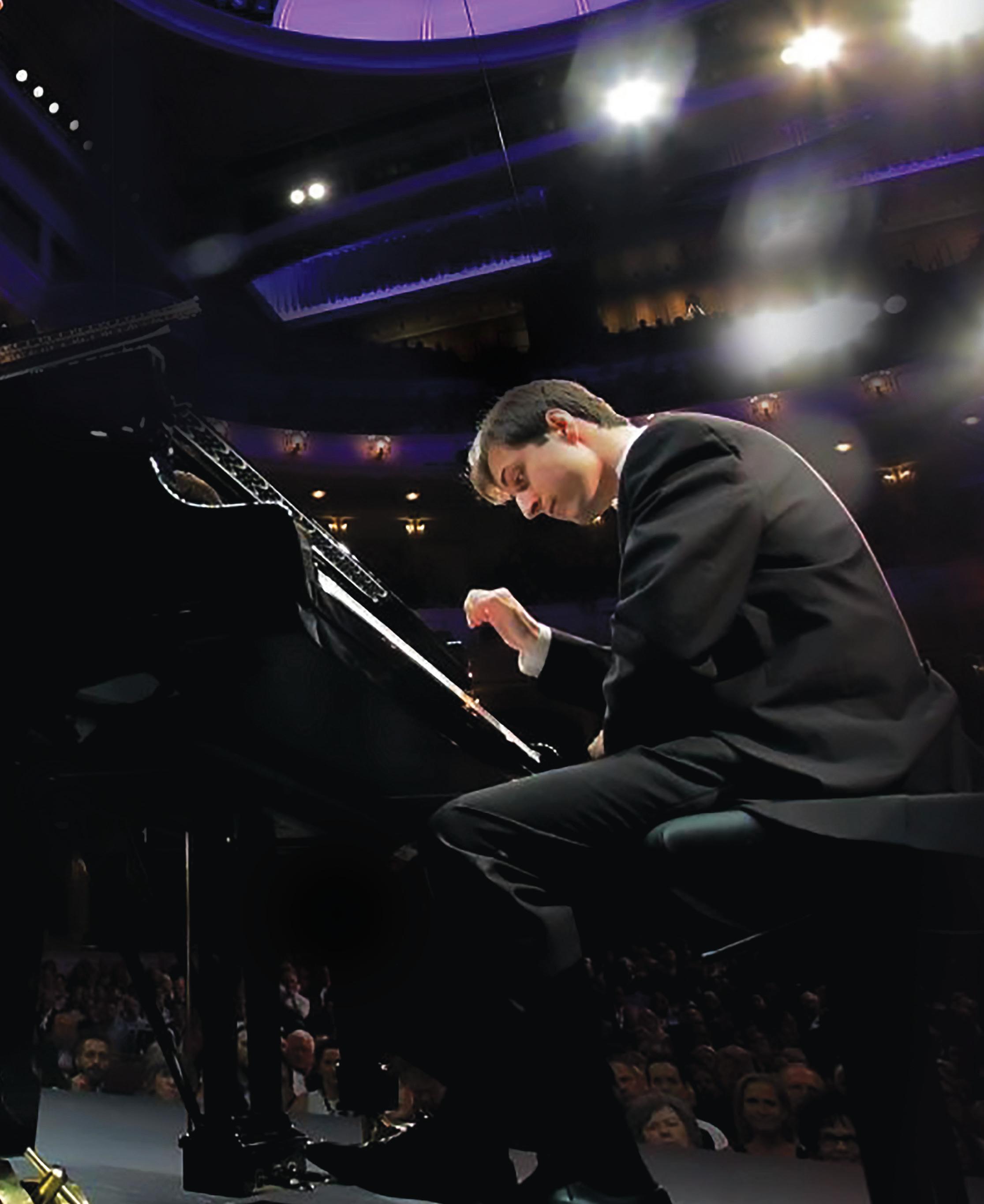
“In order to create there must be a dynamic force, and what force is more potent than love?
—Igor Stravinsky

In collaboration with our partners at the American Pianists Association, The Santa Fe Symphony Orchestra & Chorus is proud to present piano virtuoso Kenny Broberg. As part of the American Pianists Awards, Kenny will release his first studio album on the Steinway & Sons label in late 2022.

Born 1822, Liege
Died 1890, Paris
Symphonic Variations
When César Franck died in 1890 at the age of 68, he was worshipped by his students and regarded as one of the great French composers at the end of the 19th century. Fame can be a delicate matter, however: Had Franck died six years earlier, we might never have heard of him. The works for which he is remembered today came from the great flowering of creativity that took place when he was in his 60s; from those final years of his life came the Symphony in D Minor, the Violin Sonata, and the Prelude, Chorale, and Fugue for organ.
The Symphonic Variations are also part of that late burst of creative energy. Franck composed this music in 1885, and it was first performed May 1, 1886, at a concert of the Société Nationale de Musique in Paris. Franck’s title can be misleading; Symphonic Variations seems to imply a set of variations for orchestra, but this work is scored for piano soloist and orchestra. Yet, is not a piano concerto. Instead, this is a variation-form movement in which the piano and orchestra share equally in the continuous evolution of ideas. One admiring critic called it “a flawless work and as near perfection as a human composer can hope to get in a work of this nature.”
But the Symphonic Variations should not be understood as a theme and set of variations, like Brahms’ Variations on a Theme of Haydn, and Franck’s music offers a complete rethinking of what variation-form might be. Basic to that form is a certain starting-and-stopping quality: The composer presents his theme, then offers a series of variations on that theme, and the music comes to a pause between each variation. The piece does not have clearly defined variations but instead constitutes an organic form in which two themes evolve continuously across the music’s quarter-hour span. So integrated is Franck’s writing that different observers count different numbers of variations here, but the number of variations does not matter: This music is fluid and alive, and its themes are in a constant state of evolution.
Various observers have tried to make out traditional forms in Franck’s variations. Some claim to hear a miniature symphony, with an introduction, fast movement, slow movement and quick-paced finale. Others detect an extended sonata-form movement with exposition, development, recapitulation and coda. Such uncertainty is actually a measure of Franck’s success. So
SUNDAY, OCTOBER 9, 2022—4:00 pm
Symphonic Variations
Kenny Broberg, Piano
ERNST VON DOHNÁNYI
Variations on a Nursery Song, op.25
Kenny Broberg, Piano
Pelléas et Mélisande, op.80: Suite
III. Sicilienne
IGOR STRAVINSKY
The Firebird: Suite Introduction
L’Oiseau de feu et sa danse Variation de l’oiseau de feu Ronde de princesses
Danse infernale du roi Kastcheï Berceuse
Finale
FULL CONCERT UNDERWRITERS

ADDITIONAL SUPPORT
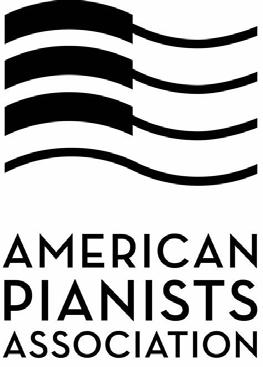
ingenious are his variations, so subtle is their evolution, so convincing is the entire span of the work that we don’t need to understand it as one of those forms. Franck created a unique piece of music in which soloist and orchestra—and two quite different themes—fuse together to generate music that seems constantly to be in the process of creating itself.
Born 1877, Pressburg, Hungary
Died 1960, New York City
Variations on a Nursery Tune, op.25
Ernst von Dohnányi was not only one of the greatest pianists who ever lived, he was also a champion of Hungarian music and one of the primal forces in Hungarian musical life in the early decades of the twentieth century. He served as conductor of the Budapest Philharmonic from 1919 until 1944, was music director at the Hungarian radio, and was for many years director of the Budapest Academy of Music, where he taught piano and composition. He championed the music of Bartók, Kodály and other young Hungarian composers, and he gave international tours as a concert pianist. So great was his influence that Bartók noted that Dohnányi was essentially providing the musical life of the entire Hungarian nation during these years.
Dohnányi composed his Variations on a Nursery Song in 1913, and he was soloist when the Berlin Philharmonic gave the premiere on February 17, 1914. Dohnányi begins with a long and dramatic introduction, marked Maestoso (“Majestic”) and full of snarling dissonances. We expect that what follows will be equally portentous, but for his theme he chose one of the best-known children’s tunes on the planet, and one that Mozart had used for a set of variations in 1781 under its French title “Ah, vous dirai-je, Maman.” This song goes under a variety of titles in English (no point in spoiling the fun by naming it here—its identity will be obvious instantly). Dohnányi then takes this innocent little melody through 11 variations, some of them in specific forms and some meant to recall the music of other composers: No. 5 is a waltz, No. 7 is a sturdy march reminiscent of Mahler, and No. 9 evokes Dukas’ The Sorcerer’s Apprentice.
As we near the end, the variations grow more powerful. No. 10, Passacaglia, is almost expressionistic in its intensity, No. 11 is a Choral scored largely for brass, and the Variations conclude with a finale in the form of an
energetic fugato that brings back the nursery tune in all its innocent freshness before the powerful rush to the close.
In classical music, we rarely encounter a piece of music written just for fun. Dohnányi’s Variations on a Nursery Song is many things: an imaginative set of variations on an unexpected tune, a brilliant and demanding work for piano soloist, and a powerful work for orchestra. It’s also a lot of fun.
Born 1882, Oranienbaum, Russia
Died 1971, New York City
The Firebird: Suite
In 1909, following a successful visit of the Ballets Russes to Paris, the Russian impresario Serge Diaghilev and his choreographer Michel Fokine made plans for a new ballet to be presented in Paris the following season, based on the old Russian legend of The Firebird. They first asked Anatoly Lyadov to compose the music, but when it became clear that the notoriously lazy Lyadov would never get around to it, they decided to take a chance on a young composer who had orchestrated some pieces for the Ballets Russes the year before. His name was Igor Stravinsky, and he was virtually unknown.
Stravinsky set to work in November 1909 at a dacha owned by the Rimsky-Korsakov family—to which he had gone, as he said, “for a vacation in birch forests and snowfresh air”—and finished the piano score in St. Petersburg in March; the orchestration was completed a month later. The first performance took place in Paris on June 25, 1910, eight days after the composer’s 28th birthday, and it was a huge success. Although Stravinsky would go on to write very different music over the remainder of his long career, the music from The Firebird remains his most popular creation.
The Firebird tells of a young prince, Ivan Tsarevich, who unknowingly pursues the magic Firebird (part woman, part bird) into the garden of the green-taloned Kastchei, the most horrible of all ogres: Kastchei captures and imprisons maidens in the castle and turns all knights who come to rescue them to stone. Ivan captures the Firebird, but she begs to be released, and when he agrees, she gives him a magic feather. The prince sees a group of 13 princesses playing with golden apples, and when dawn breaks and they have to return to Kastchei’s castle, he follows them. He is confronted by the fiends and is about to be turned to stone when he
waves the feather, and the Firebird returns to save the day.He is confronted by the fiends and is about to be turned to stone when he waves the feather, and the Firebird returns to save the day.
Stravinsky drew three orchestral suites from his complete score to The Firebird. The first, in 1911, uses the original orchestration but eliminates the pantomimes that connect the scenes and (strangely) ends with the dance of Kastchei’s fiends as they try to resist the Firebird’s spell. For the second suite, composed in 1919, Stravinsky greatly reduced and simplified the opulent orchestration of the original ballet, took out some of the earlier sections, and added the Berceuse and the Finale. The version performed at this concert has become by far the most popular of the three; the final suite, assembled in 1945, reintroduces the pantomimes.
The ominous Introduction, in the unusual key of A-flat minor, hints at the music that will be associated with the monsters; Stravinsky tried to portray the ballet’s “magic” characters in music built on slight dissonances, reserving more consonant music for the human characters. Near the end of this section comes one of Stravinsky’s most striking orchestral effects, a series of rippling string arpeggios played
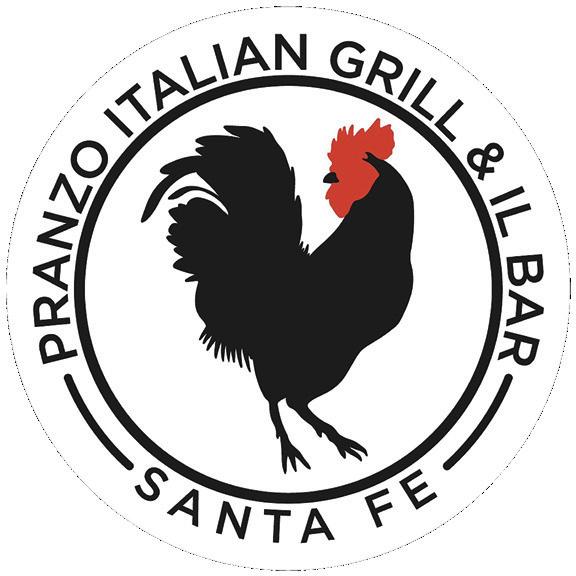
entirely in harmonics. The composer said that he wanted to create the effect of a Catherine wheel (a firework that rotates when lit). The music proceeds without pause into the shimmering, whirling Variation of The Firebird, Stravinsky’s own favorite music from this score.
One of the intentions of Diaghilev and Fokine had been to make The Firebird as “Russian” as possible, and in The Princesses’ Khorovod (Round Dance), Stravinsky uses the old Russian folk tune “In the Garden.” The Khorovod comes to a peaceful close, but this mood is shattered at the beginning of the Infernal Dance of Kastchei’s Subjects by one of the most violent orchestral attacks ever written. Sharply syncopated rhythms and the barbaric snorts and growls of the low brass depict the fiends’ efforts to resist the Firebird’s spell.
Solo bassoon then sings the gentle (almost lugubrious) Berceuse, the music with which the Firebird lulls Kastchei and his followers to sleep, and this leads through a magical passage for tremolo strings into the Finale. The solo French horn sings the main theme, based on another Russian folk song, “By the Gate.” Beginning quietly, this tune repeats, growing in strength each time, and The Firebird drives to a magnificent conclusion on music of general rejoicing.
—Program
Notes by Eric Bromberger
Kenny Broberg, who is becoming one of the most decorated and internationally renowned pianists of his generation, is lauded for his inventive, intelligent and intense performances. During his auspicious career before winning the 2021 American Pianist Awards and Christel DeHaan Classical Fellowship, Kenny captured the silver medal at the 2017 Van Cliburn International Piano Competition and a bronze medal at the 2019 International Tchaikovsky Competition, as well as prizes at the Hastings, Sydney, Seattle and New Orleans International Piano Competitions.
The Christel DeHaan Classical Fellowship provided Kenny a prize valued at $200,000 designed to assist him as he builds his musical career. It includes $50,000 in cash, two years of professional development and assistance, and performance opportunities worldwide. He will also work with students and host performances during his time on campus as the Artist-in-Residence at the University of Indianapolis.
Crediting his first exposure to classical music to his Italian grandfather’s love of the Three Tenors, Kenny began piano lessons on his family’s upright piano at age 6. During his childhood in Minneapolis, he began studying piano with Dr. Joseph Zins at Crocus Hill Studios in Saint Paul.
Throughout high school, he balanced his musical lessons with playing baseball and hockey. He remains an avid fan of both the Minnesota Twins and Wild and checks their scores while on breaks during his practice.
“Kenny earned a Bachelor of Music degree in 2016 at the University of Houston’s Moores School of Music, studying under Nancy Weems. He is currently a graduate student at Park University in Parkville, Missouri, studying with Stanislav Ioudenitch, the gold medalist at the 2001 Van Cliburn International Piano Competition.
Broberg mastered everything he performed over the weekend, pulling a palette of moods from every register,” The Indianapolis Star writes of Broberg's performance during the Finals for American Pianists Awards.
Learn more at santafesymphony.org/soloists/broberg
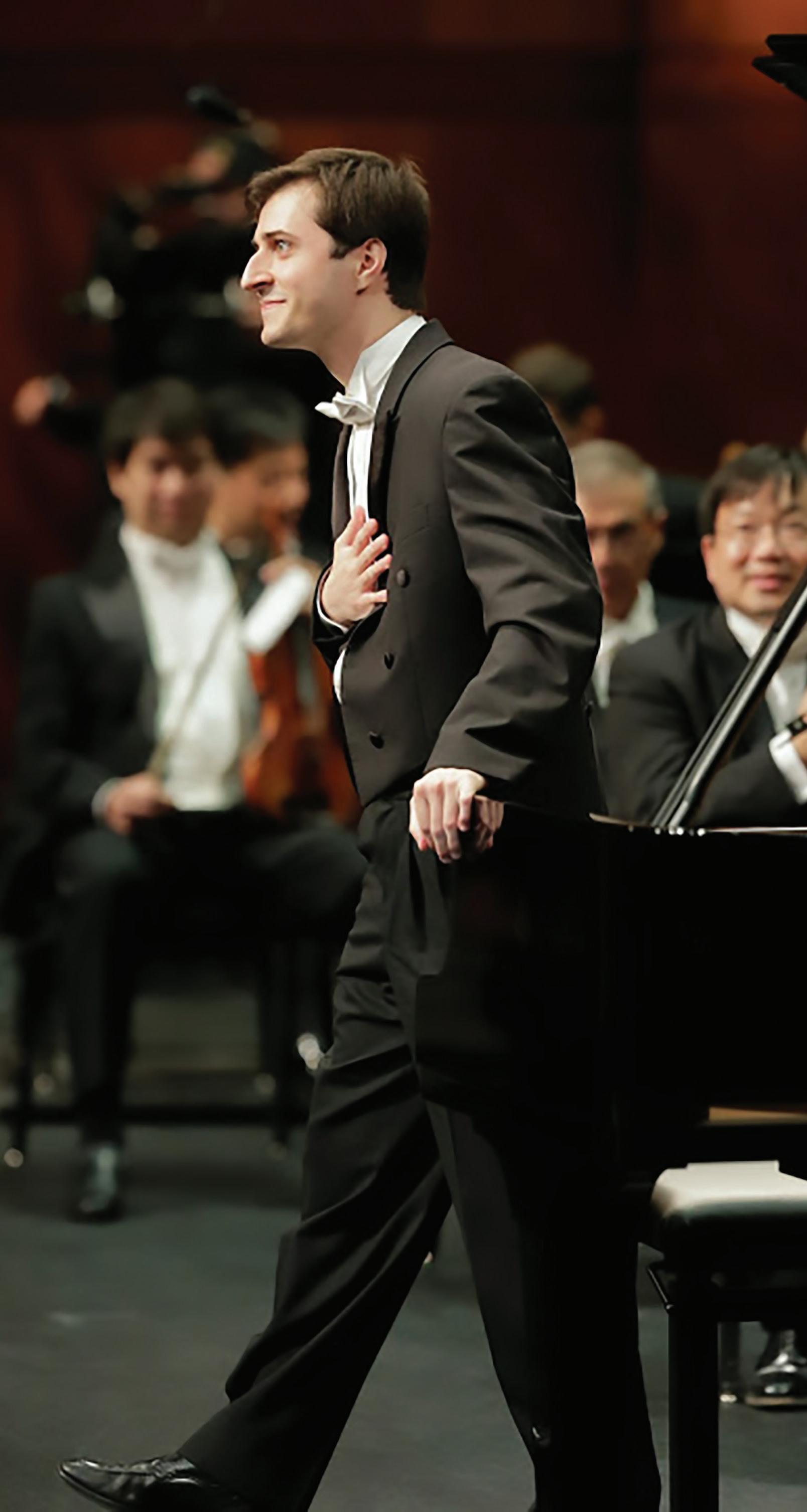

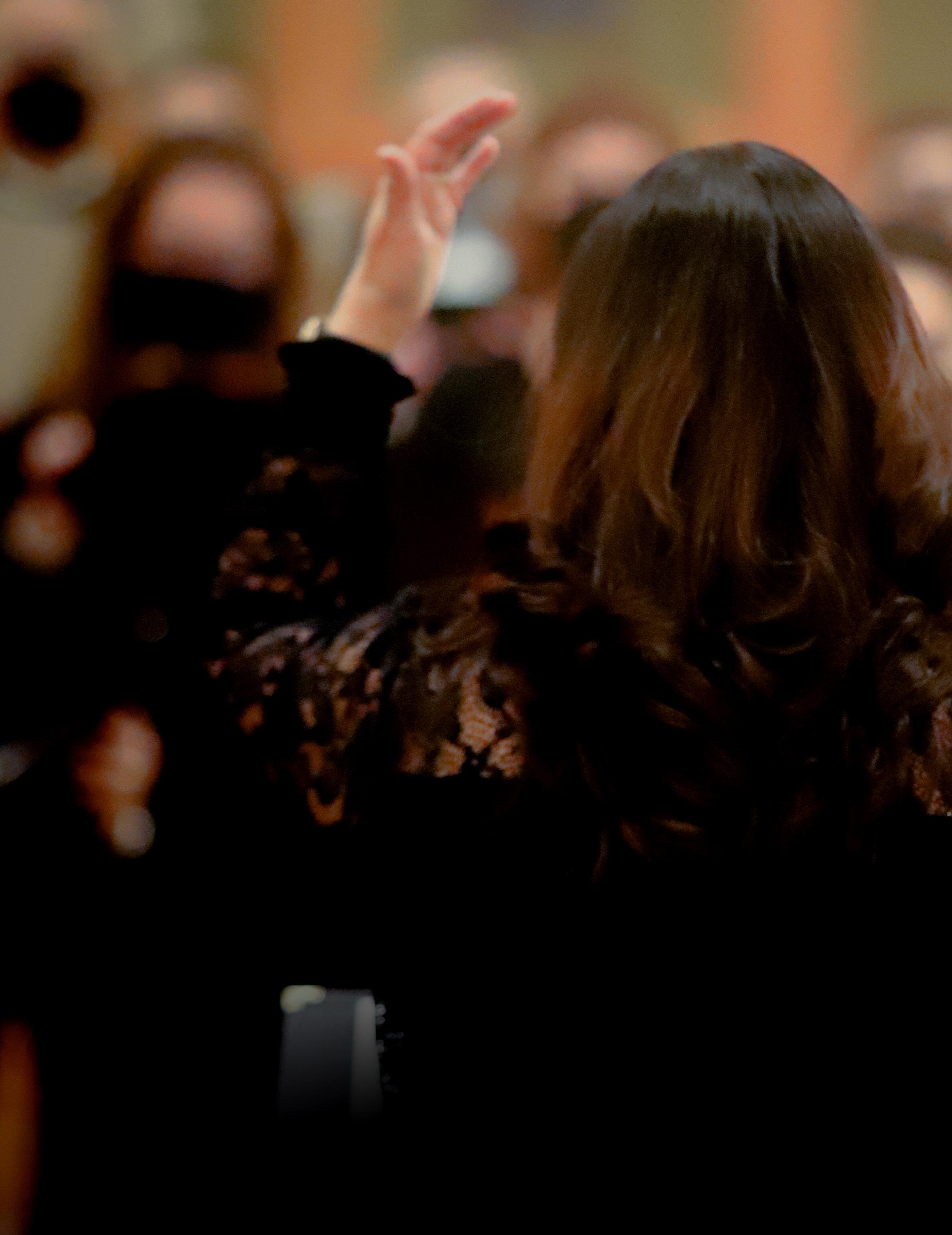
The Santa Fe Symphony Orchestra
The Santa Fe Symphony Chorus
Devon Guthrie, Soprano
Daryl Freedman, Mezzo-Soprano
Joshua Dennis, Tenor
Joseph Beutel, Baritone
Lift every voice and sing!
—James Weldon JohnsonBe transformed by one of history’s most treasured oratorios!
Handel’s Messiah, with its soaring arias, memorable choruses, and hallmark Baroque flourish, is perhaps music’s most enduring message of hope. You won’t want to miss this season’s offering!
Part I Sinfonia (overture)
Comfort ye (tenor recitative)
Every valley (tenor aria)
And the glory of the Lord (chorus)
Thus saith the Lord (bass recitative)
But who may abide the day of his coming (alto aria)
And He shall purify (chorus)
Behold, a virgin shall conceive (alto recitative)
O Thou that tellest good tidings to Zion (alto aria and chorus)
For behold, darkness shall cover the earth (bass recitative)
The people that walked in darkness (bass aria)
For unto us a child is born (chorus)
Pifa (“Pastoral Symphony”)
There were shepherds abiding in the field (soprano recitative)
And lo, the angel of the Lord (soprano recitative)
And the angel said unto them (soprano recitative)
And suddenly there was with the angel (soprano recitative)
Glory to God (chorus)
Rejoice greatly, O daughter of Zion (soprano aria)
Then shall the eyes of the blind be opened (alto recitative)
He shall feed His flock like a shepherd (soprano and alto duet)
His yoke is easy, and His burthen is light (chorus)
Part II Behold the Lamb of God (chorus)
He was despised (alto aria)
Surely He hath borne our griefs (chorus)
And with His stripes we are healed (chorus)
All we like sheep have gone astray (chorus)
All they that see him (tenor recitative)
He trusted in God (chorus)
Thy rebuke hath broken His heart (tenor recitative)
Behold and see (tenor aria)
He was cut off (tenor recitative)
But Thou didst not leave His soul in Hell (tenor aria)
Why do the nations so furiously rage together? (bass aria)
Let us break their bonds asunder (chorus)
He that dwelleth in heaven (tenor recitative)
Thou shalt break them (tenor aria)
Hallelujah (chorus)
Part III I know that my Redeemer liveth (soprano aria)
Since by man came death (chorus)
Behold, I tell you a mystery (bass recitative)
The trumpet shall sound (bass aria)
Then shall be brought to pass (alto recitative)
O death, where is thy sting? (alto and tenor duet)
But thanks be to God (chorus)
Worthy is the Lamb that was slain (chorus)
Amen (chorus)
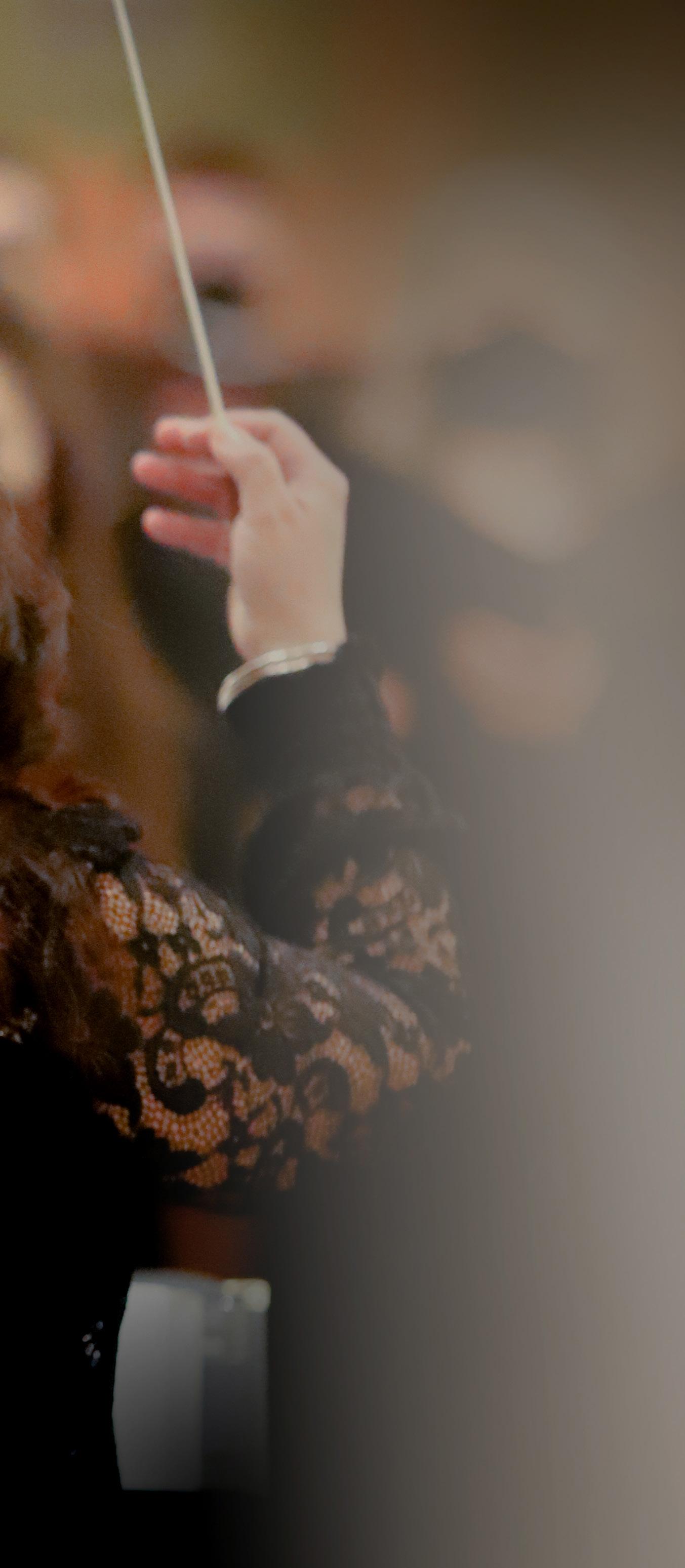
Saturday, November 19, 2022—7:00 pm
Sunday, November 20, 2022—4:00 pm
The Santa Fe Symphony Orchestra
The Santa Fe Symphony Chorus
Guillermo Figueroa, Principal Conductor
Carmen Flórez-Mansi, Choral Director
Devon Guthrie, Soprano
Daryl Freedman, Mezzo-Soprano
Joshua Dennis, Tenor
Joseph Beutel, Baritone
IN LOVING MEMORY OF RONALD E. RINKER
REACH FOR THE STARS
The running time for this abridged version of Messiah is approximately 2.5 hours, with one intermission.
In the latter part of his career, the music of Handel had become less fashionable and his financial straits dire. Nonetheless, in 1741, he was invited by William Cavendish, Duke of Devonshire and Lord Lieutenant of Dublin, to compose and present a series of concerts in Ireland to benefit local charities. This fortuitous invitation culminated in the first public presentations of the now-famous Messiah. Before leaving for Ireland that fall, Handel composed Messiah in London in a mere 24 days. He had little or no idea of the quality, disposition, or experience of the performers with whom he would be working in Dublin. Therefore, when he arrived in Dublin in November 1741, he changed the work to suit the particular abilities of his cast, and never did perform Messiah exactly as he’d written it the previous fall.
In fact, each time he prepared a performance of Messiah, Handel changed it to suit the particular abilities of the singers engaged. Sometimes he changed things slightly, simply transposing an aria from one key to another to fit the range of a particular singer. Other times, he reassigned arias to different voices either because he had a different mix of soloists, or because he had a particular guest star he wanted to feature. Sometimes he recomposed movements altogether. While some patterns emerged over time, we cannot determine with certainty that Handel favored one particular version over the others. In all, there are at least 10 different arrangements of the score, with 15 individual movements existing in at least 43 different versions. Messiah is scored for oboes, bassoons, trumpets, strings, harpsichord, timpani, soloists, and chorus.
Handel presented 12 concerts in Dublin before unveiling Messiah on Tuesday, April 13, in the New Musick-Hall on Fishamble Street. The normal capacity of the Musick-Hall was 600 people, but the Dublin Journal reported a crowd of at least 700. Such was the excitement about the new work that a Journal article admonished women to “come without hoops” and men to “come without swords” so that more people could be crammed in. The event was a categorical artistic and financial success, earning great reviews and making it possible for 142 people to be released from debtors’ prison. Handel waited a year before presenting Messiah in London. Seven years later, in 1750, he came upon the idea to perform the oratorio as a fund-raiser for the Foundling Hospital. Annual performances have continued in London and around the world ever since. The Hospital still possesses Handel’s autographed score and performance notes, which he left to the institution upon his death. Messiah marked the beginning of a resurgence in Handel’s career; when he died, in 1759, he was able to leave a substantial legacy to a niece, friends, servants, and charities in England.
—Program
Note by Tom Hall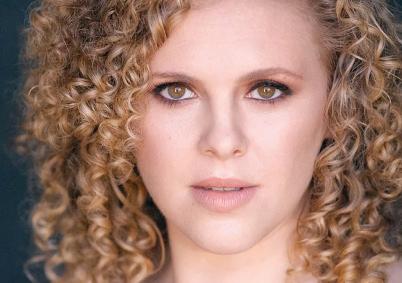



Saturday, November 19, 2022—7:00 pm
Sunday, November 20, 2022—4:00 pm
Grammy®-nominated American soprano Devon Guthrie made an acclaimed debut as Susanna in a new production of Le nozze di Figaro at English National Opera when she was still a student at the Juilliard School. Guthrie has won several awards and prizes in competitions, such as the Gerda Lissner Competition, Houston Grand Opera Eleanor McCollum Competition for Young Singers, Licia Albanese Competition, and Liederkranz. She was also an apprentice at the Santa Fe Opera and Tanglewood Music Festival, where she worked with James Levine. Recent operatic works include a special memorial performance with the Paul Taylor Dance Company honoring the late Paul Taylor, Brahms’ Requiem with The Santa Fe Symphony, and a return to Opera Theater of St. Louis to sing the role of Drusilla in L'Incoronazione di Poppea.
Praised by Opera News for her “striking dark timbre” and “expansive, sumptuous” performances, mezzo-soprano Daryl Freedman began the 2021–2022 season with her role/house debut at Virginia Opera in Das Rheingold (Fricka). Additional engagements include a role/house debut at The Atlanta Opera in the title role of Julius Caesar, returns to The Metropolitan Opera for The Magic Flute (Third Lady) and the new McVicar production of Don Carlos (Princess Eboli/ rehearsal cover) and a return to Washington National Opera for the world premiere of Sankaram’s Rise (Powerful Woman/Adelaide Johnson). In the summer of 2022, she debuted at the Salzburger Festspiele in a new Christoph Loy production of Suor Angelica (Suor Dolcina) conducted by Franz Welser-Möst. On stage, she debuts with the Erie Philharmonic in Mahler’s Symphony No. 2, and returns to the Fairfax Symphony for Beethoven’s Symphony No. 9.
Known for his “voluptuous elegant tone” and a “robust tenor with baritonal heft,” American lyric tenor Joshua Dennis is a star on the rise. This season, he is slated to return to Arizona Opera in the second world premiere of Clint Borzoni and John de los Santos’s production The Copper Queen, after a recent reprisal of the role of Bern Venters in the world premiere of Riders of the Purple Sage. Joshua, a champion of new works, had the honor of originating two roles: “Shoeless” Joe Jackson in Minnesota Opera’s world premiere production of The Fix, and Prince Frederic in Poul Ruders’ The Thirteenth Child with Santa Fe Opera. Additionally, he was heard in Huang Rou’s Paradise Interrupted at the MGM Grand in Macau, and as the host of Santa Fe Opera’s virtual event Songs from the Santa Fe Opera.
"An imposing bass-baritone," as reviewed by Opera News, Joseph Beutel is often praised for his "deep, well-rounded tone," and overall richness of voice and versatility on stage. Making his career across the US, Europe, Asia, and South America, Joseph has performed with such companies as Santa Fe Opera, Minnesota Opera, Seattle Opera and the New York Philharmonic, to name a few. He enjoys performing operas in the classic cannon and originating new roles in operas on the cutting edge, such as the father or “sir” role in Mila, commissioned and performed by Asia Society Hong Kong. The story of a typical Hong Kong family and their domestic helper, the opera sheds light on social issues spanning much of Asia and the Middle East. Joseph was the second-place winner of the Lyndon Woodside OratorioSolo Competition in 2017 and winner of a Sullivan Foundation Career Development Award in 2011.
Learn more about this season's Messiah soloists at santafesymphony.org/messiah/soloists.
The Santa Fe Symphony Orchestra
Santa Fe Youth Symphony Association
Laurie Rossi, Special Guest Conductor
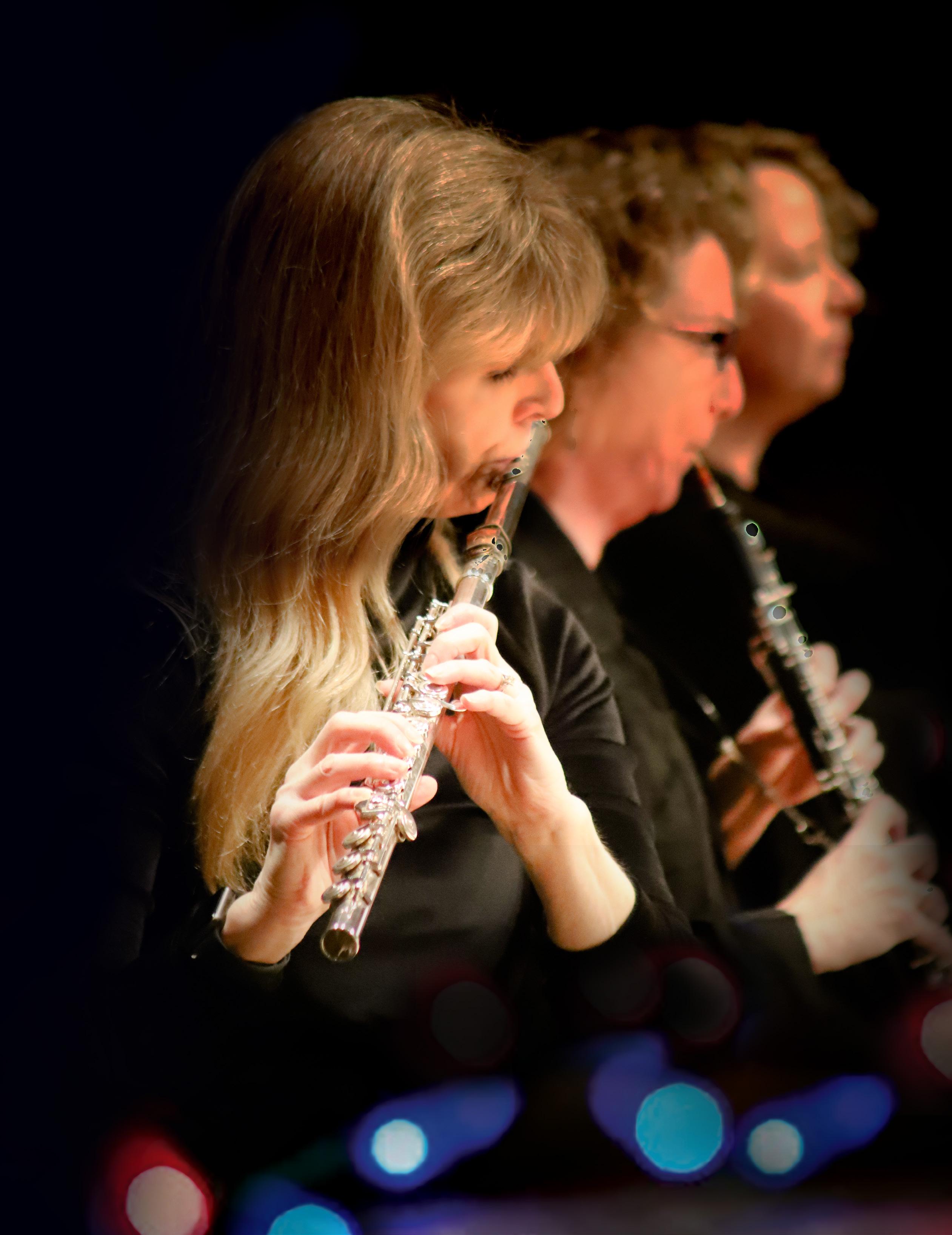
Music is enough for a lifetime, but a lifetime is not enough for music.
—Sergei Rachmaninov
Over the course of many years, our holiday pops concerts have become a Santa Fe tradition! Join us this season for a brilliant program packed with winter favorites the entire family can enjoy! Plus, our “future players” at the Santa Fe Youth Symphony, under the direction of their Associate Artistic Director & Youth Symphony Orchestra Conductor William Waag, return for more exciting side-by-side performances!
Founded in 1994, the Santa Fe Youth Symphony Association provides music instruction and performance opportunities to hundreds of youth each year. Additionally, Elementary Strings, the 2010 recipient of the Piñon Award for Excellence in Education, provides stringed-instrument instruction in public and private elementary schools around the city with an instrument provided. All of its programs are offered on a sliding scale and community support is vital. The Santa Fe Youth Symphony Association offers outstanding youth music education and performance opportunities in Santa Fe, NM.
Now in its 27th Season, the Santa Fe Youth Symphony trains young northern New Mexico musicians in ensemble settings that include string and symphony orchestras, and jazz and mariachi ensembles.


SUNDAY, DECEMBER 11—4:00 PM
The Santa Fe Symphony Orchestra
Santa Fe Youth Symphony
William Waag, Associate Artistic Director & Youth Symphony Orchestra Conductor
PYOTR TCHAIKOVSKY
Selections from the Nutcracker Suite
March
Waltz of the Flowers
Trepak
Mother Ginger and her Children
JULE STYNE
Christmas Waltz
ANTONIN DVORAK
Symphony No. 8
Side-by-side with Santa Fe Youth Symphony
Allegro con brio
LEROY ANDERSON
Sleigh Ride
Side-by-side with Santa Fe Youth Symphony
MANUEL DE FALLA
Ritual Fire Dance
Guest Conductor Laurie Rossi
RALPH VAUGHAN WILLIAMS
"Fantasia" on Greensleeves
Arr. LUCAS RICHMAN
Hanukkah Festival Overture
JOHANN STRAUSS Radetzky March
JAMES STEPHENSON
Holly and Jolly Sing-A-Long
CONCERT SPONSOR-IN-PART

CONCERT SPONSORS-IN-PART
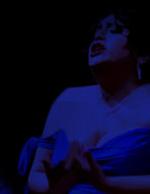
“Love, love, love, that is the soul of genius.
— Wolfgang Amadeus Mozart

In collaboration with the Santa Fe Opera, The Santa Fe Symphony Orchestra & Chorus proudly presents A Night at the Opera again this season at the beautiful Lensic Performing Arts Center!
Under the baton of Maestro Guillermo Figueroa, this spectacular performance is back by popular demand, and features operatic favorites sung by members of the Santa Fe Opera's 2022 Apprentice Singers.
THE APPEARANCES OF THE GUEST SOLOISTS FOR A NIGHT AT THE OPERA ARE MADE BY POSSIBLE THROUGH THE SANTA FE SYMPHONY'S REACH FOR THE STARS PROGRAM BY THE
Saturday, December 24, 2022—5:00 pm
FULL CONCERT SPONSOR

The Santa Fe Opera’s prestigious Apprentice Program for Singers is internationally recognized as one of the finest programs of its type. Each year, approximately 40 apprentice singers are chosen from a competitive applicant pool.
“Graduates” of the Santa Fe Opera Apprentice Programs for Singers and Technicians are active with opera, theater and ballet companies around the world, as well as in the film and television industry. All credit the Apprentice Program as instrumental to their artistic growth and current career.
SANTA FE OPERA REACH FOR THE STARS





Jon Boen, Horn
Widely recognized as one of the most technically commanding performers of the horn, Jon Boen takes center stage for the world premiere of his fabulous arrangement of Jan Bach’s Concerto for Horn and Orchestra.
“—Jackson Pollock
GEORGE GERSHWIN
Born 1898, Brooklyn
Died 1937, Beverly Hills, CA
Lullaby for Strings
We so automatically identify George Gershwin with Broadway shows that it’s easy to forget he wanted to succeed as a “classical” composer. He considered taking composition lessons from Ravel and Stravinsky, but these never came about (in fact, Gershwin probably had more influence on Ravel than the French composer did on him). But many of Gershwin’s finest works are in classical forms: The Piano Concerto in F, the three Preludes for Piano, and the tone poem An American in Paris. Rhapsody in Blue has its roots in the piano concerto, and Porgy and Bess is an opera-house staple.
Gershwin was only 21 when he composed his charming Lullaby for String Quartet in 1919 or 1920, perhaps as an exercise in writing for string quartet. It was played privately but never published, and the first public performance by a string quartet was finally given more than 30 years after the composer’s death, on October 29, 1967, by the Juilliard String Quartet.
The Lullaby has been arranged for the full string section of an orchestra, and that is the version performed at this concert.
The Lullaby is built on a lazily syncopated main theme, heard almost immediately in muted upper strings. Gershwin then puts this theme through a variety of cleverly varied repetitions, using harmonics, unmuted strings and individual solos.
JAN BACH
Born 1937, Forrest, Illinois
Died 2020, DeKalb, Illinois
Concerto for Horn and Orchestra
Jan Bach managed to have a very successful career as a composer and horn player, despite having a last name that would be an overpowering burden for anyone setting out to become a composer. Bach made almost his entire career in his home state of Illinois. He earned his Bachelor’s degree and DMA from the University of Illinois, where he specialized in composition and French horn. After a year teaching at the University of Tampa, he returned to his native state, and from 1966 until 2002 taught composition at Northern Illinois University. He spent a summer at Tanglewood studying composition with Aaron Copland and Roberto Gerhard, and he later studied with English composer Thea Musgrave in Aldeburgh.
Bach was a prolific composer: He wrote two operas, works for orchestra, and a great deal of chamber music for winds. He is probably best remembered for his compositions for his own

SUNDAY, JANUARY 15, 2023—4:00 PM
Lullaby for Strings
JAN BACH
Concerto for Horn and Orchestra
Arranged by Jon Boen—World Premiere!
Fantasia
Elegie e Scherzo
Rondo
Jon Boen, Horn
WILLIAM GRANT STILL
Symphony No.1 in A-flat Major “Afro-American”
Longing: Animato: moderato assai
Sorrow: Adagio
Humor: Animato
Aspiration: Lento, con risoluzione

instrument, the French horn, which include the Horn Concerto heard at this concert and a French Suite for solo horn. These two works have been described as “the most difficult works ever written for horn.” At the same time, Bach had a sharp sense of humor (he was a cartoonist, and he loved bad puns), and that sense of humor frequently shows up in his own music.
He composed the Concerto for Horn and Orchestra during the summer of 1982, and it was premiered the following June by Jonathan Boen and the Orchestra of Illinois. The composer prepared a program note at the time of the premiere:
“The concerto was a joint commission by Boen and Betty Bootjer Butler, a citizen of Evanston and patron of the arts who wanted something special to commemorate the life of her dear friend, Hal Cyril Skopin, who died abruptly at age 65 during one of his early morning jogs. The work is in three movements. The first, Fantasia, is cast in standard sonata-allegro form and features off-stage horn calls and an extended cadenza for the soloist. It is a series of continually shifting musical images both familiar and disturbing. The second movement, Elegy e Scherzo, is the only movement with specific programmatic connotations. Cast in ternary form, its mournful outer sections recall features of the bel canto aria, a musical form central to the Lyric Opera’s repertoire. The contrasting middle section is a quickly moving orchestral “jog” interrupted abruptly by a recurrence of the movement’s opening: dark musical gestures representing death. The last movement is a jovial, fast-paced Rondo, sometimes utilizing Caribbean rhythms and percussion instruments (it was on a Caribbean holiday that Betty met Hal) and concluding with a “Jan” session in which all five hornists play polyphonically to the accompaniment of clapping from the other members of the orchestra.”
The Horn Concerto is heard at this concert in a new arrangement by Boen, who has explained the purpose of this arrangement:
“Through the years of championing the Jan Bach Concerto, I have found that the original length was a concern to both orchestras and soloists. Jan’s music is complex and quite challenging, and endurance has been an issue for most horn players. It’s a very athletic piece, and gives the soloist quite a workout! The new arrangement of the concerto reduces the running time from 40 minutes down to just under 30. I feel my abridged version completely honors the composer’s original intent, yet brings the concerto into a more manageable length
for orchestras to program and for the concerns of the soloist. I worked very closely with Jan when he was writing the piece, and was careful to keep the spirit of the music intact. I’m hoping the new, shortened version will encourage more orchestras and horn players to perform this exciting and accessible work!”
Born 1895, Woodville, Miss. Died 1978, Los Angeles
The premiere of William Grant Still’s Afro-American Symphony in October 1931 by the Rochester Philharmonic marked a distinctive moment in American musical history: It was the first symphony by an African-American composer to be performed by a major American orchestra., but the success of the Afro-American Symphony did not end there. It was quickly performed by orchestras across the country, including the New York Philharmonic and the Philadelphia Orchestra, and in Europe by the Berlin Philharmonic. It was the Afro-American Symphony that opened the door for every subsequent AfricanAmerican composer of classical music.
William Grant Still grew up in Little Rock, Arkansas, where his mother was a schoolteacher. Still’s stepfather encouraged the boy’s interest in music, took him to concerts, bought him records and supported his violin lessons. Still left college to pursue a career in music, and, after service in the Navy during World War I, moved to New York, where he worked with W.C. Handy, Paul Whiteman and Artie Shaw. He also studied composition with two teachers who could not have been more unlike each other: The conservative Boston composer George Chadwick and Edgard Varèse, who was a pioneer of electronic music. In New York, Still played the oboe in theater orchestras and was attracted to the ideals of the Harlem Renaissance. In 1930, he moved to Los Angeles, which would be his home for the rest of his life. There he worked first as an arranger of film scores and later devoted himself entirely to composition and conducting.
Still was a trailblazer in many ways. He was the first African-American to conduct a major orchestra (the Los Angeles Philharmonic at the Hollywood Bowl in 1936) and the first to have an opera produced by a major opera company (Troubled Island, by New York
City Opera in 1949). His catalog of works includes nine operas, five symphonies, numerous other orchestral works, and music for chamber ensembles and voice.
The creation of the Afro-American Symphony went very quickly. Still began work on it on October 30, 1930, drawing on themes from his uncompleted opera Rashana, and the premiere took place almost exactly a year later, when Howard Hanson conducted it on October 28, 1931 in Rochester. Still was quite specific about his intentions in this music: “I wanted to write a symphony; I knew that it had to be an American work; and I wanted to demonstrate how the blues, so often considered a lowly expression, could be elevated to the highest musical level.” Still’s method in the AfroAmerican Symphony was very similar to Dvořák’s in the New World Symphony. The symphony is a European form, but each composer brought specifically American elements to his work. Dvořák built the New World on themes that he had composed “in the spirit of . . . American melodies,” while Still based the AfroAmerican Symphony on the blues and on other forms of Afro-American music: spirituals, jazz and ragtime.
The Afro-American Symphony is a very concisely made piece:Themes introduced in the first movement will recur throughout the symphony, and Still derives much of his material from a few fundamental theme-shapes.
He also gave each of the four movements a subtitle that suggests its emotional content and a specific aspect of the Afro-American experience. The opening movement, marked Moderato assai, is subtitled “Longing.” It is in this movement that one feels the blues most strongly, both in the opening English horn theme and the lamenting second subject, announced first by solo oboe. In sonata form, the movement offers a spirited development of these ideas before eventually coming to a subdued close.
That quiet mood continues in the Adagio, subtitled “Sorrow.” Again, the blues are much in evidence, and the main theme takes some of its shape from the opening of the first movement. The shortest of the movements, the Animato (subtitled “Humor”) is lots of fun. Still includes a tenor banjo as part of the orchestra here, and its twang is an important part of the jazzy, ragtime feel of this music. The symphony concludes not with the expected fast finale, but with a long movement at a slow tempo. Still’s marking is Lento, con risoluzione, and his subtitle “Aspiration” suggests that this music looks ahead in hopes that AfricanAmericans can find their rightful place within society. The noble string melody at the beginning sets the tone, though in the final minutes the music suddenly rushes ahead and dances energetically. Still recalls themes from earlier movements as the Afro-American Symphony powers its way to a most emphatic conclusion.
—Program Notes by Eric Bromberger

Jonathan Boen has held the position of Principal Horn with the Lyric Opera of Chicago since 1979 and the Grant Park Orchestra since 1998. He began his career with the Denver Symphony at the age of 21, and is the former Principal Horn for the Music of the Baroque and Chicago Philharmonic orchestras. He has served as Guest Principal Horn for the Dallas and Milwaukee Symphonies, and the Santa Fe Opera.

Widely recognized as one of the most technically proficient players, his experience at the opera adds a layer of soaring lyricism to his interpretations not commonly found in brass performances today.
To critical acclaim, Boen premiered Jan Bach’s Horn Concerto in 1983, a work written for him by the late renowned Illinois composer. In 2004, he revived the concerto in a historic performance and recording— under the Equilibrium Records label—with the Chicago Philharmonic under the direction of Maestro Larry Rachleff.
In 2017, Boen performed the world premiere of the Legacy horn concerto by Grammy- and Pulitzer Prize-winning composer Aaron Jay Kernis
“The solo horn gets a bravura workout, dancing around the orchestra’s darting figuration and pounding, percussion-driven rhythms.
—The Chicago Tribune
Boen has performed with the Chicago Symphony and with the Israel Philharmonic at the request of Zubin Mehta. As a chamber musician, he has performed with the Chicago Brass Quintet, Chicago Chamber Players, Rembrandt Chamber Players, Contemporary Chamber Players, MusicNow, Colorado College Summer Festival, Sanibel Music Festival and Midsummer’s Music.
with Maestro Carlos Kalmar and the Grant Park Orchestra in Millennium Park. The horn concerto was commissioned jointly by the Grant Park Music Festival and the UK’s Liverpool Symphony Orchestra for their principal hornists.
Boen recently released his latest recording entitled “French Horn Recital from 24 Preludes, op.11" by Alexander Scriabin with pianist Craig Terry on the Orpheus Classical label. His original horn/piano transcriptions of the Preludes are available on Spotify, Apple Music, and most streaming sites. Jonathan Boen’s artistry has been heard in multiple live WFMT Chicago radio broadcasts with the Lyric Opera, Grant Park and Music of the Baroque orchestras.
He has been active in Chicago’s commercial recording studios, having performed more than 1,000 jingles for radio and television airing nationwide.
Learn more at santafesymphony.org/soloists/boen. Chicago Tribune
santafesymphony.org
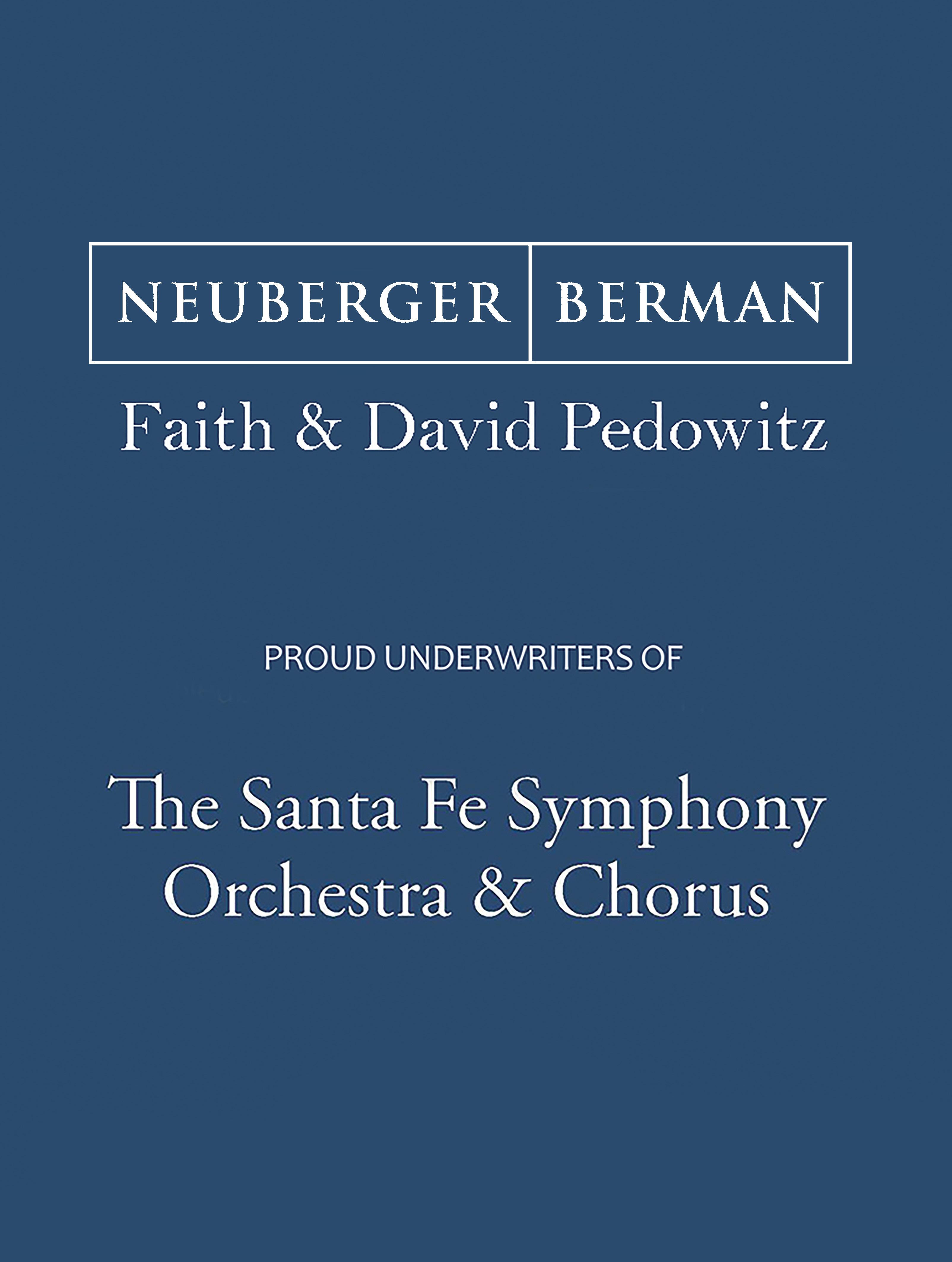
The Santa Fe Symphony Orchestra
The Santa Fe Symphony Chorus
Rebecca Robinson, Mezzo-Soprano
John Tiranno, Tenor
Adrian Smith, Baritone

Love cannot express the idea of music, while music may give an idea of love.
—Hector Berlioz
We proudly present Hector Berlioz' brilliant Symphonie dramatique in celebration of Maestro Figueroa’s 70th birthday and seventh incredible season with The Santa Fe Symphony.

HECTOR BERLIOZ
Born 1803, La Côte-St-André Died 1869, Paris
Roméo et Juliette: Symphonie dramatique, op.17
Roméo et Juliette, which Berlioz considered his finest work, was shaped by three quite different events. In 1827, he went to see productions in Paris of Hamlet and Romeo and Juliet. The 24-year-old composer did not speak a word of English, but he fell in love with Shakespeare’s language and drama (and with Harriet Smithson, the actress who played Ophelia and Juliet in those productions; he would marry her nine years later). The second event was the failure of his opera Benvenuto Cellini in September 1838, an event that Berlioz described as leaving him feeling “stretched on the rack.” That failure blocked any further possibility of his producing an opera in Paris.
But three months later came an unexpected stroke of good fortune. Nicoló Paganini had commissioned a work for viola and orchestra from Berlioz, who responded by composing Harold in Italy. Paganini never played Harold, but as a gesture of gratitude he gave Berlioz 20,000 francs. That unexpected gift set Berlioz free; he paid off his debts and was suddenly free to write exactly what he wanted to. And his thoughts immediately turned to Romeo and Juliet. Berlioz and the poet Emile Deschamps prepared a libretto, though they based it not directly on Shakespeare’s play, but on impresario David Garrick’s version of the play, which made a number of changes. Premiered in Paris in November 1839, Roméo et Juliette was a tremendous success, one of the few moments of triumph that Berlioz enjoyed in Paris.
Roméo et Juliette is in a completely original form. Berlioz called it a Dramatic Symphony with Choruses, Vocal Solos, and Prologue in Choral Recitative, after the tragedy of Shakespeare. Maybe the best way to describe Roméo et Juliette is to explain what it is not. It is not an opera. It is not a setting of Shakespeare’s play or language. Nor is it a symphony in the sense that Haydn, Mozart, Beethoven and Schubert understood the term. In Berlioz’s work, Romeo and Juliet do not actually appear, nor do Mercutio, Tybalt or the nurse. Instead, Berlioz uses a chorus and three vocal soloists to set the scene or respond to certain situations within the play, and he has the orchestra tell the story in some of the most beautiful music he ever wrote.
Berlioz divides the work into three parts that span 90 minutes. Part I bursts to life with a bristling orchestral fugato, full of trills and stinging attacks, that depicts the street warfare between the Montagues and the Capulets. Their fighting is interrupted by a magnificent entrance of brass instruments as the Prince enters
Sunday, February 19, 2023—4:00 pm
Carmen Flórez-Mansi, Choral Director
The Santa Fe Symphony Orchestra
The Santa Fe Symphony Chorus
HECTOR BERLIOZ
Roméo et Juliette: Symphonie dramatique, op.17
Act I: Introduction
Prologue
Act II: Romeo Alone
Love Scene
Queen Mab Scherzo
INTERMISSION
Act III. Juliet’s Funeral Procession
Romeo in the Tomb of the Capulets Finale
Rebecca Robinson, Mezzo-Soprano
John Tiranno, Tenor
Adrian Smith, Baritone
FULL CONCERT UNDERWRITER
CONDUCTOR'S CONCERT SPONSORSHIP
GUILLERMO FIGUEROA & VALERIE TURNER
CHORUS SPONSOR
and demands that the fighting stop. In the Prologue the chorus sets the scene: Two families are at war in Verona, and Romeo is distraught. In Strophes, the mezzo-soprano soloist sings (almost speaks) of the transforming power of love, and in the Recitatif the tenor soloist recalls Mercutio’s invocation of Queen Mab, the fairy of dreams and nocturnal adventures.
Part II brings three great orchestral movements: 40 minutes of instrumental music with only occasional commentary from the chorus. Romeo Alone finds him brooding and sad; the sound of distant revelries at the Capulets’ ball intrudes and soon takes over the movement, driving it to a powerful close. Love Scene is set on a “starlit night” in the Capulets’ garden. The guests departing the ball celebrate and call to each other, and then we move into the love music itself. At 18 minutes, this is the longest movement in Roméo et Juliette, and it is also the most heartfelt. Beginning softly with muted strings, it grows agitated and builds to a soaring climax. Arturo Toscanini, who made a memorable recording of Roméo et Juliette, reportedly called this movement “the most beautiful music in the world.” The Queen Mab Scherzo depicts the “fairy of dreams,” whom Mercutio had mentioned earlier. This is an extremely difficult movement for the orchestra. Berlioz marks it Prestissimo, sets it in 3/8, and mutes the strings, and on gossamer textures the music dances agilely along its furious tempo.
Part III opens with the Funeral Procession of Juliet (Berlioz assumes that we know the play and know that in the interim Tybalt has killed Mercutio, Romeo has killed Tybalt, and Friar Laurence has given Juliet the sleeping potion). Strings begin with a grieving fugue over which the women’s chorus sing “Jetez des fleurs” (“Cast the flowers”). Now comes the final orchestral movement, Romeo at the Tomb of the Capulets, which depicts Romeo’s anguish, Juliet’s awakening, their joy and despair, and their death. Berlioz marks the beginning Allegro agitato e disparato, con moto, and it gets off to a most violent start, but this quickly gives way to solemn chords and an Invocation, a brief lament from the winds. Juliet wakens to a great explosion of orchestral celebration, but the lovers’ happiness is short-lived–the music turns violent, falters, falls apart, and slips into silence as the lovers die.
Roméo et Juliette concludes with the Finale, and now Berlioz changes his idiom completely. He leaves behind purely orchestral movements and instead concludes with a scene that seems to have come straight out of an opera. Brass fanfares give way to crowds in the streets of Verona, confused and wondering what has happened. And now Friar Laurence—the one character from Shakespeare’s play to actually “appear” in the piece—explains that he had married Romeo and Juliet and given her the potion that simulated death. Romeo, mistakenly thinking her dead, took poison in the tomb, but Juliet suddenly woke and they shared a brief moment of happiness before Romeo died (remember that Berlioz was working from David Garrick’s version of the play, not from Shakespeare’s) and she stabbed herself with his dagger. Friar Laurence asks the two rival families to reconcile, but they refuse, and fighting erupts on music from the very beginning. Friar Laurence silences the families, invokes a curse if they refuse to reconcile, and asks God to teach them love and mercy. The families swear a joint oath of reconciliation and friendship, and Roméo et Juliette concludes in operatic splendor.
One of those who heard the 1839 premiere of Roméo et Juliette was an unknown 26-year-old composer named Richard Wagner. He was astonished by the originality of Berlioz’s conception and by the power of music by itself to advance action and create an emotional response; he called Roméo et Juliette “a revelation.” Twenty-five years later, Wagner sent Berlioz a copy of the score to his latest opera. His inscription is revealing:
From the composer of Tristan und Isolde to the composer of Roméo et Juliette

santafesymphony.org



Praised for her “darkly pretty voice,” mezzo-soprano Rebecca Robinson has made a name for herself as a versatile and thoughtful performer. A Colorado resident, Rebecca performs regularly with the Central City Opera, Colorado Bach Ensemble, Boulder Chamber Orchestra, and as a soloist with the Colorado Masterworks Chorale. Her operatics roles include the title in Rossini’s La Cenerentola (Cinderella), Ottone (L’incoronazione di Poppea), Dorabella Cosi fan tutte), Hansel (Hansel und Gretel), Romeo (I Capuleti e i ), Hermia (A Midsummer Night’s Dream), among others. No stranger to concert work, Rebecca has been seen with the Colorado Symphony Orchestra, the Bellingham Festival of Music, the Evergreen Chamber Orchestra, the Lynn Philharmonia, and is thrilled to be returning to The Santa Fe Symphony in 2023.
John Tiranno, Tenor
The New York Times as “ardent and mellifluous” and a “clear-voiced tenor,” John's recent engagements include the role of Man 1 in Robert Xavier Rodriguez’s opera Frida with Opera Southwest as well as El Paso Opera, performances of Mahler’s Songs of a Wayfarer and Schumann’s Dichterliebe with ChatterABQ, as well as opera concerts with the New Mexico Performing Arts Society. Notable past engagements include Mahler’s Symphony No. 8 (Oratorio Society of New York & Brott Music Festival), Handel’s Messiah (The Santa Fe Symphony, Dayton Philharmonic, Masterwork Chorus, & Worcester Chorus), Mozart’s Requiem, Bach's B Minor Mass, the US premiere of Juraj Filas’ Oratio Requiem—Spei (Sacred Music in a Sacred Space), and more.
Adrian Smith, Baritone
Hailed for his “big bronze voice” and commanding stage presence, baritone Adrian Smith has garnered acclaim for performances across the country. Of his Count Monterone in North Carolina Opera’s Rigoletto, critics said, “Adrian Smith's Monterone poured out imposing tone in his outrage against the Duke.” Of a performance of La fanciulla del West, critics said, “Adrian Smith’s well-voiced Larkens was memorably affecting.” Adrian holds degrees from Lenoir-Rhyne University and Boston University. He was a prize winner in the Heafner/Williams Vocal Competition, the Shreveport Opera Competition, the Birmingham Opera Vocal Competition.

“
—Ludwig van Beethoven
Born 1881, Hungary
Died 1945, New York City
Concerto for Orchestra, Sz 116
Bartók and his wife fled to the United States in October 1940 to escape World War II and the Nazi domination of Hungary, but their hopes for a new life in America were quickly dashed. Wartime America had little interest in Bartók or his music, the couple soon found themselves living in near-poverty, and then Bartók’s health failed. He was hospitalized and fell into a deep depression, convinced that he would neither recover nor compose again.
Fritz Reiner and Joseph Szigeti convinced Serge Koussevitzky to ask Bartók for a new work, and the conductor visited him in the hospital to tell him that the Koussevitzky Foundation had commissioned an orchestral work for which it would pay $1,000. Bartók refused, believing he could not complete such a work, but Koussevitzky gave him $500 and insisted that the money was his whether he finished it or not. The visit had a transforming effect: Soon Bartók was well enough to travel to upstate New York, where he began composing. He completed the Concerto for Orchestra score eight weeks later.
The concerto premiered in December 1944 in Boston. It was an instant success, and Bartók reported that Koussevitzky called it “the best orchestra piece of the last 25 years.” Bartók prepared a detailed program note:
“The title of this symphony-like orchestral work is explained by its tendency to treat the single orchestral instruments in a concertant or soloistic manner. The ‘virtuoso’ treatment appears, for instance, in the fugato section of the development of the first movement (brass instruments), or in the perpetuum-mobile-like passage of the principal theme of the last movement (strings), and especially in the second movement, in which pairs of instruments consecutively appear with brilliant passage …The general mood of the work represents, apart from the jesting second movement, a gradual transition from the sternness of the first movement and the lugubrious death-song of the third, to the life-assertion of the last one.”
In the first movement, the music comes to life with a brooding introduction, and flutes and trumpets hint at theme-shapes that will return later. The movement takes wing at the Allegro vivace with a leaping subject for both violin sections, and further themes quickly follow. The movement drives to a resplendent close, stamped out by the brass. In Giuoco delle Coppie (Game of Couples), Bartók varies the sound by having each “couple” play in different intervals: The bassoons are a sixth apart, the oboes a third, the clarinets a seventh, the flutes a fifth, and finally the trumpets a second apart. At the center of the Concerto lies the dark third movement, Elegia, based in part on material in the introduction to the first movement. This is one of the finest examples of Bartok’s “night-music,” with a keening oboe accompanied by spooky swirls of sound. In Intermezzo Interrotto (Interrupted Intermezzo), a sense of humor emerges with a woodwind tune whose shape
Sunday, March 26, 2023—4:00 pm
Concerto for Orchestra, Sz 116
Introduzione: Andante non troppo
—Allegro vivace
Giuoco delle coppie: Allegretto scherzando
Elegia: Andante non troppo
Intermezzo interrotto: Allegretto
Finale: Pesante—Presto
Symphony No. 7 in A Major, op.92
Poco sostenuto—Vivace
Allegretto
Presto
Allegro con brio


and asymmetric meters suggest an Eastern European origin, continuing with a glowing viola melody derived from a Zsigmond Vincze operetta tune with the words “You are lovely, you are beautiful, Hungary.” Then Bartók quotes the ostinato theme from Shostakovich’s Leningrad Symphony (a theme he objected to, as it was associated with the Nazi invaders) and makes the orchestra “laugh” at it, treating it to a series of sneering variations and lampoons with rude smears of sound. The movement ends with a return to the Hungarian tune, now sung hauntingly by muted violins.
The Finale begins with a fanfare for horns, and then the strings take off and fly: This is the perpetual motion Bartók mentioned in his note for the premiere. This movement is of a type Bartók had developed over the previous decade, the dance-finale, music of celebration driven by a wild energy. Yet it is a most disciplined energy, as much of the development is built on a series of fugues. The piece ends with one of the most dazzling conclusions to any piece of piece of music: The entire orchestra rips straight upward in a dizzying threeoctave rush of sound.
Born 1770, Bonn Died 1827, Vienna
Symphony No. 7 in A Major, op.92
By the time Beethoven turned 40, his hearing had deteriorated to the point where he was virtually deaf. But he was still riding that white-hot explosion of creativity that has become known, for better or worse, as his “Heroic Style.” Over the decade-long span of that style (1803 to 1813), Beethoven essentially re-imagined music and its possibilities. The works that crystalized the Heroic Style—the Eroica and the Fifth Symphony— unleashed a level of violence and darkness previously unknown in music (forces that Beethoven’s biographer, Maynard Solomon, described as “hostile energy”) and then triumphed over them. In these symphonies, music became not a matter of polite discourse but of conflict, struggle and resolution.
A year later, the composer began a new symphony that would differ sharply from those two famous predecessors. Gone is the sense of cataclysmic struggle and hard-won victory that had driven those earlier symphonies. There are no battles fought and won in the Seventh Symphony; instead, this music is infused from its first instant with a mood of pure celebration. Such a spirit has inevitably produced a number of interpretations as to what this symphony is “about”: Berlioz heard a peasants’ dance in it, Wagner called it “the apotheosis of the dance,” and Maynard Solomon
suggested that it is the musical representation of a festival, a brief moment of pure spiritual liberation.
But it may be safest to leave the issue of “meaning” aside and instead listen to the Seventh Symphony simply as music. There had never been music like this before, nor has there been since; it can be argued that it contains more energy than any other piece of music ever written. Much has been made (correctly) of Beethoven’s ability to transform small bits of theme into massive symphonic structures, but in the Seventh he begins not so much with theme as with rhythm: He builds the entire symphony from what are almost scraps of rhythm, tiny figures that seem unpromising, even uninteresting, in themselves. Gradually, he unleashes the energy locked up in these small figures and from them builds one of the mightiest symphonies ever written.
The first movement opens with a slow introduction that is so long it almost becomes a separate movement of its own. Tremendous chords punctuate the slow beginning, which gives way to a poised duet for oboes. The real effect of this long Poco sostenuto, however, is to coil the energy that will be unleashed in the rest of the movement. The second movement, in A minor, is one of Beethoven’s most famous (at the work’s premiere and at several subsequent performances, the audience demanded an encore of the movement), but the debate continues as to whether it really is slow. Beethoven could not decide whether to mark it Andante (a walking tempo) or Allegretto (a moderately fast pace). He finally decided on Allegretto, though the actual pulse is somewhere between those two.
The Scherzo explodes to life on a theme full of grace notes, powerful accents, flying staccatos and timpani explosions. This alternates with a trio section for winds reportedly based on an old pilgrims’ hymn. Beethoven offers a second repeat of the trio, then seems about to offer a third before five abrupt chords drive the movement to its close. These chords set the stage for the Allegro con brio, again built on the near-obsessive treatment of a short rhythmic pattern, in this case the movement’s opening four-note fanfare. The four-note pattern punctuates the entire movement. The conclusion is Bacchanalian in its wild power; no matter how many times one has heard it, the ending of the Seventh Symphony remains one of the most exciting moments in all of music.
—Program Notes by Eric Bromberger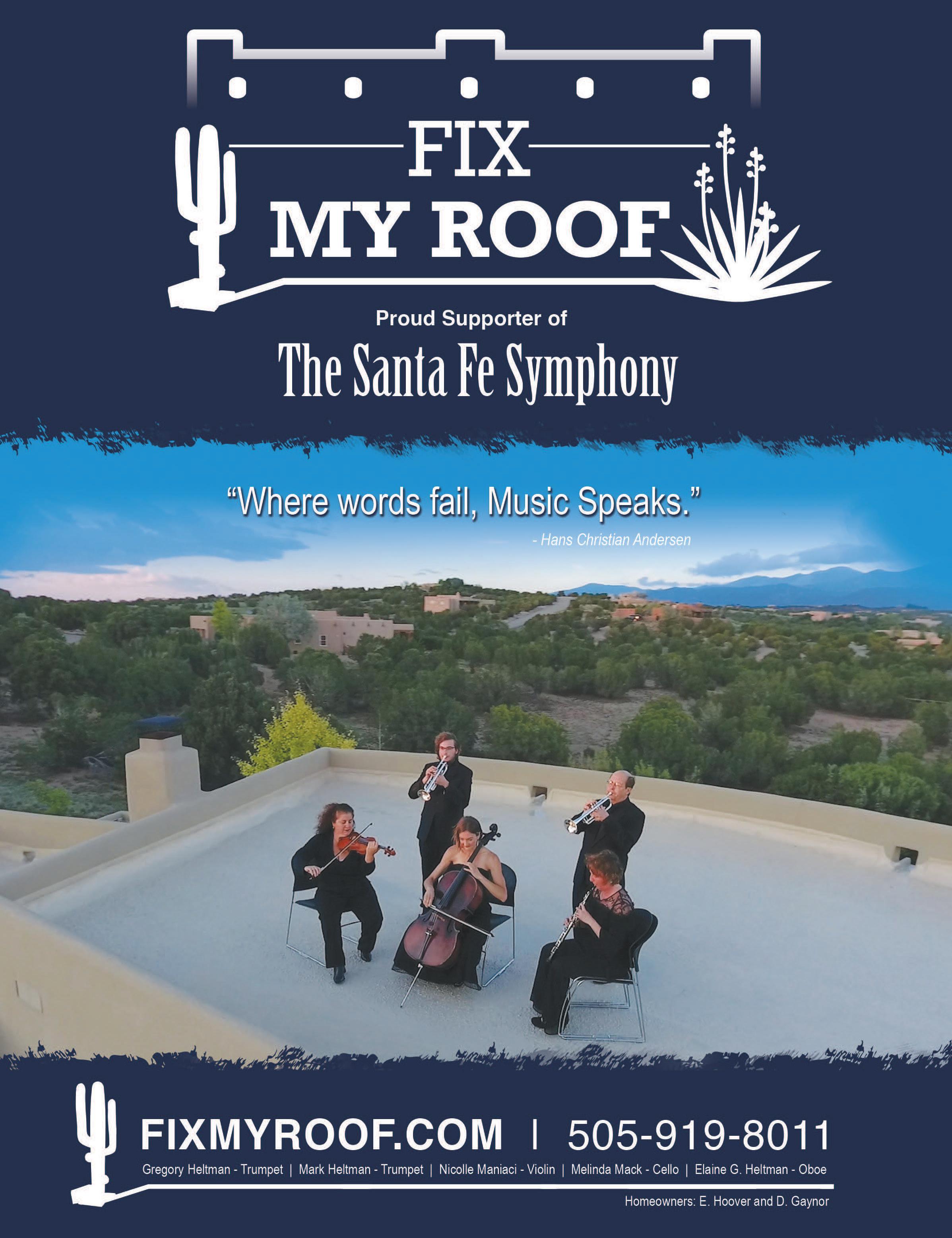
The Santa Fe Symphony Orchestra
Samuel Vargas, Violin
2021 Robert Frederick Smith
First Prize Winner
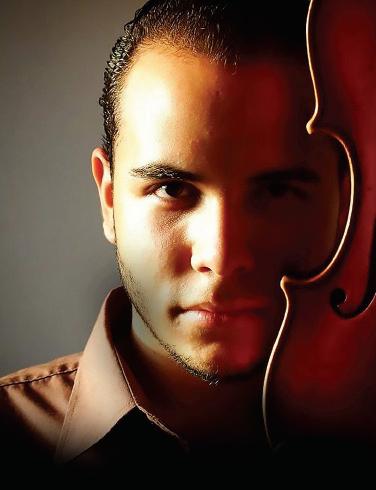
Music expresses the motion of the waters,the play of curves described by changing breezes.
—Claude Debussy

WildEarth Guardians joins us in the first of a three-year co-presentation celebrating the wonders of planet Earth. This brilliant performance featureS rising star Samuel Vargas, as part of an ongoing partnership with the Sphinx Organization. Sphinx is dedicated to transforming lives through the power of diversity in the arts, honoring the outstanding achievements of young Black and Latinx classical string players.
 GUILLERMO FIGUEROA , PRINCIPAL
GUILLERMO FIGUEROA , PRINCIPAL
FRANZ JOSEPH HAYDN
Born 1732, Rohrau
Died 1809, Vienna
Symphony No. 6, “Le Matin” (Morning)
Prince Paul Anton Esterhazy hired Haydn as his ViceKapellmeister in May 1761, and the composer immediately took up his duties at the Esterhazy palace in the small town of Eisenstadt, about 30 miles south of Vienna. The old Kapellmeister, Gregor Werner, was being eased upstairs, and the 29-year-old Haydn was charged with revitalizing the court orchestra. He auditioned players (many of whom he knew from Vienna) and assembled an orchestra consisting of flute, two oboes, bassoon, two horns and a small string section.
According to lore, the Prince suggested that Haydn compose a trilogy of symphonies that would take as their subject morning, noon and night. Haydn was not attracted to the idea of writing descriptive music, but he was alert enough to take the prince’s suggestion. His real intention in writing these three symphonies, however, may have been to show off his own talents and the orchestra he had helped to create. Haydn gave the three symphonies their French nicknames–Le matin, Le midi and Le soir–perhaps as a nod to the taste for things French in Vienna at that time.
These symphonies, Nos. 6-8, date from 1761, during Haydn’s first months in his new position. The symphony as a form was taking shape in these years (in fact, it was largely Haydn who would define that form), and these three early works show certain elements that did not survive in the symphony of the classical period—primarily the extended use of solo players who stand in contrast to the larger orchestra. Many have been quick to identify this as the influence of the baroque concerto grosso, although there is disagreement as to how well Haydn knew that form. In any case, the Symphony No. 6 has important solo parts for winds, violin, cello and doublebass.
Haydn may have felt an aversion to descriptive music, but the Adagio that opens the first movement of the Symphony No. 6 is clearly a depiction of the rising sun. Across that six-measure introduction, the music begins with softly pulsing violins, climbs upward and gathers strength, and lands on a resplendent fortissimo chord. From out of this “sunrise,” the music leaps ahead smartly at the Allegro, which is in a tentative sonata form: Its second subject, built on nicely calculated echo effects, makes a fleeting appearance and then never returns.
The longest of the movements, the Adagio—scored only for strings—offers extended solos for violin, cello and doublebass. The movement is in ternary form: The opening Adagio leads to
SUNDAY, APRIL 16, 2023—4:00 PM
JOSEPH HAYDN
Symphony No. 6
“Le Matin” (Morning)
Adagio—Allegro
Adagio—Andante—Adagio
Menuet
Allegro
SAMUEL COLERIDGE-TAYLOR
Violin Concerto in G Minor, op.80
Allegro maestoso
Adante semplice—Adantino
Allegro molto—Moderato
Samuel Vargas, Violin
CLAUDE DEBUSSY La mer
De l’aube à midi sur la mer
[From Dawn to Noon on the Sea]
Jeux des vagues [Play of the Waves]
Dialogue du vent et de la mer
[Dialogue of Wind and Sea]

the long central Andante; Haydn rounds off matters with a modified reprise of the opening Adagio. The wind band returns for the sturdy Menuetto; H.C. Robbins Landon describes its trio section as sounding “far more baroque than anything in [Haydn’s earlier] symphonies.” It is largely a bassoon solo over bass-line accompaniment. The Finale showcases the orchestra and its various principal players: Solo flute leads the way, and in the course of the movement comes an extended passage of concertante writing for solo violin, as well as solos for various other instruments.
Hearing this music without knowing that it is nicknamed "Le Matin," would we guess that it was inspired by the morning? Almost certainly not. What we do recognize in this impressive symphony is the high quality of the orchestra Haydn had created for Prince Paul Anton and the crisp writing for its solo players.
Born 1875, London
Died 1912, Croydon
Violin Concerto in G Minor, op.80
Born in London, Samuel Coleridge-Taylor was the son of an Englishwoman and a doctor from Sierra Leone. His father, a descendant of slaves from North America, returned to Africa before his son was born, and his mother named the boy after the English poet Samuel Taylor Coleridge, reversing the poet’s final two names in the process.
The boy was raised by his mother and her family, who were quite musical: They taught Samuel to play the violin and encouraged him to make a career in music. At age 15 he entered the Royal College of Music, where he studied with Charles Villiers Stanford. After graduation, he supported himself by composing, conducting, and teaching. He very early attracted the support of Edward Elgar, who recommended that the Three Choirs Festival commission a piece from him; this would be his Ballade in A Minor for orchestra, which helped establish his reputation.
Coleridge-Taylor was very interested in his heritage as the descendant of African-American slaves, and he dedicated himself to improving the condition of people of African descent everywhere. He made three extended tours of the United States, where he became acquainted with African-American and American
Indian music, and he would eventually incorporate some of this into his music.
The Violin Concerto in G Minor was the final major work of Coleridge-Taylor’s all-too-brief career. (He died of pneumonia at age 37). It was commissioned by the violinist Maud Powell, who had been an early champion of his music. The concerto went through two quite different versions. The first was based on what Coleridge-Taylor called “Negro melodies,” but he was so dissatisfied with that version that he burned it and wrote an entirely new concerto, which is the version performed today.
The Concerto in G Minor emphasizes both the lyric and virtuosic sides of the violin. The Allegro maestoso bursts to life with a grand fanfare for full orchestra. This figure, full of triplet rhythms, will return in various forms throughout the piece, and it is a mark of the composer’s sophistication that this fanfare contains the dancing, dotted rhythm that will form the movement’s second subject. The soloist enters on the fanfare theme, and soon the music leaps ahead on a Vivace based on the dotted figure. Near the end, Coleridge-Taylor gives the soloist a cadenza that is accompanied throughout by a quiet timpani roll, and the movement concludes with a powerful passage marked Molto maestoso (“very majestic”) as the violin sails high over powerful chords from the orchestra.
The Andante semplice takes us into a different world entirely. The orchestral strings, now muted, lay out the delicate principal theme, and soon the soloist takes this up and elaborates it. The orchestra leads the way into the central episode, marked Andantino, before the return of the opening material and a conclusion on the violin’s shimmering D, high above the orchestra’s final chords.
The concluding Allegro molto gets off to a fierce start with great orchestral salvos based on a dotted 3/8 figure. The soloist quickly picks these up and transforms them into a dancing finale in a generalized rondo form. There is flowing secondary material along the way, and as we approach the end, Coleridge-Taylor brings back the grand fanfare that opened the first movement.
Maud Powell gave the US premiere performance on June 4, 1912, at the Norfolk Music Festival. The first public performance in England would place in London four months later, but by that time Coleridge-Taylor had passed away.
Born 1862, Saint-Germain-en-Laye Died 1918, Paris
La mer
In the summer of 1903, the 41-year-old Debussy took a cottage in the French wine country, where he set to work on a new orchestral piece inspired by his feelings about the sea. To André Messager he wrote, “I expect you will say that the hills of Burgundy aren’t washed by the sea and that what I’m doing is like painting a landscape in a studio, but my memories are endless and are in my opinion worth more than the real thing which tends to pull down one’s ideas too much.”
That last phrase is a key to this music. While each of its three movements has a descriptive heading, La mer is not an attempt to describe the ocean in sound. Had Richard Strauss written it, he would have made us hear the thump of waves along the shoreline, the cries of wheeling sea-birds, the hiss of foam across the sand. Debussy’s aims were far different. He was interested not in musical scene-painting but in writing music that makes us feel the presence of the ocean; what mattered for Debussy was not the thing itself but his idea of that thing. At the premiere in 1905, the critic Pierre Lalo complained: “I neither hear, nor see, nor feel the sea.” But La Mer sets out not to make us see whitecaps but to awaken in us our own sense of the sea’s elemental power and beauty.
Debussy subtitled La mer “Three Symphonic Sketches,” and it consists of two moderately paced movements surrounding a scherzo. But these movements are not in the forms of German symphonic music, nor does Debussy write melodic themes capable of symphonic development. Rather, he creates what seem fragments of musical materials—hints of themes, rhythmic shapes, flashes of color—that will reappear throughout, like kaleidoscopic bits in an evolving mosaic of color and rhythm.
From Dawn til Noon on the Sea begins with a quiet murmur, a quiet that is nevertheless full of elemental strength. Out of this darkness, glints of color and motion emerge, and solo trumpet and English horn share a fragmentary tune that will return, both thematically and rhythmically, here and in the final movement. The movement builds to an unexpectedly powerful climax and a solitary brass chord winds the music into silence. Play of the Waves opens with shimmering swirls of color, and this movement is brilliant, dancing and surging throughout. It has a sense of fun and play, as a scherzo should. One moment it can be sparkling and light, the next it will surge up darkly. The movement draws to a delicate close in which a few solo instruments seem to evaporate into the shining mist.
The mood changes sharply at the beginning of the final movement. Debussy specifies that he wants Dialogue of the Wind and the Sea to sound “animated and tumultuous.” The ominous growl of lower strings prefaces a restatement of the trumpet tune from the very beginning, and soon the horn chorale returns as well. A gentle chorale for woodwinds sings wistfully at first, but the music builds to a huge explosion. Moments later, the pattern repeats, with the music again becoming calm and then hurtling to a tremendous finish.
—Program Notes by
Eric Bromberger
Violinist Samuel Vargas Teixeira has received wide recognition for his powerful artistry and awards including First Prize of the Sphinx Competition (2021), Yamaha Young Performing Artist (2019), Grand Prize of the Jefferson Symphony Orchestra Concerto Competition (2019), First Prize in Atlanta Georgia's Philharmonic Competition (2017), and Concertmaster Ambassador of the United Nations (2014).
Vargas holds the Pin Artistic Merits from “City Key of Prince George” and “Central Bank in Canada,” and has performaed on tours in 40 countries, collaborating with acclaimed artists like Gustavo Dudamel, Simon Rattle, Daniel Barenboim, Claudio Abbado, and Christian Vasquez.
Vargas began his violinistic journey through Venezuela’s El Sistema program under the tutelage of Luis Miguel Gonzalez. In 2017 Samuel won the prestigious Woodruff Award, enabling him to study with his current mentor and professor Sergiu Schwartz at the Schwob School of Music at CSU.
When motivation abandons you, discipline becomes the primary source which allows you to keep working towards your purpose in life.
He is the founder and president of the Samuel Vargas International Music Foundation, an organization which is enriching communities and society through the power of classical music, emphasizing a holistic approach to music education supporting students in all areas of studies and well-being. Through his passionate work and entrepreneurship, Samuel has founded eight active Venezuelan chamber orchestras—he currently mentors young musicians in the US and South America.
Learn more at santafesymphony.org/soloists/vargas
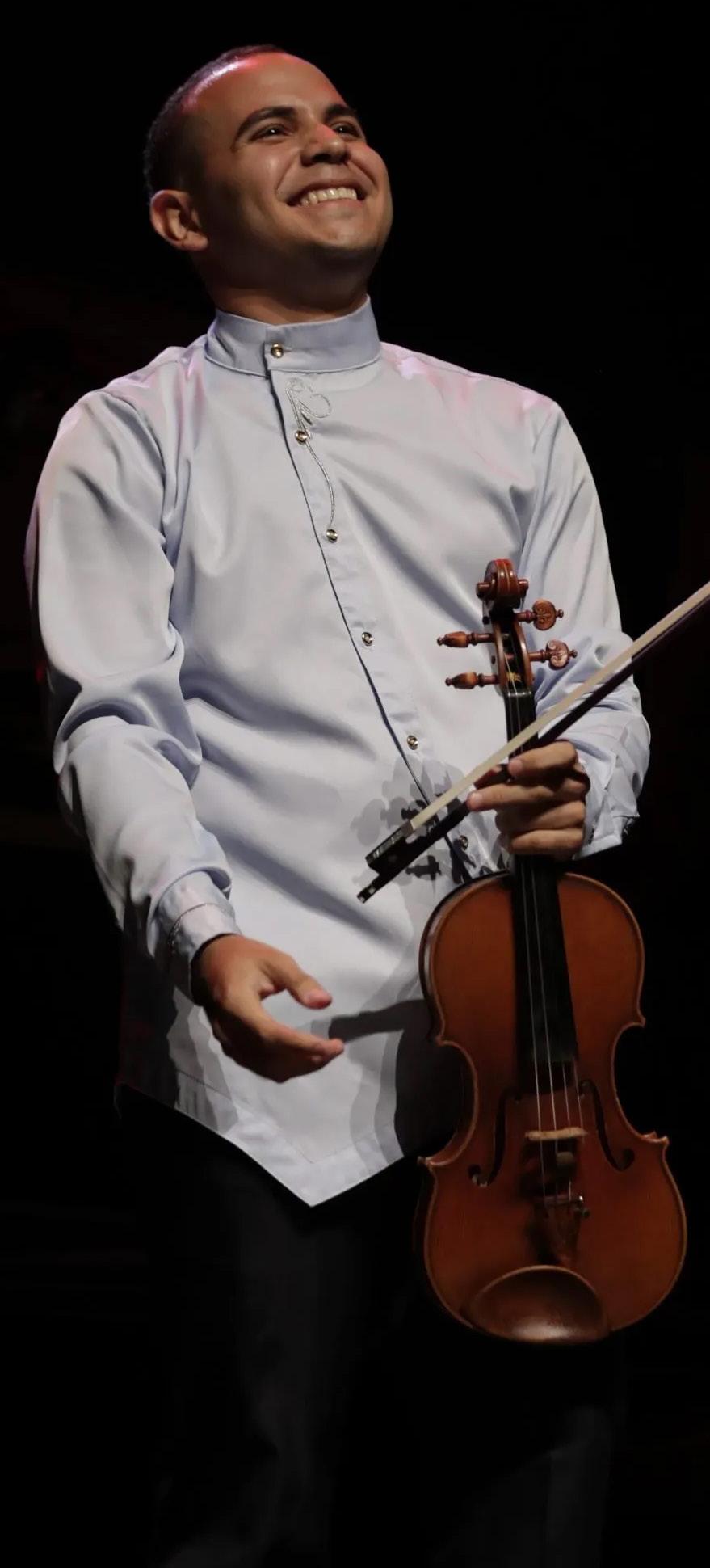


The Santa Fe Symphony Orchestra
Zlatomir Fung, Cello
XVI International Tchaikovsky Competition Gold Medalist

The muse doesn't come without being called.
—Pyotr Tchaikovsky
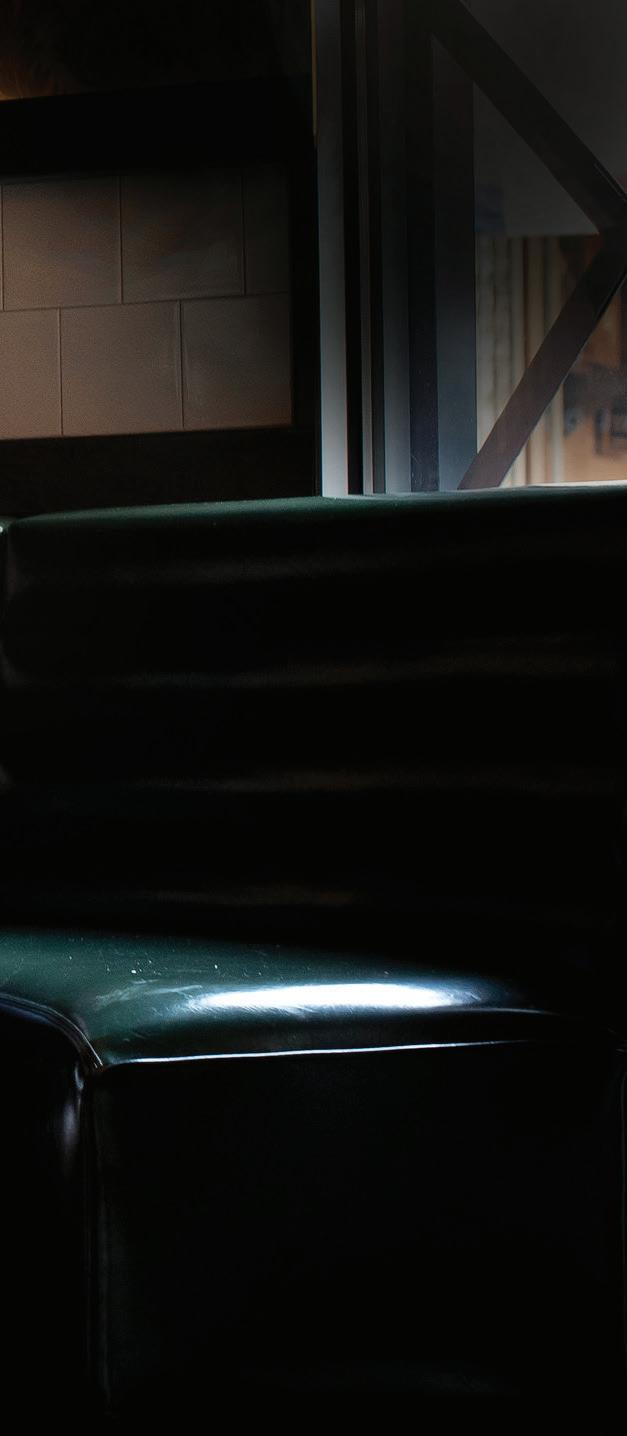
Born 1812, Friedland, Germany
Died 1883, Berlin
Faust-Overture, op.46
Very few audiences today know the music of Emilie Mayer, but in the late 19th century she was one of those rarest people—a female composer whose music was performed frequently and admired by critics. Her path to that fame was a difficult one, however. Born into a middle-class family in what is today far northwestern Germany, Mayer lost her mother when she was two, and 26 years later her father shot himself on the anniversary of burying his wife.
Mayer had studied the piano when she was a child, but had never made any effort in the direction of a career in music. Now, perhaps propelled by the family catastrophe, she made the bold decision to study composition. She moved to Stettin (now in Poland) and studied with Carl Loewe, the great singer and composer of songs. Loewe immediately recognized Mayer’s talent, saying “Such a god-given talent as hers has not been bestowed upon any other person I know.” She soon achieved remarkable success when two of her symphonies were performed in Stettin to admiring reviews. In 1847, at age 35, she moved to Berlin to continue her studies with Adolf Bernhard Marx, and three years later an orchestra in that city gave an all-Mayer concert.
Over the remaining three decades of her life she composed, performed and traveled throughout the German-speaking world, and her music was widely admired. Mayer was prolific; her catalog of works includes one opera, eight symphonies, seven overtures, seven string quartets, twelve cello sonatas and nearly 130 songs.
And then … her music essentially vanished. Much of it had not been published, performances dwindled, and before long she was forgotten; the 1980 New Grove Dictionary of Music and Musicians made no mention of her at all. Now, very gradually, her music is being rediscovered, performed and recorded.
The publication of the two parts of Goethe’s Faust (in 1808 and 1832) galvanized composers, who saw in that striving, doomed figure an ideal subject for music. Among the works inspired by that tragic figure were Berlioz’s Damnation of Faust , Wagner’s Faust Overture, Liszt’s Faust Symphony, Gounod’s opera Faust and Schumann’s Scenes from Goethe’s Faust. Emilie Mayer composed her Faust-Overture in 1880, when she was 68, and it was premiered in February 1881 in
SUNDAY, MAY 7, 2023—4:00 pm
EMILIE MAYER Faust-Overture, op.46Cello Concerto in E Minor, op.85
Adagio; Moderato
Lento; Allegro molto
Adagio
Allegro; Moderato; Allegro, ma non troppo
Zlatomir Fung, Cello
PYOTR TCHAIKOVKY
Symphony No. 5
Andante—Allegro con anima
Andante cantabile con alcuna licenza
Valse: Allegro moderato
Finale: Andante maestoso—Allegro vivace
FULL CONCERT UNDERWRITER
REACH FOR THE STARS
Berlin; further performances followed in Karlsbad, Prague, and Vienna.
Mayer casts her work as a concert overture rather than as a tone poem that “tells” the story of Faust, Mephistopheles and Marguerite: A slow introduction gives way to an Allegro in sonata form based on several different themes, and the overture moves from its dark opening in B minor to a resounding conclusion in B major. But it is tempting to seem to make out certain figures in this abstract music: Is the sinuous introduction a portrait of Mephistopheles? Is the vigorous Allegro a depiction of the striving Faust? Is the lyric secondary material associated with Marguerite? The only clue that Mayer offers comes in the overture’s closing pages: At the moment the music moves from B minor to B major, she writes in the score: Sie ist gerettet (“She is saved”), a reference to Marguerite’s redemption in Part II of Goethe’s Faust. Otherwise, her powerful overture remains abstract, a work inspired by Faust rather than attempting to depict its events in music.r
Born 1857, Worcestershire, England
Died 1934, Worcestershire, England
Cello Concerto in E Minor, op.85
Elgar completed his Cello Concerto in 1919 at a time of great personal distress brought on by his wife’s illness and by the impact of World War I. His Cello Concerto is a work of great beauty and great contradiction. Some of these contradictions rise from the sharp differences of style within the music: Elgar scores the concerto for a large orchestra, but then can use it with a chamber-like delicacy. The mood of the music can move from a touching intimacy one moment to extroverted concerto style the next. We almost sense two completely different composers behind this concerto. One is the public Elgar―strong, confident, declarative―while the other is the private Elgar, torn by age, doubt, and the awful comprehension that all the certainties he had known had been obliterated.
We seem to hear the old, confident Elgar in the cello’s sturdy opening recitative, marked nobilmente, yet at the main body of the movement violas lay out the movement’s haunting main theme, which rocks along wistfully. This somber idea sets the mood for the entire opening movement. Throughout, Elgar reminds the soloist to play dolcissimo and espressivo.
The Allegro molto really flies―it is a sort of perpetualmotion movement, and Elgar marks the cello’s part leggierisimo “as light as possible.” In the Adagio Elgar writes long, lyric lines for the soloist, who plays virtually without pause. The finale at first seems full of enough confidence to knit up the troubled edges of what has gone before. But beneath the jaunty surface of this music, another mood ―dark and uneasy―begins to intrude and finds its clearest expression in the extended Poco più lento section near the end of the music. Gone is the swagger, gone is the confident energy, and we sense that in place of the music Elgar wanted to write, he is giving us the music he had to write. Wandering, pained, diseased, this music seems to speak directly from the heart, and even the vigorous concluding flourish does little to dispel the somber mood that has touched so much of this concerto.
Born 1840, Votkinsk
Died 1893, St. Petersburg
Symphony No. 5 in E Minor, op.64
Tchaikovsky began work on the Fifth Symphony in 1888, after a decade-long creative dry spell that had been precipitated by a nervous breakdown. He had moved into a villa in Frolovskoye, northwest of Moscow, where he could work and take long walks in the woods. He conducted the premiere in St. Petersburg later that year and, despite some initial misgivings, he was finally convinced that he had regained his creative powers.
While it lacks the white-hot fury of the Fourth Symphony or the dark intensity of the Sixth, the Fifth Symphony—full of those wonderful Tchaikovsky themes, imaginative orchestral color, and excitement—has become one of his most popular works, so popular in fact that it takes a conscious effort to hear this symphony with fresh ears. As he did in the Fourth, Tchaikovsky builds this symphony around a motto-theme, and in his notebooks he suggested that the motto of the Fifth Symphony represents “complete resignation before fate.” But that is as far as the resemblance goes, for Tchaikovsky supplied no program for the Fifth Symphony, nor does this music seem to be “about” anything. Tchaikovsky apparently regarded his Fifth Symphony as abstract music.
Clarinets introduce the somber motto-theme at the beginning of the slow introduction, and gradually this leads to the main body of the movement, marked Allegro con anima. Over the orchestra’s steady tread, solo clarinet and bassoon sing the surging main theme of this sonata-form movement, and there follows a wealth of thematic material. This is a lengthy movement, and it is built on three separate-theme groups, full of soaring and sumptuous Tchaikovsky melodies. The development fuses these lyric themes with episodes of superheated drama, and listeners will hear the motto-theme hinted at along the way. With its furious energy finally exhausted, this movement draws to a quiet close.
Deep string chords at the opening of the Andante cantabile introduce one of the great solos for French horn, and a few moments later the oboe has the graceful second subject. For a movement that begins in such relaxed spirits, this music is twice shattered by the return of the motto-theme, which blazes out dramatically in the trumpets. Tchaikovsky springs a
surprise in the third movement: Instead of the expected scherzo, he writes a lovely waltz. He rounds off the movement beautifully, with an extended coda based on the waltz tune.
However misty that theme may have seemed at the end of the third movement, it comes into crystalline focus at the beginning of the finale. Tchaikovsky moves to E major here and sounds out the motto to open this movement. This music seems to have arrived at its moment of triumph even before the last movement has fairly begun. The main body of the finale, marked Allegro vivace, leaps to life, and the motto-theme breaks in more and more often as it proceeds. The movement drives to a great climax, then breaks off in silence. But this is a trap, designed to trick the unwary and propel them into premature applause, for the symphony is not yet over. Out of the ensuing silence begins the real coda, and the motto-theme now leads the way on constantly accelerating tempos to the (true) conclusion in E major.
—Program Note by Eric Bromberger
At Century Bank, we believe in community first. For over 135 years, this belief has been the foundation on which we’re built. Our communities inspire us to remain connected as we offer support with the best in local banking.
The first American in four decades and youngest musician ever to win First Prize at the International Tchaikovsky Competition Cello Division, Zlatomir Fung is poised to become one of the preeminent cellists of our time. Astounding audiences with his boundless virtuosity and exquisite sensitivity, the 23-year-old has already proven himself to be a star among the next generation of world-class musicians. A recipient of the Borletti-Buitoni Trust Fellowship 2022 and a 2020 Avery Fisher Career Grant, Fung's impeccable technique demonstrates mastery of the canon and exceptional insight into the depths of contemporary repertoire.
In the 2022–2023 season, Zlatomir performs with orchestras and gives recitals in all corners of the world. Orchestral engagements include the BBC and Rochester Philharmonics, Milwaukee, Reading, Lincoln, Ridgefield and Sante Fe Symphonies, Baltimore Chamber Orchestra, Sarasota Orchestra, and APEX Ensemble. He gives the world premiere of a new cello concerto by Katherine Balch with the Dallas Symphony Orchestra. He plays recitals throughout North America with pianists Benjamin Hochman, Dina Vainshtein, and Janice Carissa, including stops in New York City; Chicago; San Diego and Berkeley; Los Alamos; Rockville, ML; Melbourne, FL; Vancouver and Sechelt, BC; Northampton, MA; Province, RI; Burlington, VT; and Waterford, VA; Tours of Europe and Asia include a recital at Wigmore Hall and two performances at Cello Biënnale Amsterdam.
As a soloist, Fung has appeared with the Detroit, Kansas City, Seattle, Utah, Greensboro, Ann Arbor, and Asheville Symphonies, among many others. Past recital highlights include his Carnegie Hall Weill Recital Hall debut with pianist Mishka Rushdie Momen and multiple tours throughout North America, Europe, and Asia. As a chamber musician, he has been presented by the Philadelphia Chamber Music Society, Philharmonic Society of Orange
A winner of the 2017 Young Concert Artists International Auditions and the 2017 Astral National Auditions, Zlatomir has taken the top prizes at the 2018 Alice & Eleonore Schoenfeld International String Competition, 2016 George Enescu International Cello Competition, 2015 Johansen International Competition for Young String Players, 2014 Stulberg International String Competition, and 2014 Irving Klein International Competition. He was selected as a 2016 US Presidential Scholar for the Arts and was awarded the 2016 Landgrave von Hesse Prize at the Kronberg Academy Cello Masterclasses.
Of Bulgarian-Chinese heritage, Zlatomir began playing cello at age three. Fung studied at The Juilliard School under the tutelage of Richard Aaron and Timothy Eddy. Fung has been featured on NPR’s Performance Today and has appeared on From the Top six times. In addition to music, he enjoys cinema, reading, and blitz chess.
Learn more at santafesymphony.org/soloists/fung.
At his young age, Zlatomir seems to be one of those rare musicians with a Midas touch: he quickly envelopes every score he plays in an almost palpable golden aura.
—Bachtrack

santafesymphony.org



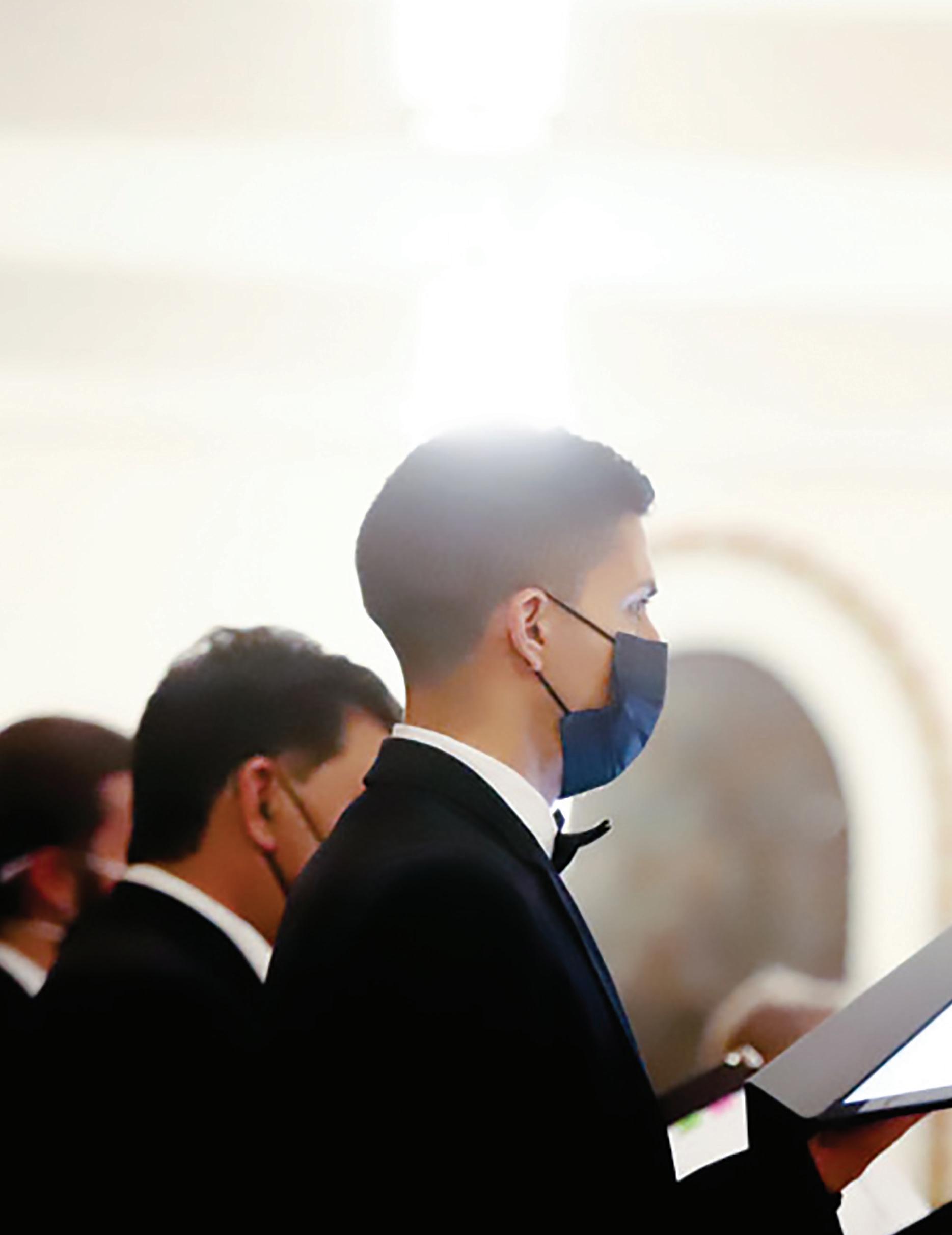

Choral Director Carmen Flórez-Mansi currently serves as the Pastoral Associate for Music at the Cathedral Basilica of St. Francis of Assisi. A native of New Mexico, she has performed as a vocal artist, choral conductor, vocal instructor and liturgy specialist throughout the Southwest since 1989, including solo appearances with the Santa Fe Desert Chorale and The Santa Fe Symphony Orchestra & Chorus. Carmen is also the Director of the St. Michael’s High School Choral Arts Society, which she founded in 2014.
Learn more at santafesymphony.org/choral-director
Nia Brannin
Kathleen Echols-Crumbacher
Patricia Fasel
Bethany Gallegos
Jolene Gallegos
Katherine Keener
Jenna Kloeppel
Kelsea Martinez-Eggleston
Bettina Milliken
Elizabeth Neeley
Elizabeth Roghair
Leona Tsinnajinnie
Paula Young
Elizabeth Zollo


Luana Berger
Natalie Bonelli
Barbara Cooper
Joseph Fasel
Mary Fellman
Terry Garcia
Colleen Kelly
Kehar Koslowsky
Allison Lemons
Catrinka Randall
Joann Reier
Anna Richards
Judith Rowan
Joan Snider
Wendy Wilson
Diana Zeiset
Mario Chavez
Diana Dallas
Rev. Douglas Escue
Stephen Fasely
Thomasluke Flórez-Mansi
Gabriel Gabaldón
Robert Gonzales
Gabriel King
Grayson Kirtland
Joe Long
James Melzer
Nate Salazar
Alison Watt
David Beatty
Curtis Borg
Bruce Bradford
Jerel Brazeau
Travis Bregier
Patrick Dolin
Alex Gallegos
Caleb Heaton
Peter Ives
Peter B. Komis
Steven Krefting
Thomas Rogowskey
Richard Schacht
Jim Toevs
Carlos Vazquez-Baur
Joe Fasel, President
Mario Chavez, Vice President
Doug Escue, Treasurer
Kathleen Echols-Crumbacher, Secretary
Bettina Milliken, Music Custodian
Jolene Gallegos, at large
Patrick Dolin, at large
Carmen Flórez-Mansi, Choral Director, ex officio
The SFS Strata series was conceived of in 2019, evoking the layers of musical conversation seen in chamber music. We are proud to highlight diverse venues and repertoire as an integral part of these concerts during the 2022–2023 Season. Don't miss these one-of-a-kind musical experiences!
SFS Strata I: Rite this Way! | Thursday, November 10, 2022—7:00 pm
Santa Fe Scottish Rite Center
The Santa Fe Symphony’s acclaimed chamber music series continues with this innovative presentation at Santa Fe Scottish Rite Center! Join us for a progressive chamber music experience featuring five incredible Symphony musicians. First, experience music up close and personal with seating “in the round” in the Scottish Rite Ballroom. Next, enjoy a performance of Beethoven’s famed Quintet for Piano and Four Winds in the historic theater. This concert will include a 20 minute intermission, with refreshments available for purchase before and during the performance. Tickets range from $50 to $100. Non-subscription event.


SFS Strata II: Music of the Spheres | Tuesday, April 25, 2023—7:00 pm
Meow Wolf Santa Fe
The Santa Fe Symphony makes its triumphant return to Santa Fe’s iconic Meow Wolf venue with a one-of-a-kind concert event. This concert presents four Symphony musicians performing amidst Meow Wolf Santa Fe's stunning and immersive art installations. Experience a progressive chamber music experience—scattered throughout the exhibit—followed by an intimate concert in Meow Wolf’s performance space. Brahms' Quintet No. 2 takes center stage, along with selections from famed chamber music and contemporary composers. Non-subscription event.


Visit santafesymphony.org/strata for more details.
santafesymphony.org

CHORAL MASTERWORKS
October 30, 2022—3:00 pm
The Santa Fe Symphony Chorus invites you to experience a beautiful afternoon of choral favorites for the entire family to enjo—highlighting the glorious voices of featured soloists. Doors open at 2:15 pm.
CONCERT SPONSORS

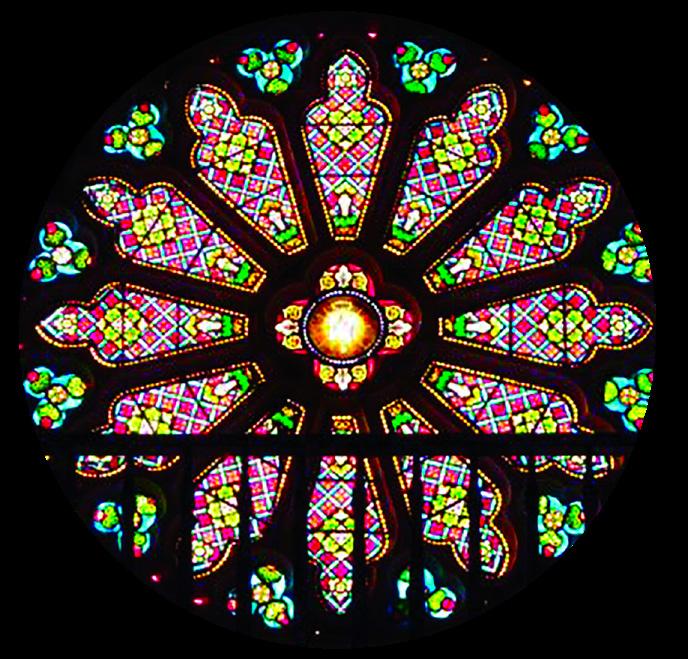
CAROLS & CHORUSES
MEMORIAL DAY

December 13, 2022—7:00 pm
Enjoy some of the most beloved Christmas carols of all time, accompanied by the The Symphony Brass and Organ. This popular annual performance is our gift to the community during the holiday season! Doors open at 6:15 pm.
CONCERT SPONSORS


May 21, 2023—3:00 pm
Join us as we celebrate those who served our country, and their families, with a beautiful program of uplifting music featuring The Symphony Chorus and Chamber Ensemble. Doors open at 2:15 pm.
BARBARA
WENDY









Our dynamic Virtual Concert Series continues with three new digital premieres on Santa Fe Symphony TV at venues across Santa Fe!

Subscribe now to Santa Fe Symphony TV!
AVAILABLE ON MULTIPLE DEVICES
An annual subscription of $80 to Santa Fe Symphony TV (one year from date of purchase) includes access to our Virtual Concert Series, Encore Features, Encore Series, FREE videos, and select new content, as released. You may also buy each individual program of our series ($20 each) and Encore Features ($5 each) on demand.
DOWNLOAD THE SYMPHONY APP!


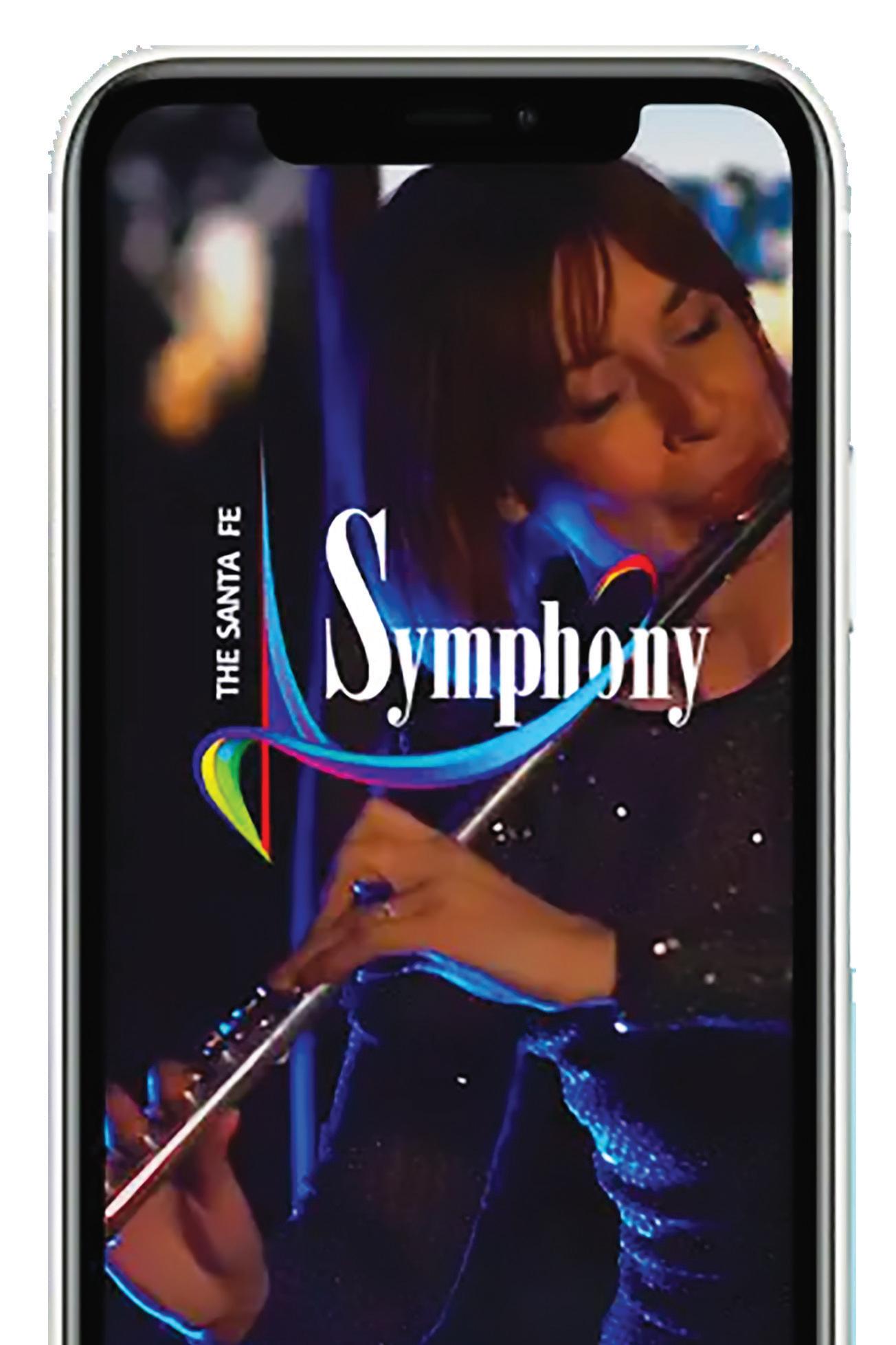


Members of Symphony Club, Musicians’ Circle, Conductors’ Circle, Angels’ Circle, Beethoven, and Tchaikovsky Groups enjoy our most popular member benefit, the elegant Musicales—one-of-a-kind gatherings held throughout the year in some of Santa Fe’s finest homes and galleries.
Visit with Symphony family and friends while enjoying hors d’oeuvres and fine wine, followed by a musical performance by our highly accomplished Symphony musicians and some of the world’s most talented guest artists. Donors at higher levels receive invitations to increasingly more intimate gatherings.
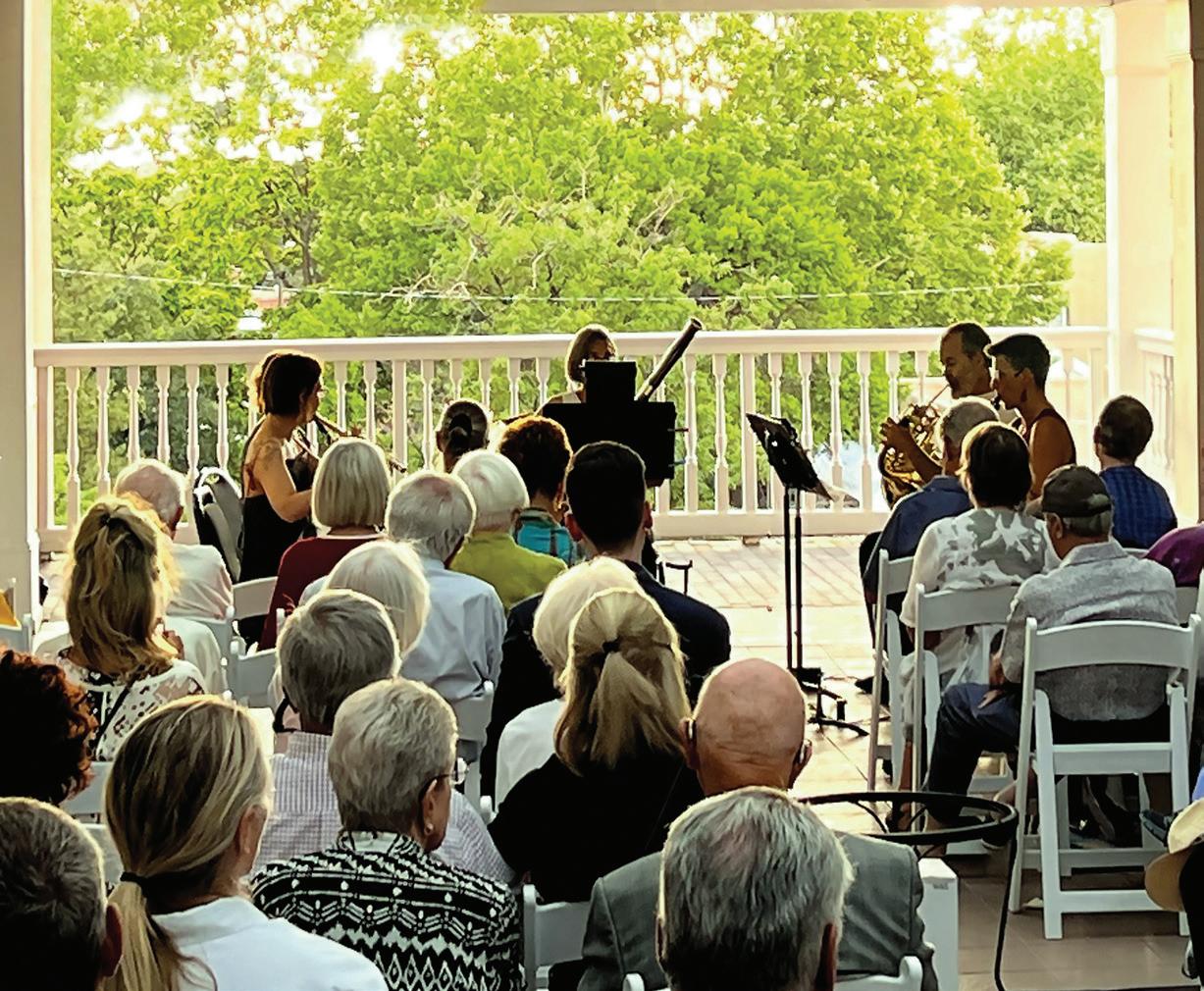
y members who host our Musicales.
Let's connect! Symphony Club members have the most fun.

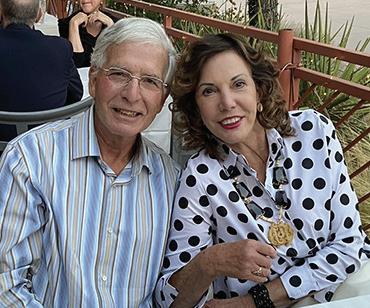



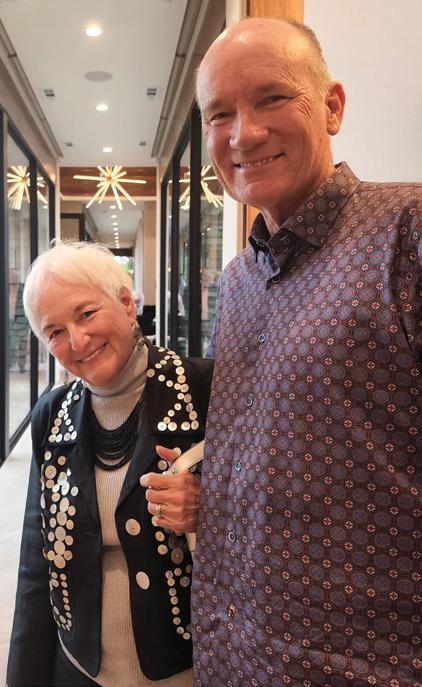
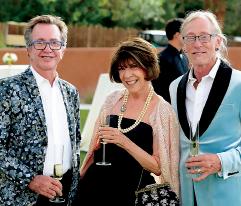
Sunday performances at The Lensic Performing Arts Center offer something unique for The Santa Fe Symphony's club members—a private reception just a short walk from theatre! Still uplifted by the concert, members of our Symphony Club, Musicians’ Circle, Conductors’ Circle , and above gather with their guests at this stunning gallery.

Many thanks to the owners of Galerie Züger and Art Advisor Mary Felton for their gracious hospitality.

Contact Development Manager Carole Áine Langrall at 505.552.3916 or clangrall@santafesymphony.org.

Special thanks to Casa Rondeña Winery for donating their award-winning wine to our private Symphony Club events. Named best vintner and best winery by the readers of Albuquerque The Magazine for seven years in a row, Casa Rondeña Winery was established in late 1995 as a family undertaking, with the first plantings in 1990 at the hands of vintner John Calvin and his two young sons, Ross and Clayton.
Meet our guest artists and conductors, chat with orchestral and choral musicians, and mingle with your guests, Board members, and other patrons in one of the most popular galleries in town! We are thrilled to return to in-person events this season and look forward to your good company before, during, and now after the concerts—again at the beautiful Galerie Züger in downtown Santa Fe. Galerie Züger
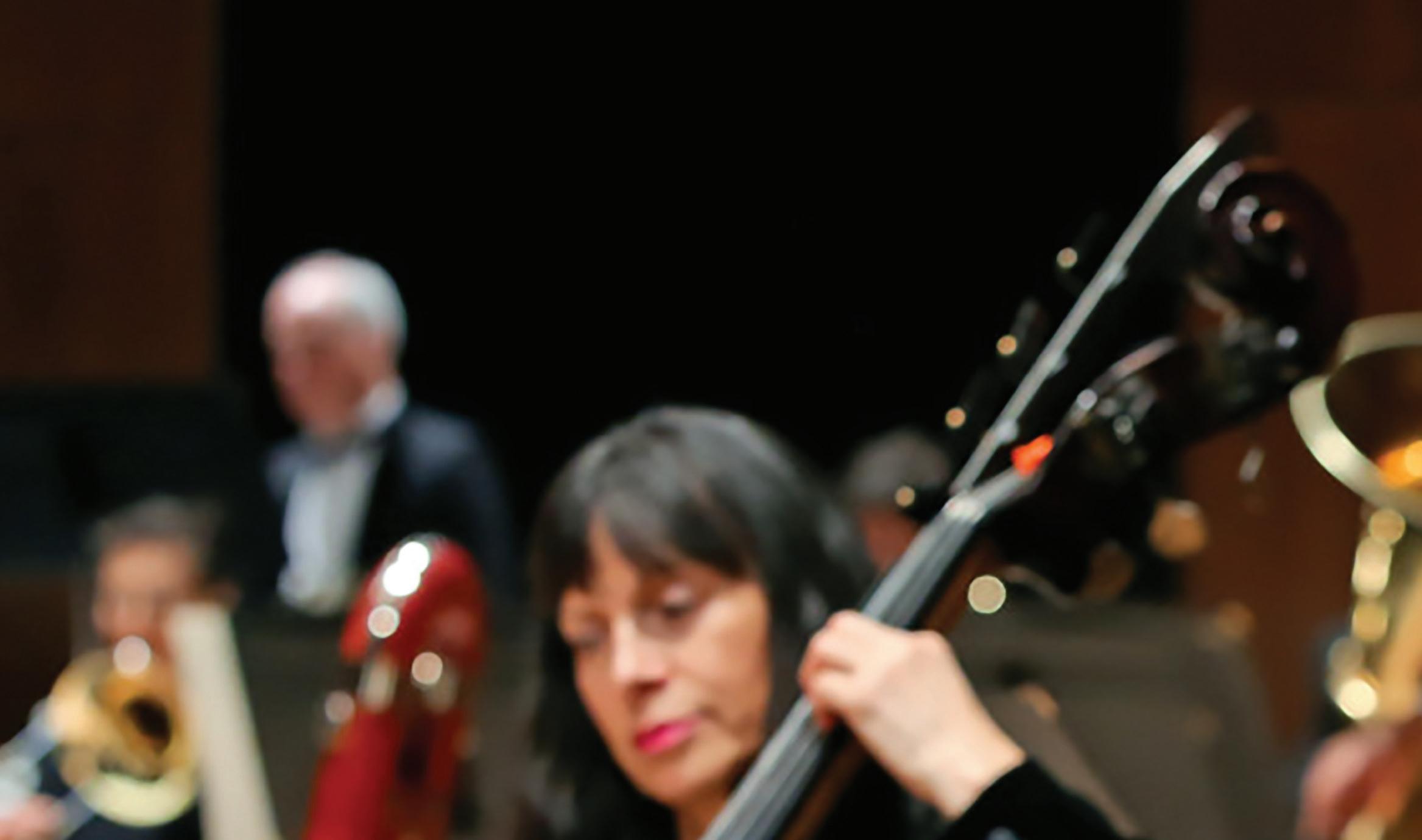
There are many ways to support your Santa Fe Symphony Orchestra & Chorus!
Individual Memberships are available at a variety of levels, each with its own special benefits acknowledging your unrestricted annual gift in support of The Symphony’s general operations and programming. Memberships run for 12 months from the date of your contribution. All contributions are acknowledged in the Program Book for each performance. You may choose to decline all non-deductible benefits. For a full list of membership benefits, visit santafesymphony.org/support/donate.
The Santa Fe community supports The Symphony in a variety of ways. One unique and rewarding option is to underwrite or sponsor an individual concert. Individuals and businesses can directly support a Symphony or Chorus concert through sponsorship, with a variety of ticket, marketing, and other benefits. Sponsors may also dedicate a Symphony concert to honor or memorialize a loved one, or celebrate a friend, family member, or special occasion.
This is your opportunity to underwrite the performance of one of our acclaimed guest artists or guest conductors. Donors will have the opportunity to meet and get to know the artist(s); receive four complimentary tickets to their underwritten performance, and other sponsorship benefits as well.
When you adopt a musician, you honor each orchestral and choral musician's exceptional dedication. Your adoption helps sustain high standards of professional support for our orchestra members and outstanding choral singers. Visit santafesymphony.org/adopt for more information.
santafesymphony.org

We need YOUR help to continue bringing great music to life.®
We are always seeking local businesses to partner with us! Benefits include a variety of marketing opportunities. Full Concert Underwriters, Full Sponsors, and Sponsors-in-Part allow us to bring live classical music to The Lensic stage and other venues across Santa Fe. A contribution of amount will highlight your business to our discerning audience—whether you are an independent entrepreneur or represent a thriving corporation.
Generous and farsighted supporters who make The Symphony or The Foundation a part of their estate planning become permanent members of this extraordinary group.
A gift to The Symphony Foundation is one of the most lasting and powerful resources a donor can offer, ensuring a sustained source of revenue for The Symphony into the future. There are many ways to donate, including direct gifts, annual pledges, named gifts of stock and IRA distributions.

To make a contribution, scan QR code above or contact Development Manager Carole Áine Langrall at 505.552.3916 or clangrall@santafesymphony.org. You may also visit santafesymphony.org/donate to learn more.
$5,000 Principal Conductor
$2,000 Concertmaster
$1,200 Assistant Concertmaster
$1,000 Principal Musician
$600 Symphony Section Musician
$3,000 Choral Director
$600 Symphony Choral Musician
Recognize the brilliant musicians who make the music happen!
Adopt a musician and honor their exceptional dedication and effort. You may select any member of the orchestra or chorus who is not currently adopted, as well as adopt more than one musician.
Ann Neuberger Aceves adopted
Kathie Jarrett, Assistant Concertmaster
Perry C. Andrews, III adopted
Jennie Baccante, Violin
James Holland, Cello
Randall Balmer adopted
Carmen Flórez-Mansi, Choral Director
David Beatty adopted
Travis Bregier, Bass—Choral Musician
David Bowes adopted
Carol Swift, Violin
Julie and Michael Dawson adopted
Joel Becktell, Assistant Principal Cello
Bruce Bradford, Bass Choral Musician
Allegra and Jim Derryberry adopted Melinda Mack, Cello
Andy Eiseman adopted
Jeffrey Rogers, Principal Horn
Jose "Pepe" Figueroa adopted
Guillermo Figueroa, Principal Conductor
Frank and Christine Fredenburgh adopted
Kimberly Fredenburgh, Principal Viola
Tobias Vigneau, Double Bass
Betty Gold adopted
Katelyn Benedict, Horn
Virginia Lawrence, Viola
Barbara Morris, Violin
Cheryl Fossum Graham adopted Elaine Heltman, Principal Oboe
Barbara and Tommy Hill and Randall Balmer adopted Catrinka Randall, Alto—Choral Musician
Susan Meredith adopted Cherokee Randolph, Viola
Kathleen and Brad Holian adopted Dana Winograd, Principal Cello
Pamela S. Hyde adopted
Stefanie Przybylska, Principal Bassoon
Barbara and David Larson adopted David Tolen, Principal Percussion
Dominic Locrasto adopted Gabriela da Silva Fogo, Violin
Eileen R. Mandel adopted Kathy Olszowka, Double Bass
David Manno and Julio Blanco adopted Laura Dwyer, Flute
Sara Mills and Sam Brown adopted Terry Pruitt, Principal Double Bass Sam Brown, Double Bass

Dierdre and Shanka Mitra adopted Kenneth Dean, Principal Timpani
Penelope Penland adopted Emily Erb, Clarinet
Teresa Pierce adopted Jesse Tatum, Principal Flute
Jack Rossi adopted Valerie Turner, Violin
Laurie Rossi adopted
Christine Rancier, Viola
Elizabeth Roghair, Soprano
Row S Ladies adopted Rebecca Ray, Oboe
Carol and Richard Rudman adopted Lisa Collins, Cello
Lori Lovato, Principal Clarinet
Marion and Joe Skubi adopted Anne Eisfeller, Principal Harp
Franklin and Merle Strauss adopted David Felberg, Concertmaster
Megan and David Van Winkle adopted Carla Kountoupes, Violin
Kevin Waidmann and Don Shina adopted Richard White, Principal Tuba
Everett Zlatoff-Mirsky adopted Nicolle Maniaci, Principal Violin II



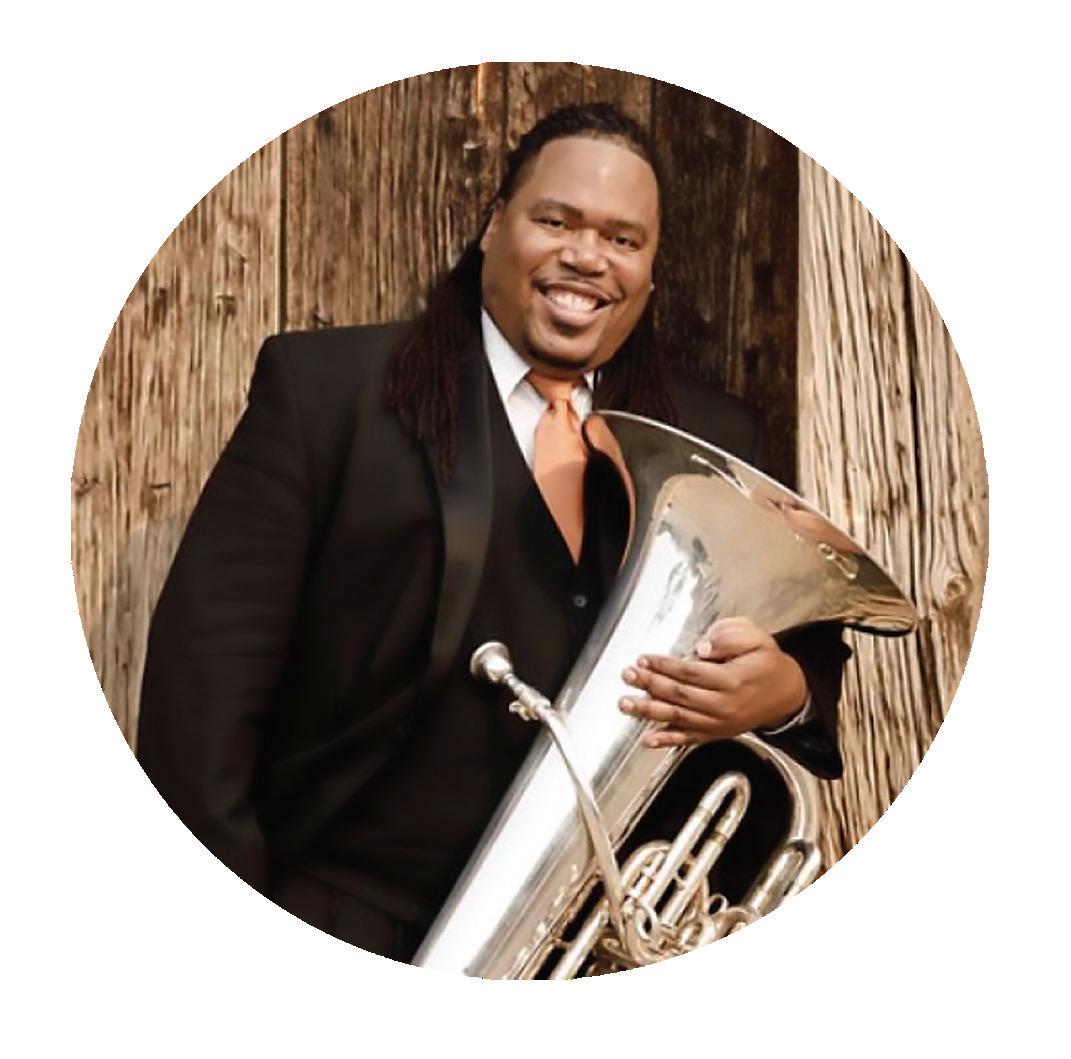
When you adopt a musician you honor our artists’ exceptional talent and dedication. You help sustain high standards of professional support for our orchestral and choral musicians. You enjoy a closer relationship with The Symphony and the musicians who bring great music to life.
As a part of the Adopt-A-Musician program, you will be introduced to your adopted musician, offered a photograph opportunity with your adopted musician(s), and invited to attend an orchestra dress rehearsal. Sponsors of principal musicians may sit within the instrument section—as close as possible to their musician. Some benefits may be restricted due to COVID-19 protocols.
All adoptions will be acknowledged under the adopted orchestra member’s image on The Symphony website at santafesymphony.org/orchestra for one year following the adoption. An acknowledgment of your participation in the Adopt-A-Musician program will also appear in The Santa Fe Symphony’s Season Program Book.
To adopt a musician, learn more about the Adopt-A-Musician program, or if you would like information about other ways to support The Santa Fe Symphony Orchestra & Chorus, please contact our Development Manager Carole Áine Langrall at clangrall@santafesymphony.org or 505.552-3916.
We gratefully acknowledge the following individuals and organizations for their generous support. Contributors are listed according to their cumulative giving between July 1, 2021, and August 2, 2022. If you would like to make a gift to The Symphony, contact Development Manager Carole Áine Langrall at 505.552.3916 or clangrall@santafesymphony.org
Beethoven Group
$25,000+
Ann Neuberger Aceves
Jose “Pepe” Figueroa
Susan and Steven J. Goldstein, MD
Boo Miller
Suzanne Timble, PhD, JD
Angels’ Circle
$6,000+ single | $12,000+ double
Perry C. Andrews, III
Mary Azcuenaga
Patricia Daun
Michael and Julie Dawson
Joel M. Goldfrank
Debra L. Hart
Phyllis Lehmberg
Diane and John Lenssen
Mary and John Macukas
Teresa Pierce
Conductors’ Circle
$3,000+ single | $6,000+ double
Catrinka Randall and Randall Balmer
Zella and Lawrence Cox
Ambassador David F. and Constance B. Girard-diCarlo
Virgina Lawrence
Dee Ann McIntyre
Dr. Penelope Penland
Carol Raymond
Frances E. Richards
Laurie Rossi
Beth and Joel Scott
Howard Sherry
Marcia Southwick
Elizabeth VanArsdel
Everett Zlatoff-Mirsky
Musicians’ Circle
$1,500+ single | $3,000+ double
Shane Cronenweth
Julia and Jude Damasco
Bernard Ewell and Sali Randel
Nancy Gardner
Betty Gold
Michael Grissom and Jess Nicholas
Richard Hawkins
Bernadette A. McGuire-Rivera and Henry Rivera
Shirley and E. Franklin Hirsch
Virginia Lawrence
Ginnie Maes
Eileen R. Mandel
Evelyn McClure
Brian McGrath and Carmen Paradis
Steve Ovitsky
Cindi and Jerald Parker
Carol and Dr. Richard Rudman
Dee and Augustus Rush
Peter Schanck
Nikki Schwartz and David Hofmann
Gay and Graham Sharman
Marion and Joe Skubi
Judy and Elliot Stern
Ken Stilwell
Merle and Frank Strauss
Marcia Torobin
Joan Vernick
Kevin Waidmann and Don Shina
David and Megan Van Winkle
Nancy D. Zeckendorf
Symphony Club
$750 single | $1,500 double
Ann Alexander
Paul Allison
Loretta Armer
Anne Beckett
Virginia and Morgan Boatwright
Anne and John Burton
Greta and Robert Dean
Allegra and James Derryberry
Nancy Dickenson
Guillermo Figueroa and Valerie Turner
Marilyn Forbes
David Frank and Kazukuni Sugiyama
Anita and Joseph Ginocchio
Cheryl Fossum Graham
Stephanie Greene
Ann Griffith Ash
Eugene and Gwendolyn Gritton
Scott Hankins and Randall J. Hayden
Barbara and Stephen Hart
Bertam Heil
Richard and Joyce Henderson
Deborah and David Holloway
Joyce Idema
Therese Kohl and Preston Peaden
Patricia Kushlis
Anne and Bruce Legler
Ann LeMay
Gary and Margaret Lutz
Bernadette McGuire Rivera and Henry Rivera
Audrey Miller
Max and Linda Myers
Susan Nilsen
Sarah Nolan
Donald Percious
Melanie Peters Thorne and Edwin Thorne, Jr.
Dan and Maria Peterson
Ann Price
Marianne Reuter
William and Helen Rogers
Judith Rowan and Richard Schacht
R.G. Russell
Linda Schoen Giddings
`and Daryl Giddings
Marja and Everett Springer
Kay and Neel Storr
Ginger Whalen
Lisa and John Wilhelmsen
Benefactors
$450-$749
Carl Bogenholm
Elaine and William Chapman
Bruce Chemel
Dr. Abram and Yolanda Eisenstein
Marty and Michael Everett
Brigit and Jorg Jansen
Brenda and Michael Jerome
Keytha and Paul Jones
Philip Kruger
Eileen and Mike Mabry
Lynn Mostoller
Linda Osborne
Matt and Denise Poage
Elizabeth and William Ranck
Anders Richter
Daniel Rusthoi
Barbara Servis
Susan and John Shaffer
Marja and Everett Springer
Nancy and George Yankura
Supporter
$250-$449
Jimmy D. Allen
Patricia and Robert Anker
Robert Baumgartner
Doris Bato
Evelyn and Frank Campbell
Marlena and Mark Campbell
Greta and Robert Dean
Marcia and Douglas Dworkin
Allyson and Rickey Faehl
Dave Grusin
Gloria Holloway
John Horning
Jill Jones and William Majorossy
Caroline King
Barbara and David Larson
Ann LeMay
Bettin Milliken
Isabel Mogstad
Rod Monger
Nancy Newton and Dave Grusin
Jamie Nicholson-Leener
Marilyn J. O’Brien
Jan and Jim Patterson
Nancy Rowland
Leslie and Roger K. Simon
Barbara and Glen Smerage
Bryan Sperry
Sabra and Doug Strasser
Timothy Terell
Bob Tillotson
Alan M. Webber
Joyce and Joseph Weiser
Lisa and John Wilhelmsen
Associates
$125-$249
Richard Abeles
Janice Arrott
Steven D.Berkshire
Catherine and John Bing
Harry Bixby
Bruce Bradford
Lois and Robert Chiarito
Traven R. Cunningham
Gregory and Christine T. Davis
Lorna Dyer and Jerry Watts
Karen and William Elkjer
Sharon Franco and Joe Hayes
Diane and Gerald Gulseth
Ronald Halbgewachs
John Hart
Susan and Karl Horn
Andy T. Kramer
Judy and Andrew Kramer
Joan Lamarque
Ellie Leighton
Randi Lowenthal
Michael A. Lucia
Kathy and John Matter
Ruth Maxey
James Melzer
Bettina Milliken
Luanne and Steve Moyer
Peter Nichol
Carol Prins and John Hart
Lonnie Rowell
John M. Salas
Fran Salkin and Jonathan Beamer
Christine and Elizabeth Sallee
Claudia Seville
Michael D. Simon
Raymond M. Singer
Valerie Stefani
Fernando Torres
Deb Tummins
Kathryn Turnipseed
Gloria L. Velasco
Carol Williams and Michael E. Dreskin
Janice Lee and William Weise
Richard and Beverly Wilson
Dan Winske
Patricia and Nolan Zisman
Friends
$25-$124
Amelia Adair
Gene Albert
Amy Anderson
Peg Andre
Hans Bakker
James Blackwood
Lonna Blumenthal
William Blumenthal
Diane and James Bonnell
Paul and Christine Branstad
Suzanne Breslauer
Debbie Burns
Lois Callaghan
Francesco Caravelli
Susan Carswell
Linda Churchill
Celia and Lee Cloney
Thomas Conroy
Karla Dillon
Karen Duray
Judith and Robert Eagan
Dorne and Steve Eastwood
William Fajman
Annelyse and William Feiereisen
Wendy B. Ferdin
Carmen Flórez-Mansi and Tom Mansi
Michael Flynn
Kim Fredenburgh and Kevin Vigneau
Jamie Gagan
Jeffery L. Gibbs
Daniele Gold
Michael Golden
Mona Golub
Jonathan Gordon
Allen C. Grace
Maria Haegele
Robert Hanelt
Dani Hayes
Shannon Hicks
Kathleen and Brad Holian
Kenn Holsten
Elizabeth Hume
Paula J. Hunter
Mark Ihlefeld
Amber K. Ingvoldstad
Julia C. Jameson
Charles Jarden
Gail K. Jensen
Betsy and Thomas Jones
John Jones and Charles Rountree
Ted Karpf
Bill Keller
Margaret Keller
Colleen Kelly
Heather Kemp
Jenifer and Grayson Kirtland
Richard J. Klein
Michael S. Knopf
David Koehler
Christopher W. Krause
Nicola Kronenberg
Leonard J. La Magna
Diane Le Zotte
Marcy L. Leavitt
Lynn F. Lee
Allison and Don Lemons
Geraldine and Domink Lepore
Craig Lewis
Virginia and Maurice Lierz
Nina Lovaas
Rob Lunn
Charles MacKay and Cameron McCluskey
Larry Martine
Knneth Mayers
David and Jane McGuire
David McNeel and Jack McCord
Claire and Steven Meador
John Mezoff
Andre Michaudon
Carleen Miller
Estelle Miller
Ann and David Millican
Ann Millican
Karen and Phil Milstein
Teresa Moore
Diane L. Morrissette and Phil Geller
Nancy A. Murphy
Bette K. Myerson
Perri Needham
Kathy Nelson
Lawrence Newberry and Vivien Cienfuegos
Betsy Nichols
Ashleigh Olds-Sanchez
Melinne Owen and Paul Giguere
Pam Parfitt and Brian Morgan
Arayana and Nicholas Potter
Sarah V. Raisbeck
Rebecca and Alan Ray
Barbara and Donald J. Rej
Paul Rodenhauser
Doris R. Romero
Richard Rosenthal and Patricia DeBoom
Patsie E. Ross
Rachel Routh
Steven Rudnick
Gloria Ruiz
Pamela and Mike Ryan
Susan A. San German
Robert P. Santandrea
Suzanne Schutze
Dr. Shirley Scott
Carol and Nicholas Seeds
Peggy and Jack Seigel
Linda Severy-McMahon
Sally Sharkey
Frank Sharpless
Colleen and Art M. Sheinberg
Rosina and Robert Short
Louise Singleton
Nancy Sklavos-Gillett
James Snead
Beverley Spears
Paula Steinert
Brent Stevens
Alyson Sutherland
Enid and Roy Tidwell
Stephen G. Tramel
Tullivers Pet Food Emporium
Elizabeth Tyldesley
Dennis Van Andel

Juan Velasco and Margaret Dulle
Anne Vena
Denise Villanueva
Christine and Paul Vogel
Susan Wahl
Gordon Walker
Alison R. Watt
Michael Whitten
Robert Wilber
Paula B. Young
Morton Yulish
Diana and David Zeiset
Elizabeth Zollo
Donations In Honor of Ann Neuberger Aceves, by Ellie Leighton
E. Franklin Hirsch, by Lewis G. Hawkins
Victoria Shepard
Jesse Tatum, by Callie O’Buckley
Donations In Memory of
Chloe, by
Judith and Robert Eagan
Virginia Miller Thornton, by Elizabeth Mourtisen
Ronald E. Rinker, by John P. Geiger

Reuben Michael Torres, by Ellie Leighton
Joyce Nicholson, by Jane Barry
Julia Bergen
Dr. Bruce Bennett
Ann D. Berntsen
Michaela Buhler
Dr. Julie Anne Calhoun
Julie and Michael Dawson
Sheila and Richard Duffy
Granville Greene
Greg Harris
Harriet Harris
Dr. Ann LeMay
Keith Mahon
Thomas Massengale
Zak Nelson and Emma Scherer
Darcy Alice Nicholson
Kathryn and Yusef Nun
Gary Oakley
Diana and Thad Rasche
Laurie Rossi
Foundations, Donor Advised Funds, Estates & Trusts
Del Norte LOV Foundation
Evelyn L. Petshek Arts Fund
Susan and Steven J. Goldstein
Charitable Fund
John H. Hart Foundation
Kathryn O’Keeffe Charitable Foundation
Susan and Gary Katz Charitable Fund
Los Alamos National Laboratory Foundation
Ronald E. Rinker
Charitable Remainder Trust
Santa Fe Community Foundation
Seahollow Family Gift Fund
Storr Family Fund
Government Organizations
City of Santa Fe Arts Commission
New Mexico Arts, A Division of the Office of Cultural Affairs, Supported by the National Endowment for the Arts
Friends of Music Education
Del Norte LOV Foundation, Discovery Concert Sponsor
Sheila Gershen
Ambassador David F. and Constance B. Girard-diCarlo
Susan and Steven J. Goldstein, MD
John H. Hart Foundation
Kingston Residence of Santa Fe, Senior Serenade Supporter
Barbara and David Larson
Allison and Don Lemons, Discovery Concert Additional Support
Los Alamos National Laboratory Foundation, Discovery Concert Sponsor
Dee Ann McIntyre, Free Student Tickets Full Sponsor
Friends of
The Symphony Chorus
Shelly Bailey and George Ginsberg
Curtis Borg
Bruce Bradford
Randall Balmer and Catrinka Randall
Mario Chavez
Patrick Dolin
Barbara and James Cooper
Jolene Gallegos
Peter Ives
James Melzer
Edward and Sally Randall
Anna Richards
Elizabeth and James Roghair
Carol and David Ross
Donations in Support of
2021 Home For The Holidays, Music Education Fundraiser
Ann Neuberger Aceves
Perry C. Andrews, III
Megan and John Boudreau
Nan Brown
Martha and Jon Bull
Alexis Corbin
Shane Cronenweth
Julie and Michael Dawson
David Dealy
Allegra and James Derryberry
Mary Faupel and David Scherer
Jose “Pepe” Figueroa
Patrick Galbreath and Dr. James Marx
Margaret and James Gautier
Betty Gold
Susan and Steven J. Goldstein, MD
Kana Yasue Hauptman and Ben Hauptman
Lucy and Tom Higgins
Shirley and E. Franklin Hirsch
Joan Kessler
Katherine and William Landschulz
Dr. Ann LeMay
Mary and John Macukas
Eileen R. Mandel
Dr. Penelope Penland
Sali Randel and Bernard Ewell
Frances E. Richards
John Rizzo
Laurie Rossi and John Scully
Carol and Richard Rudman
Emma Scherer and Zak Nelson
Cynthia Sibley
Robin Smith
Merle and Franklin Strauss
Guillermo Figueroa and Valerie Turner
Judith Williams and Elliot Stern
Everett Zlatoff-Mirsky
In-Kind Support of 2021 Home for the Holidays
Music Education Fundraiser
315 Restaurant
Array
Bernard Ewell Art Appraisals
Black Mesa Winery
Cafe Pasqual’s
Casa Chimayo Mercado
Clafoutis
Counter Culture
Designs by MYKA LA
Dinner for Two
Doodlet’s
Four Seasons
Susan and Steven J. Goldstein, MD
Henry and the Fish
Iconik Coffee Roasters
Joseph’s Culinary Pub
Midtown Bistro
Museum Hill Café
Palace Prime
Pojoaque Supermarket
Laurie Rossi
Santa Fe Honey Salon
Santa Fe Salt Cave
Sprouts
Susan’s Fine Wine and Spirits
Terra Cotta
Trader Joe’s
Whole Hog Cafe
Whoo’s Donuts
Donations in Support of the 2022 Annual Gala: The Golden Age of the Silver Screen
Ann Neuberger Aceves
Perry C. Andrews, III
Brenda Beck and Tom Wohlmut
Bishop’s Lodge, Auberge Resorts Collection
Maggie and David Brown
Compound Restaurant
David Copher
Mary Pat Corwin
Cowboys & Indians
Zella and Lawrence Cox
Julie and Michael Dawson
Dorne and Steve Eastwood
Anne Eisfeller and Roger Thomas
Mary Faupel and David Scherer
Jose “Pepe” Figueroa
Natalie Fitz-Gerald
Carmen Flórez-Mansi and Thomas Mansi
David Frank and Kazukuni Sugiyama
Weldon Fulton and David Gabel
Susan and Steven J. Goldstein, MD
John Grisak, Fix My Roof LLC
Elizabeth Harcombe and Michael Carter
Barbara and Stephen Hart
Dianne and John Hughes
Joe Kelley
Mary and John Macukas
Phil Martin
Anne L. May
Dee Ann McIntyre
Museum Hill Cafe
Zak Nelson and Emma Scherer
Jennifer Neuherz
Callie O’Buckley
Teresa Pierce
Laurie Rossi and John Scully
Hilary and Reed Schaper
Merry Schroeder and David Matthews
Eric Sleigh and Christopher Wiseman
Robin Smith
David Tedlock
Kana Yasue Hauptman and Ben Hauptman
Everett Zlatoff-Mirsky
Thomas Tenorio
Violet Crown
Susan’s Fine Wine and Spirits
Palace Prime
Geronimo Restaurant
Handwoven Originals
Santa Fe Opera
Mary Felton, Galerie Züger
In-Kind Support of the
2022 Annual Gala: The Golden Age of the Silver Screen
Joel Becktell
Bishop’s Lodge, Auberge Resorts Collection
Anne Eisfeller and Roger Thomas
David Felberg
Garden of Earthly Delights, Carole Áine Langrall
Guillermo Figueroa and Valerie Turner; Emma Scherer and Zak Nelson—El Gran Combo
Carmen Flórez-Mansi and Thomas Mansi
Betty Gold
Elaine Heltman
Anne Hillerman
Lori Lovato
Nicolle Maniaci
Jeffrey Rogers
Paul Roth
Dr. Stefanie Przybylska
Jesse Tatum
Dana Winograd
Volunteers
Kathleen Adams
Ann Alexander
Jane Barry
Marie Bass
Susan Beckert
Sharman Bingham
Carl Bogenholm
Rose Bramble
Susan Breyer
Frieda Claes
Jane Cook
Julia Faber
Cathleen Gallagher
Michael Grissom
Zandra Hall
Mark Holland
Chris and Marie Howson
Bill Humphreys
Susan Kauffmann
Anne Kennedy
Nancy Kenney
Joan Kessler
Donna Ketcheson
Caroline King
Ellie Leighton
Pamela Levin
Laura Loving
Barbara Luboff
Anne and Ed Maglisceau
Anne McKinney
Lissa Meachum
Susan Meredith
Carleen Miller
Estelle Miller
Linda Miller
Sherry Moon
Marie Newsom
Susan Pippin
Andrea Poole
Ann Price
Nilou Rahimi
Sally Ritch
Carmen Rodriguez
Laurie Rossi
Linda Schoen-Giddings and Darryl Giddings
Chase Scherer
Pamela Schuyler Cowens
John Scully
Janice Simmons
Sandra Smith
George Stephens
Laura Witte
Jane Yuster
Business Gold Concert Sponsors
ALH Foundation, In Memory of John Greenspan
Cathedral Basilica of St. Francis of Assisi
CHRISTUS St. Vincent Regional Medical Center
Crumbacher Business Systems
Enterprise Bank & Trust
Fix My Roof, LLC
Komis Enterprises, LLC
Lexus Santa Fe
New Mexico Bank & Trust
Dr. Penelope Penland
Santa Fe Opera
Thornburg Investment Management
Business Council
American Pianists Association
Business Leaders
First National 1870
Individual Concert Supporters
Ann Neuberger Aceves
Barbara and James Cooper
Julie and Michael Dawson
Guillermo Figueroa and Valerie Turner
Susan and Steven J. Goldstein, MD
John Geiger, In Memory of Ronald E. Rinker
Emil and Cecilia Matic
Boo Miller
Neuberger Berman
Faith and David Pedowitz
Kathryn O’Keeffe
Charitable Foundation
Teresa Pierce
In Memory of Mort Morrison
Catrinka Randall and Randall Balmer
Elizabeth and James Roghair
Cervantes "Buddy" and Irene Roybal
WildEarth Guardians
Wendy Wilson and Douglas Turco
Dr. Marylou Witz

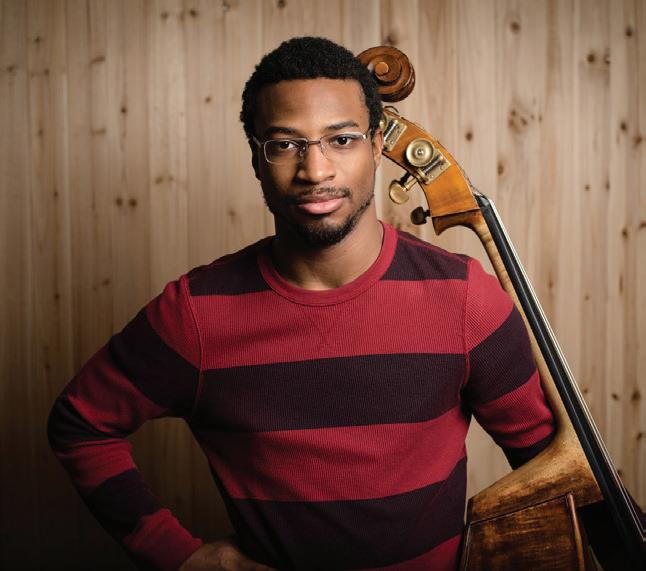

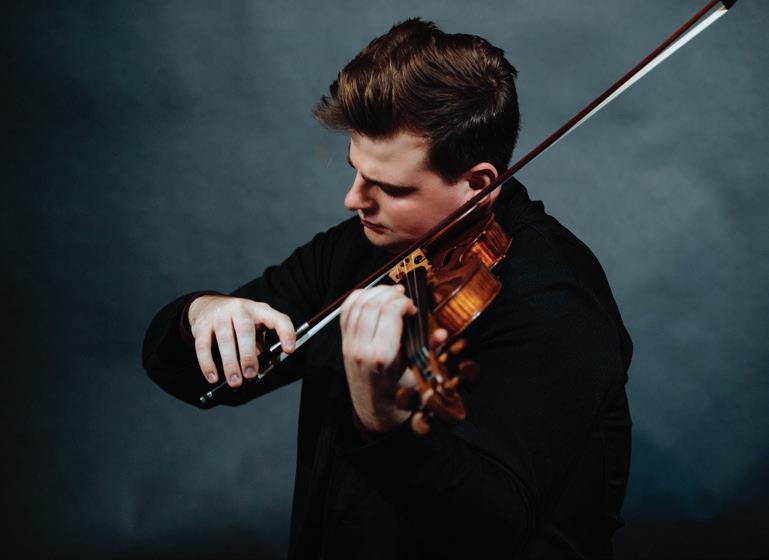
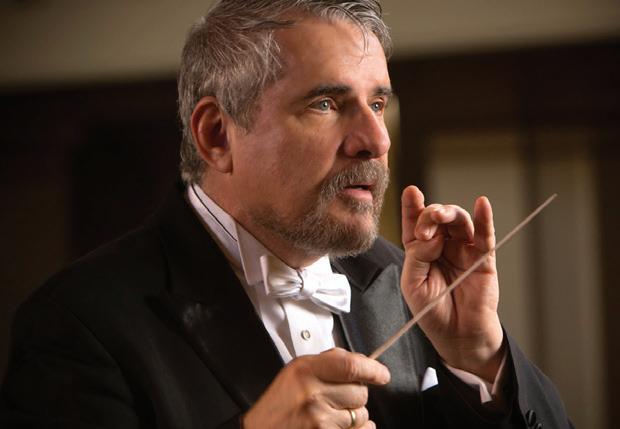

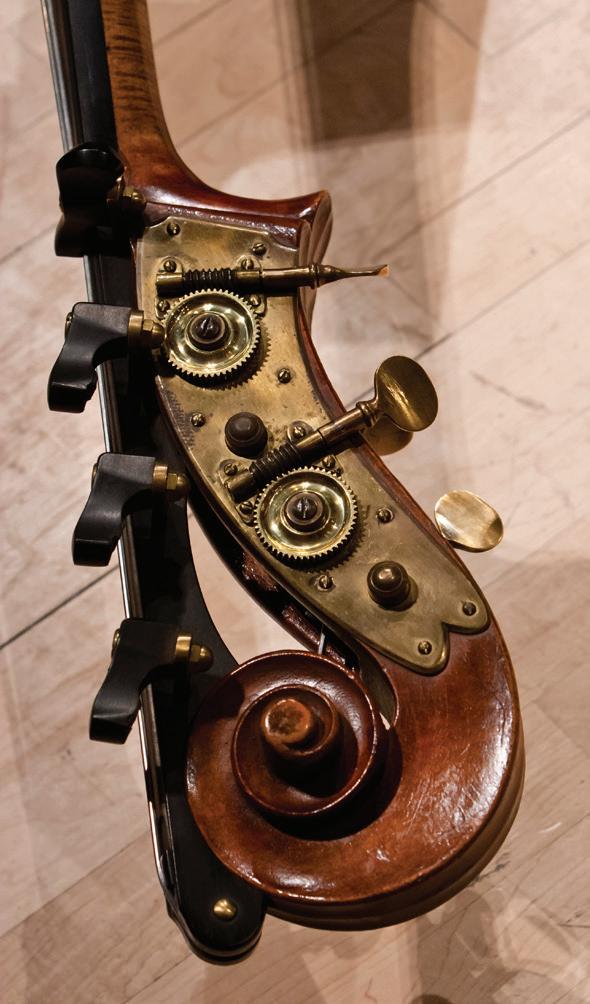


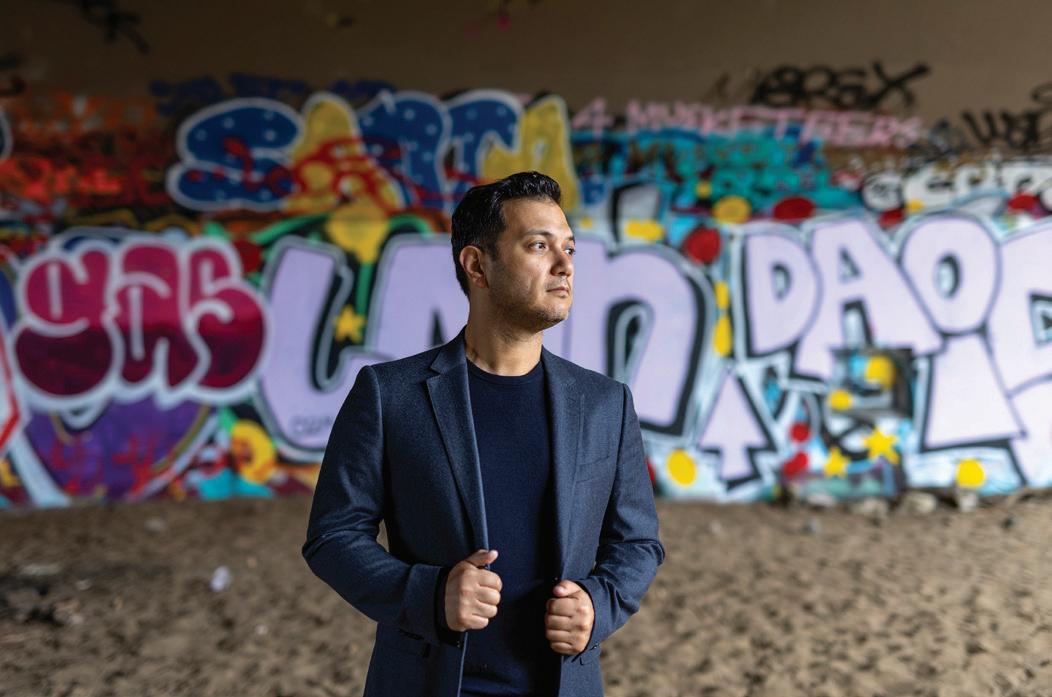








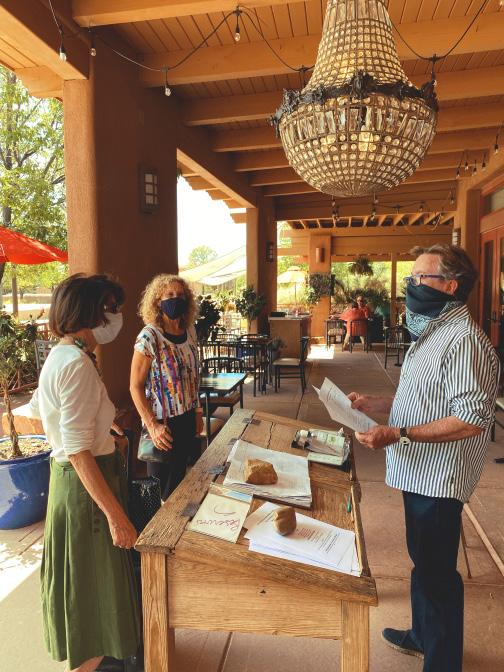


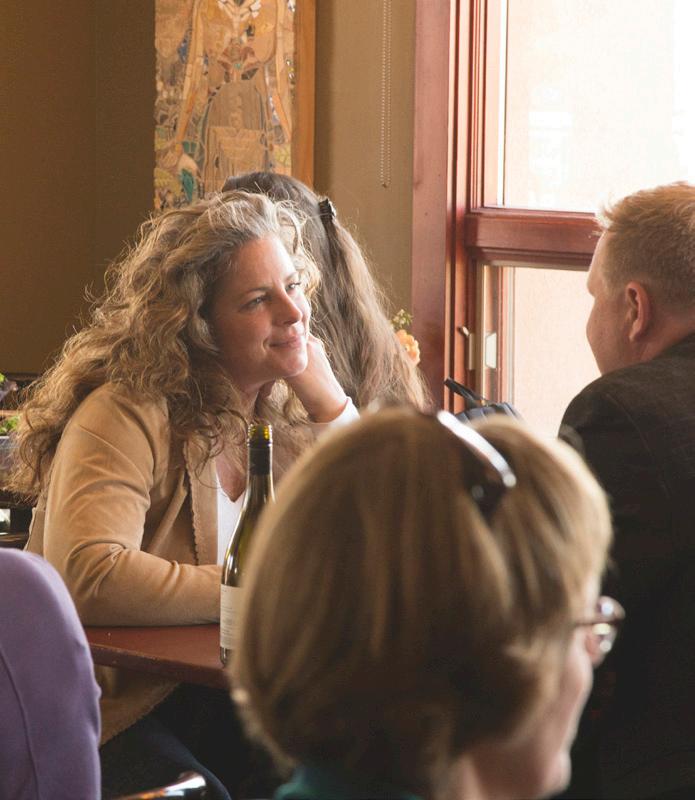







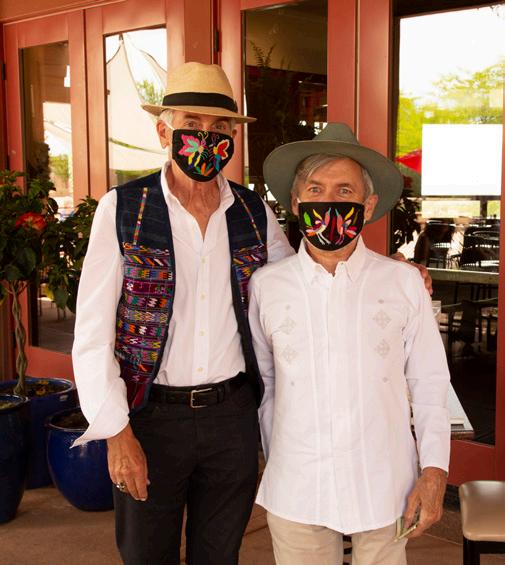

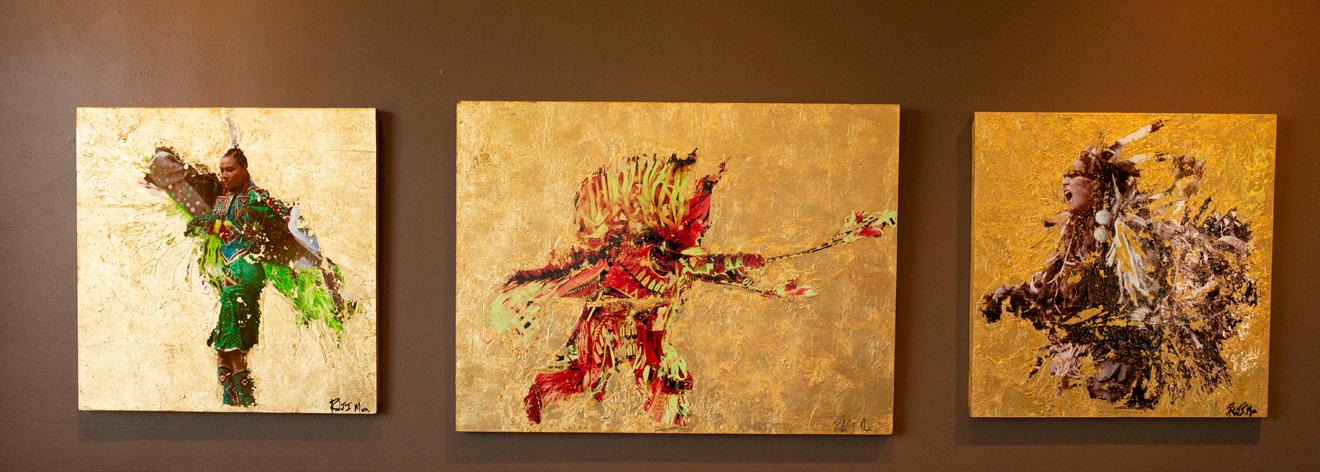

Monday, December 5, 2022 6:00 pm
THE CLUB AT LAS CAMPANAS
Experience a festive evening with good friends, fabulous food, premium select wines, and wonderful holiday music at our annual Home for the Holidays fundraiser! Be sure to partake in our highly-anticipated gift certificate drawings, silent auction, and paddle bid to support our mission to be a year-round regional cultural resource, engaging, inspiring, and enriching audiences of all ages and cultures by offering performances of the highest professional quality.
Tickets are $200 per person, a portion of which is tax-deductible. RSVP to Development Manager, Carole Áine Langrall , at 505.552.3916 or email clangrall@santafesymphon y.or g .




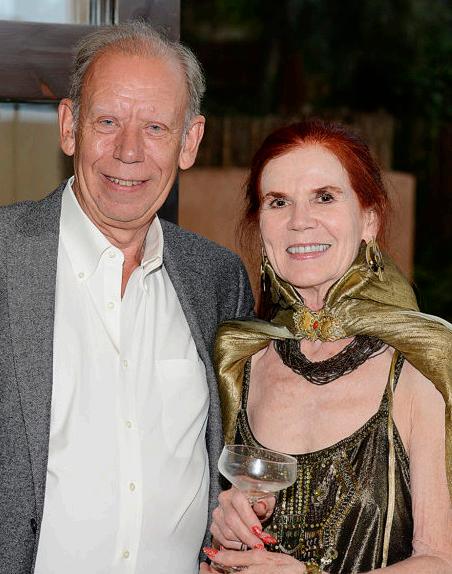




We look forward to welcoming you to our 2023 Annual Gala! Enjoy decadent wine and food along with spectacular live entertainment. Support your Santa Fe Symphony Orchestra & Chorus during the always exciting paddle bid and high-end live and silent auctions, and help us celebrate another wonderful season of great music.

Visit santafesymphony.org/gala or scan the QR code on left for up-to-date details about our 2022–2023 Annual Gala. You may also contact Development Manager, Carole Áine Langrall, at 505.552.3916 or clangrall@santafesymphony.org.


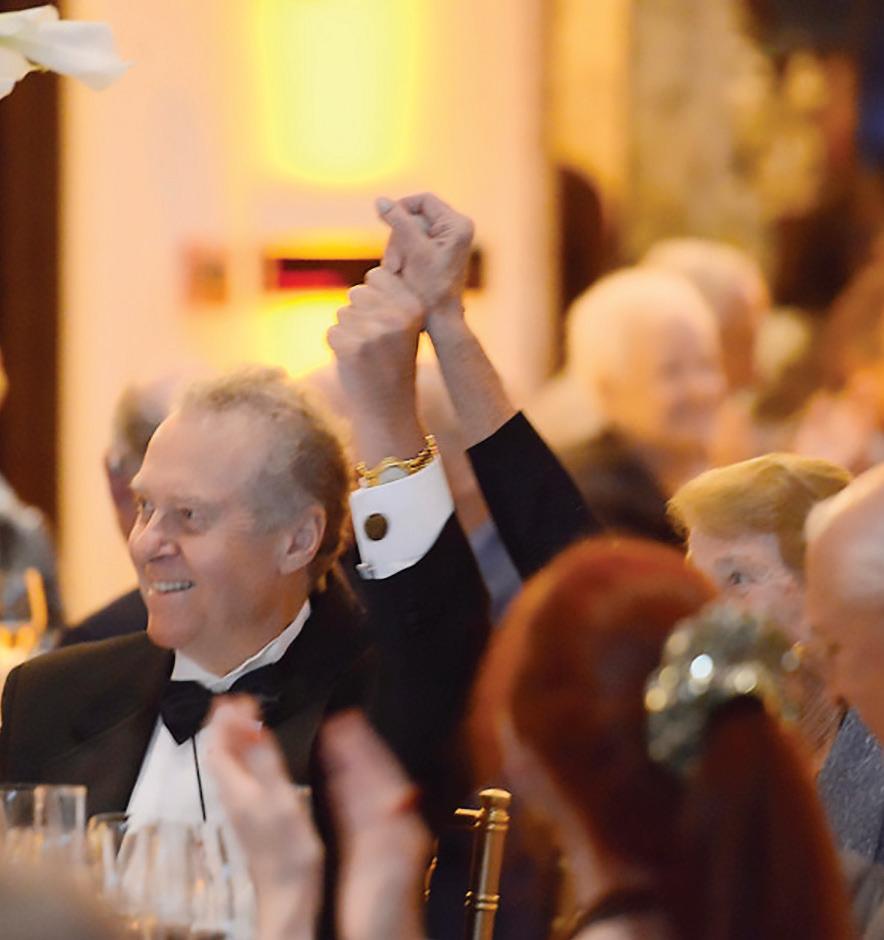

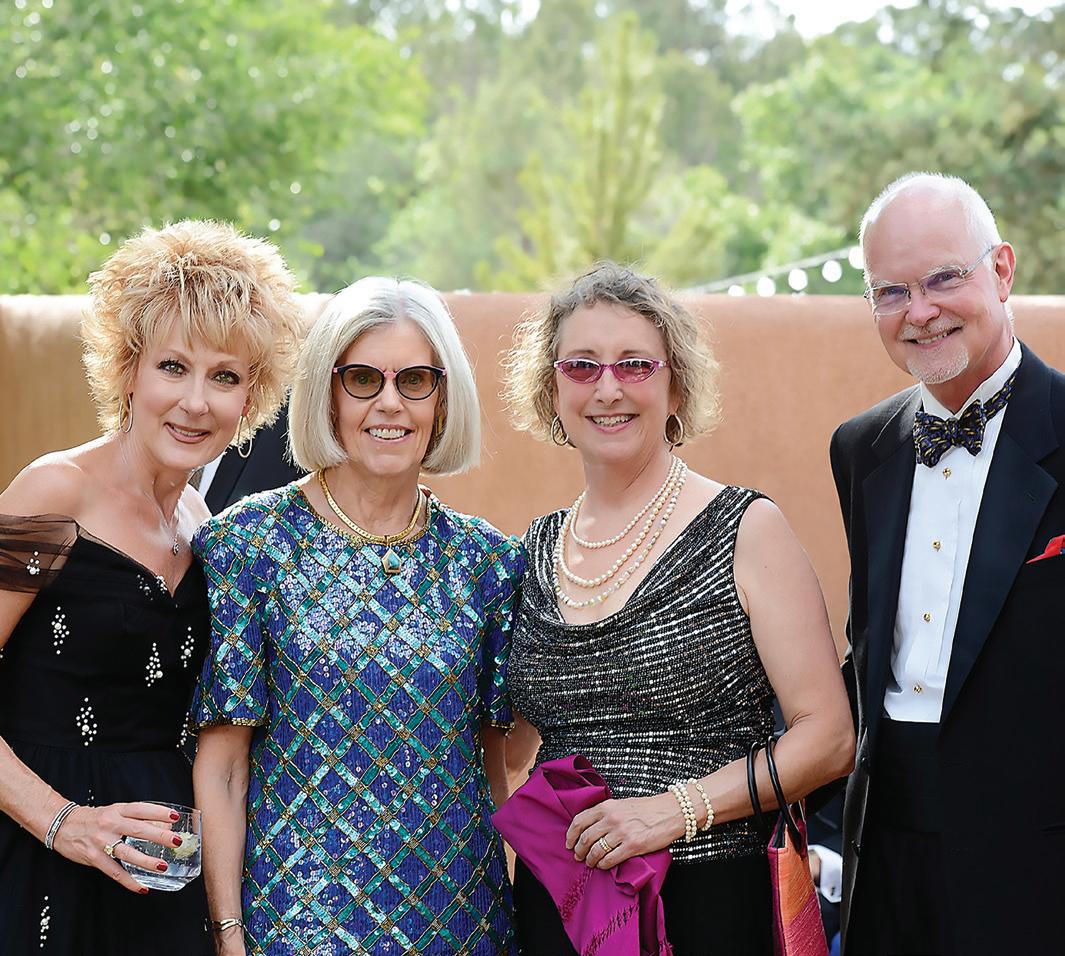 Daniel Nadelbach Photography, LLC
Daniel Nadelbach Photography, LLC
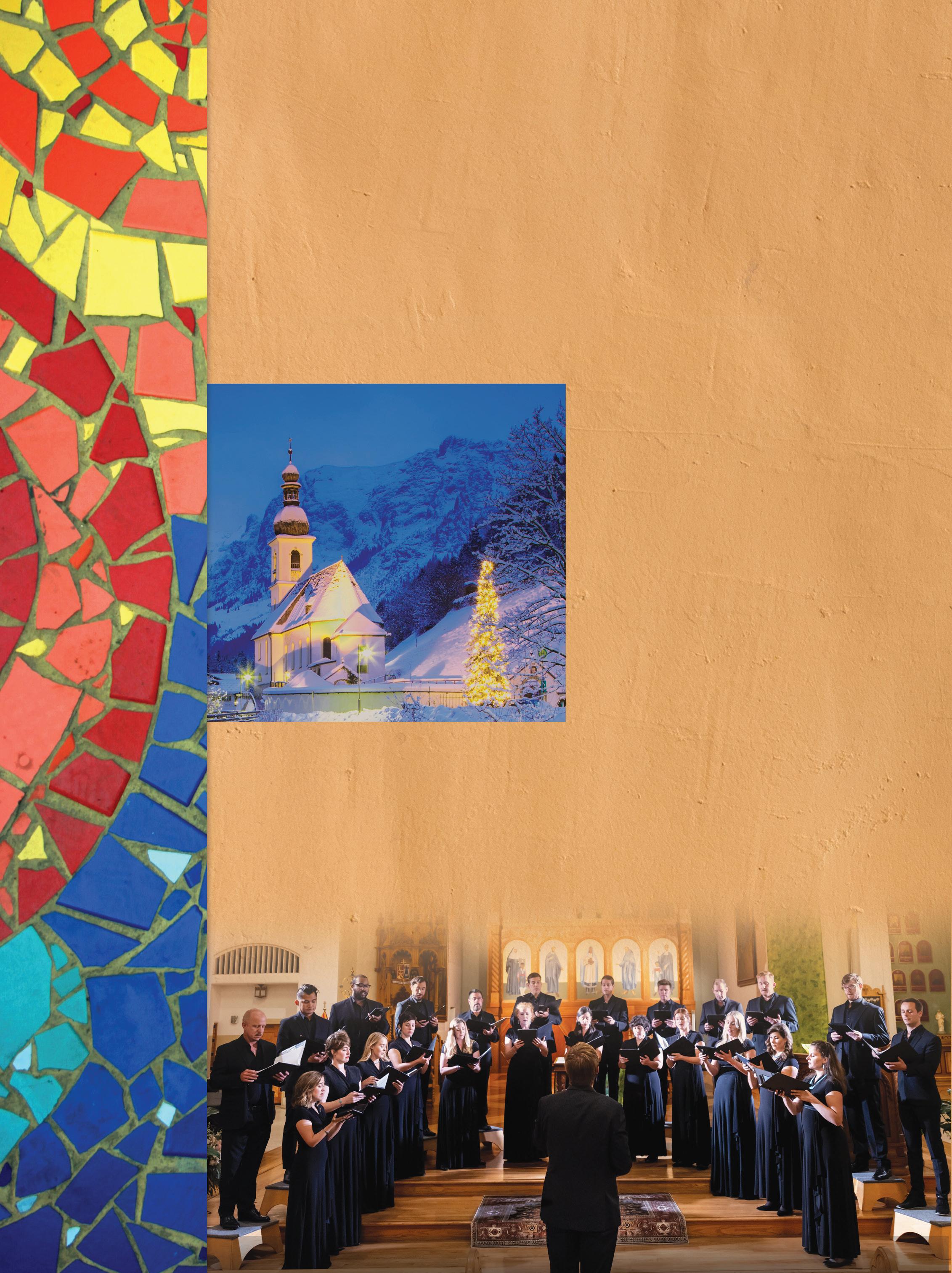



The Santa Fe Symphony's broad platform of music education initiatives are designed to be accessible and appealing to the entire community. By investing in our community, we hope to foster the next generation of classical music lovers and share the beauty of orchestral and choral music with thousands of people—free of charge—each season!
Our community engagement programs are growing! This season, The Santa Fe Symphony Chamber Ensemble goes on tour, performing free concerts in local Pueblo communities and participating in the cultural exchange of music and the arts in Northern New Mexico.
santafesymphony.org

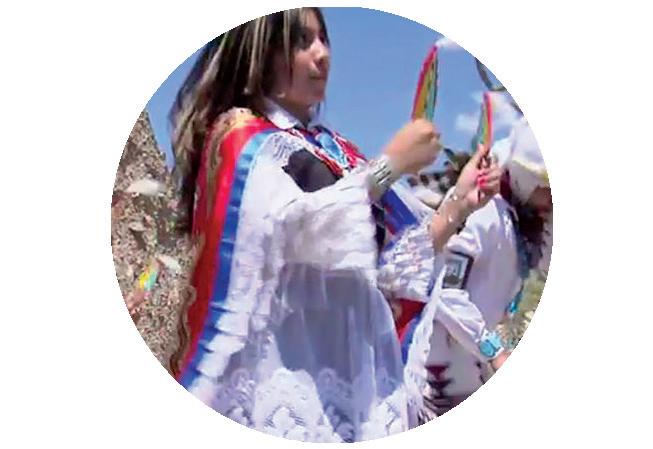
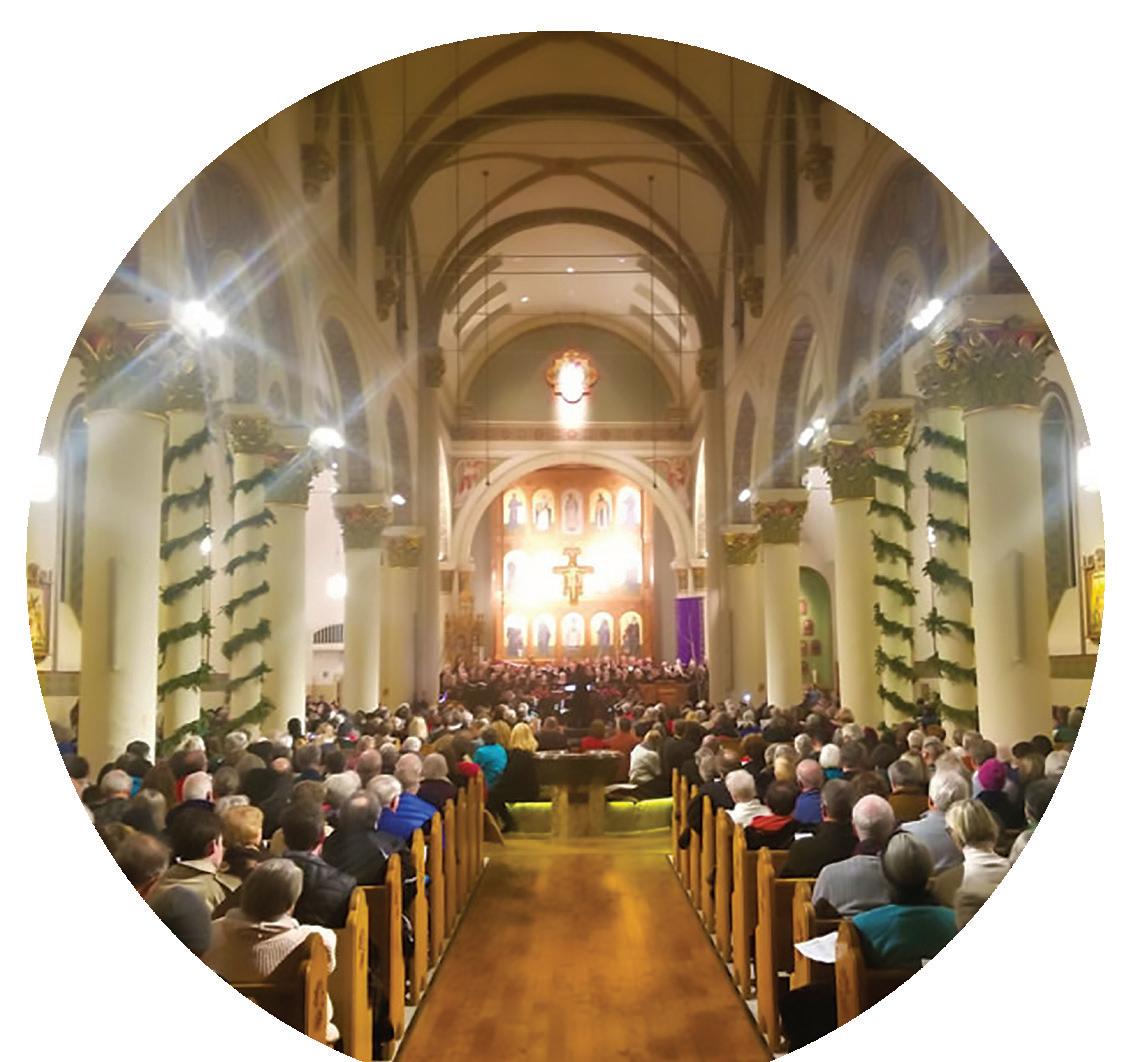

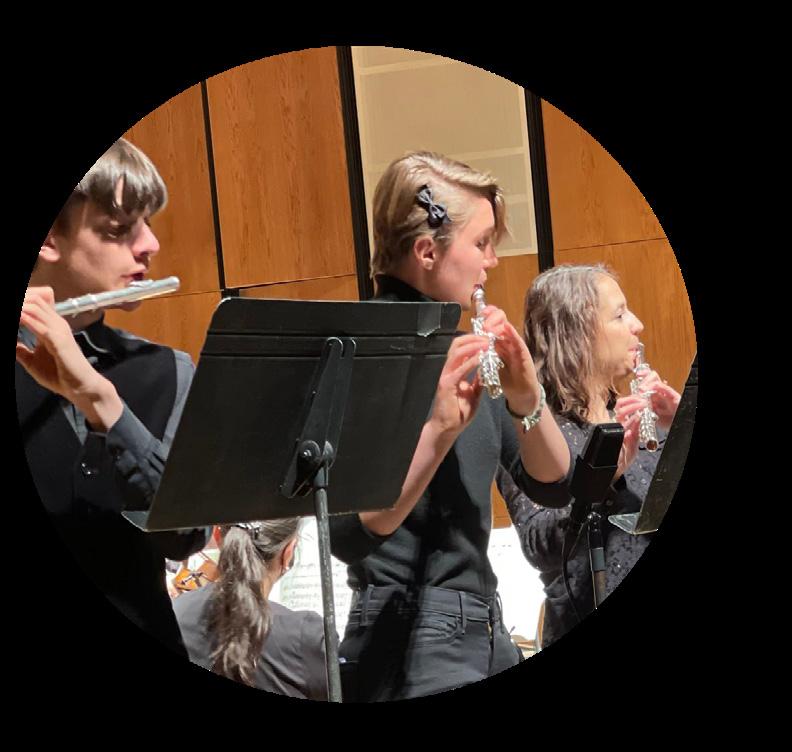
We are the music!
Our education programs channel the talents of our orchestra, chorus, and collaborative partners to create accessible music experiences in our community, impacting approximately 4,000 New Mexicans of all ages each year.
Our annual Discovery Concerts bring 1,600 elementary school children to The Lensic Performing Arts Center for bilingual performances featuring the full Santa Fe Symphony Orchestra with local storytellers— presenting a unique, exciting, and powerful musical opportunity that many students experience for the very first time!
Lift your voice.
Each year, we present FREE choral concerts—in the fall, winter, and spring—to the Santa Fe community. These concerts feature exciting, family-friendly, and engaging programs for all ages and highlight the talents of our orchestral and choral musicians at the Cathedral Basilica of St. Francis of Assisi.
Pay it forward!
In partnership with the Santa Fe Public Schools, our award-winning and innovative music mentoring program brings music professionals into the classrooms to support school ensemble programs through music coaching and one-on-one mentoring.

NEW! Investing in the next genration.
The Symphony has added a concerto competition for outstanding high school music and higher ed students throughout the state of New Mexico, offering them a chance to perform with The Santa Fe Symphony and win a cash prize to further their music education.
NEW! Our Santa Fe Community is Family.
We are proud to announce an exciting expansion! Our Chamber Ensembles are going on tour andtaking gret music beyond the Kids Classical Concert SFPS. The Symphony is thrilled to include Pueblo and other Northern New Mexico communities on the music performance calendar—providing hour-long education concerts not only to Santa Fe Public Schools but beyond!
NEW! Let's Collaborate.
Symphony Chamber Ensembles perform in a variety of community settings, including local schools, retirement homes and assisted living facilities, and this year— Santa Fe Farmer's Market del Sur, a collaboration with the Santa Fe Youth Symphony Association.

Do you know a high school student who loves to sing? Be sure to sign up for our new apprentice program. This season we are offering positions to a limited number of high school choral singers to join The Santa Fe Symphony Chorus!



If you would like to support these or any of our initiatives, learn more about The Santa Fe Symphony's community and learning programs, or to sign up for free or discounted ticket offers, please contact The Santa Fe Symphony's Education Manager, Alexis Corbin, at acorbin@santafesymphony.org or call 505.983.3530.

Support The Santa Fe Symphony's acclaimed community and learning programs by becoming a Friend of Music Education! You can earmark your contribution for a specific Music Education program, such as mentoring, Kids' Classical Concerts, Senior Serenades, and many more or help support ALL of our community programs by contributing to the Friends of Music Education Fund.
Scan the QR code below with your smart phone and support our community and learning programs now! We thank you.
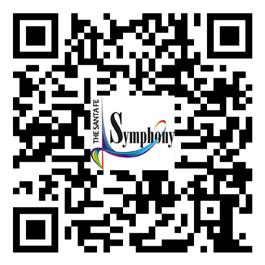
Steven J. Goldstein, MD, Chair
Alexis Corbin, Education Manager
Carole Áine Langrall
Emma Scherer
Leanne DeVane
Lori Lovato
Boo Miller
Callie O'Buckley
April Pickrell
Laurie Rossi
Dana Winograd
Our amazing Music Education Committee is always seeking individuals to help carry all of its exciting endeavors each season. Visit santafesymphony.org/volunteer if you would like to help out at community events or join our Music Education Committee!

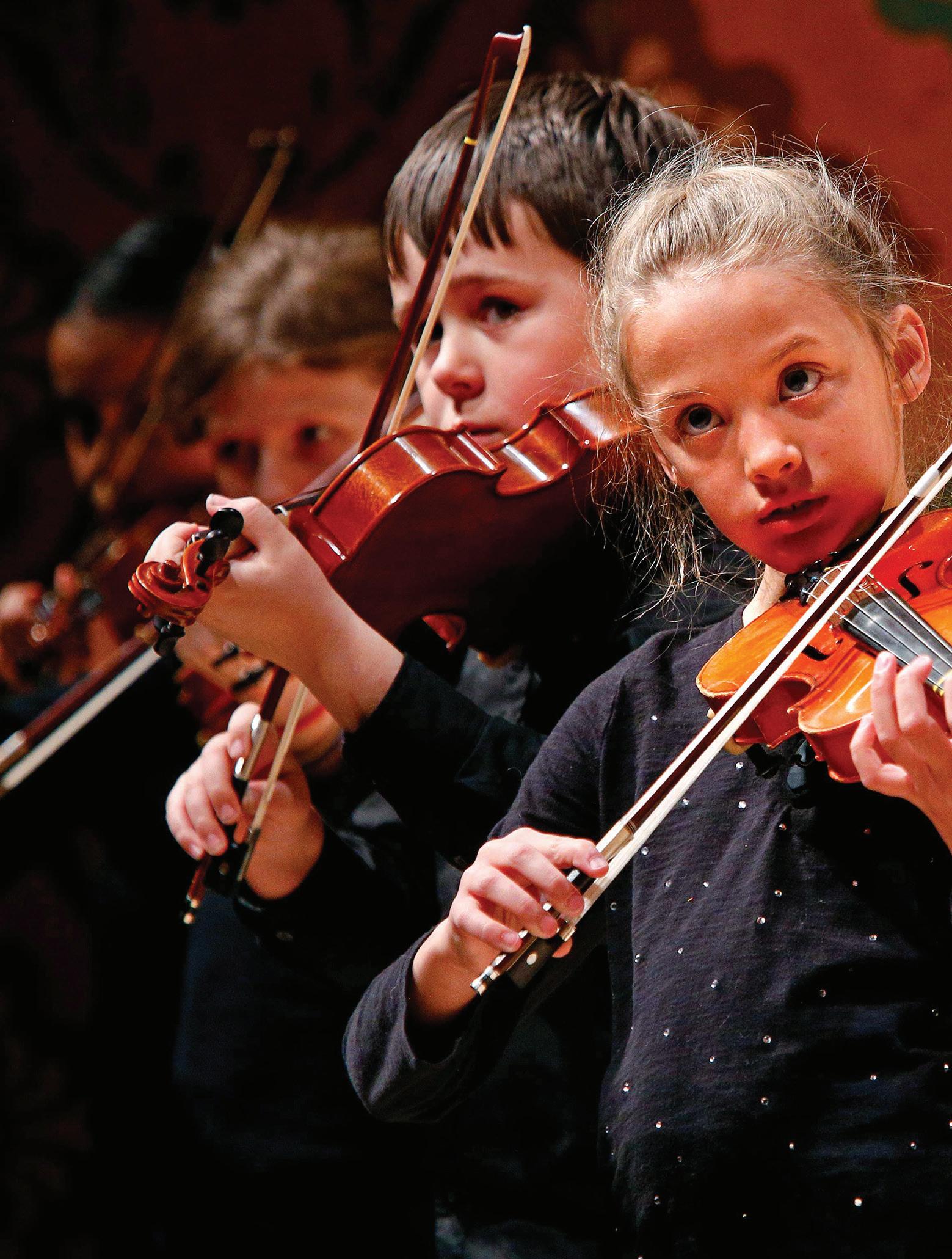
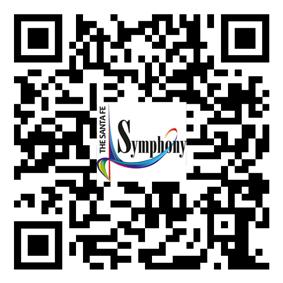
By investing in The Foundation for The Santa Fe Symphony Orchestra & Chorus, you leave a perpetual, personal legacy, ensuring that our community continues to experience the incredible power of orchestral music for generations to come. Contributing to the Foundation enhances The Symphony’s mission of producing world-class music and music education programs in a permanent way. Over the past 20 years, the Foundation has reached nearly $3 million in total assets. The annual distributions from these invested assets provide almost 10% of the Symphony’s annual operating budget. There is no more powerful gift than one to future generations. Create your own permanent legacy through The Foundation for The Santa Fe Symphony.
The Eddie & Peaches Gilbert Gregory W. Heltman Founder’s Chair ($1,000,000)
The Dr. Penelope Penland Principal Cello Chair ($150,000)

Lloyd & Virginia Storr Music Library Fund ($50,000)
The Boo Miller Assistant Concertmaster Chair ($200,000)
The Boo Miller Principal Percussion Chair ($150,000)
Forever Mentor Program John & Marte Murphy ($50,000)
The Ann Neuberger Aceves Principal Conductor Podium ($500,000)
The Diane & Peter Doniger Principal Harp Chair ($150,000)
The Regan/Doniger Fund and The DeHaan National Orchestra Program for The American Pianists Association Fellow Presentation ($55,000)
The Foundation for The Santa Fe Symphony Orchestra & Chorus is a 501(c)3 charitable organization. Tax ID no. 85-048786
santafesymphony.org
We would like to express our sincere thanks to all of our generous supporters for their many contributions to The Foundation for The Santa Fe Symphony Orchestra & Chorus over the years. With your help, The Foundation has raised almost $3 million—from grants, donations, and investment earnings. These assets enable The Foundation to help support The Symphony’s performances, its many outreach programs, and its day to day operations.
The Symphony Foundation’s mission is to effectively manage its assets—to preserve, safeguard, and conservatively grow its investments—so that it can make regular contributions to The Santa Fe Symphony. We can do this only with the continued contributions from our many supporters. Thank you!
Our sincere appreciate also goes out to our talented musicians, dedicated staff, and wonderful volunteers for all their efforts, hard work, and support. These efforts would not be possible without the help of many others—people just like you who choose to support The Symphony by attending concerts and fundraising events, giving gifts of time and money, and including The Santa Fe Symphony Orchestra & Chorus in their estate plans.
Thank you for sustaining our legacy!
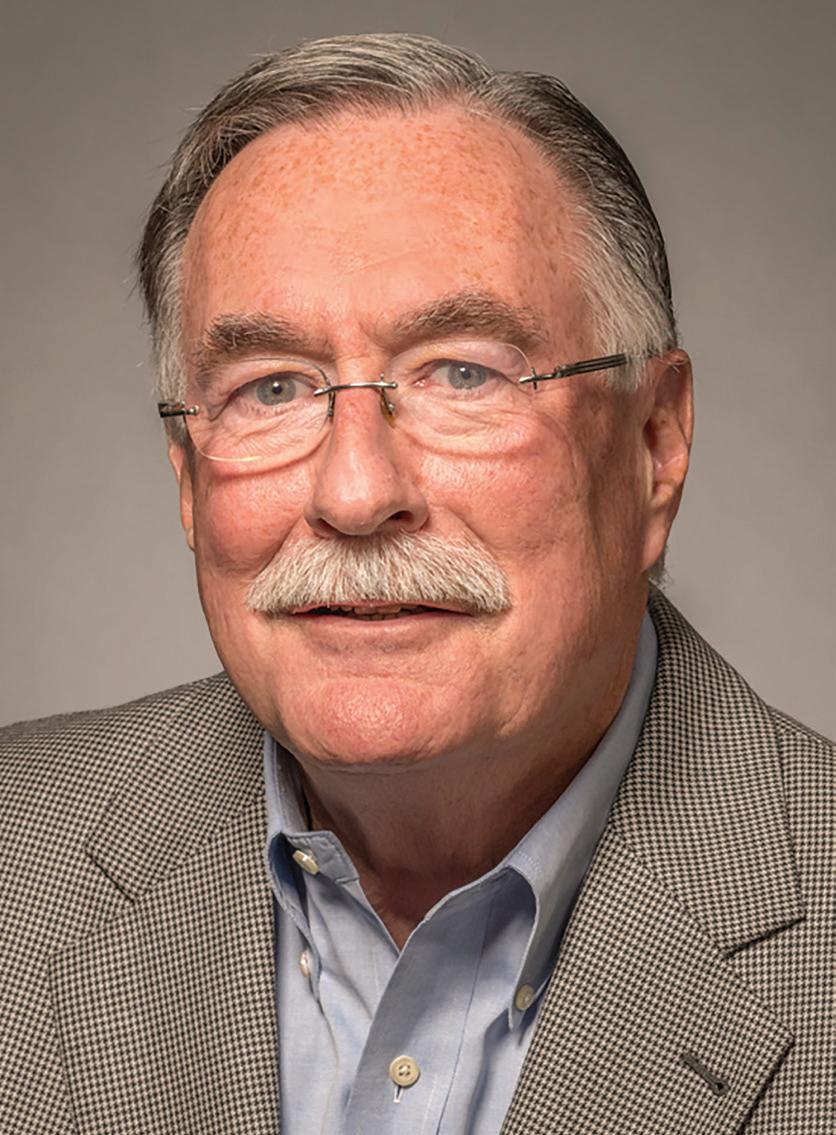
Funds are required to put on great performances such as those we are presenting during this exciting 39th Season! These concerts would not be possible without our loyal supporters—all of them. We continue to be grateful for your help. The Symphony is a sound, cherished organization and we will continue to offer the very best music to our audience.
Please continue to help support our activities.
Again—thank you.
Brian McGrath Foundation President
Brian McGrath
Robin Smith

Perry C. Andrews, III
Eileen R. Mandel
Marion Skubi
Los Alamos National Bank
The Symphony
Teresa M. Pierce
Ann Neuberger Aceves
Dr. Penelope Penland
We gratefully acknowledge the following individuals and organizations for their generous support of The Foundation for The Santa Fe Symphony Orchestra & Chorus. The following contributors are listed according to their cumulative non-designated giving since The Foundation’s inception in 1998:
The Tchaikovsky Society ($200,000+)
Ann Neuberger Aceves Founding Member
Peaches Gilbert and Eddie Gilbert, deceased Founding Members
Gladys and Julius Heldman
Founding Members
Boo Miller
Roy R. and Marie S. Neuberger, deceased Foundation—Founding Members
The Ellington Society ($50,000+)
Edwin Thorne Jr. and Melanie Peters Thorne—Founding Members
Estate of Francis Essig
Richard and Claire Gantos
The Mendelssohn Society ($25,000+)
Helen Gabriel and Bertram Gabriel, deceased Founding Members
Estate of Mrs. Georges Dapples
The Bernstein Society ($10,000+)
Brian McGrath and Carmen Paradis
Drs. Gilbert M. Maw and Jenny M. Auger Maw
Estate of Duane “Pete” Myers
Carl and Patricia Sheppard
Mario and Joe Skubi
The Gladys and Julius Heldman
Circle of Friends
Helen Gabriel ($50,000)
($5,000+)
Michael and Sheryl DeGenring
Diane and Peter Doniger
Ambassador David and Connie Girard-diCarlo
($2,000+)
Jean and John Cheek, deceased
Lee Dirks
Maria and Edward Gale
Dr. James Fries
Cameron Haight
Sue and Dr. Beryl Lovitz, deceased
Joyce Nicholson, deceased
Mick and Genie Ramsey
Frances E. Richards
($1,000+)
Charmay Allred, deceased
Keith Anderson and Barbara Lenssen
Ann Griffith Ash
David and Maggie Brown
Mike and Julie Dawson
Charles Gulick
Robert and Marian Haight
Bertram Heil
Gregory and Elaine Heltman
Evelyn and David Kloepper
Dr. and Mrs. James McCaffery
Dee and Bill Moore
Ted and Alice Oakley
Tom and Sarah Penland
Lee and Mimi Powell
James Sullivan
Nancy D. and William Zeckendorf, deceased
Everett and Janet Zlatoff-Mirsky, deceased
Other Foundation Friends
Rick and Kathy Abeles
George Aceves
Martha Albrecht
Ann Alexander and Richard Khanlian, deceased
Anonymous
Gerald Arnold
Susan Arnold and Ralph Poelling
Julie and William Ashbey
Julie and David Ashton
Hank Bahnsen
Sam and Ethel Ballen
Vera Barad and Edward Marks
F. K. Bateman
Linda and Bill Bein
Celia Berlin
Elliot Blum and Ann Reifman
Helen and Richard Brandt
Leona Bronstein
Norma and Harold Brown, deceased
Norma H. Burch
Raymond Burkard
Elva and Bob Busch
Julius and Helen Cahn
David and Lisa Caldwell
J. Susan Cedar and Gary Lowenthal
Aaron Clark and Barbara Schmidt Clark
Judith Margo Clark
Diane Copland
Diane Shaw Courtney
Zella and Larry Cox
Grover Criswell and Kathryn Van der Heiden
Hugh and Haley Curtin
Brian F. Dailey and Florian Art Garcia
Edgar Foster Daniels, deceased
Josette De La Harpe and Volker De La Harpe, deceased
Joel and Janet DeLisa
Dorothy Dorsey
Al Dos Santos
Mary E. Eisenberg
Hal and Carole Eitzen
Helen Eubank
Bernard C. Ewell
Thomas and Nancy Feine
Stephen Flance
Jeffrey and Megan Fries
Stephen W. Gibbs and Lynn Matte-Gibbs
Elizabeth Glascock
Linda Goff
Charles and Diane Goodman
Julianne Bodnar and John Greenspan, deceased
Maria Haegeleand
Kurt Haegeleand, deceased
Marianne Hale
Kitty Carlisle Hart, deceased
Barbara Hays
Arthur Hemmendinger
Roth and Sarah Herrlinger
Thomas George David Hesslein
Ann and Jerry Hicks
Constance Hillis
C. W. and Gail Hornsby
Ira and Virginia Jackson
Medora and James Jennings
Colleen Jones
Patricia and Alfred Judd
Sara and Jim Killough
Sandra Kirmer
Dr. and Mrs. Joseph C. Kiser
Patricia Klock
Kay Delle Koch
Ronnie Koenig and Marc Feldman
Camille and David Kornreich
Susan Krueger
David and Jody Larson
Lynn F. Lee
Phyllis and Stanford Lehmberg, deceased
Ellie Leighton
Ann and Bill LeMay, deceased
Miranda and Ralph Levy
Carole Light and Alex Redmountain
Elizabeth Lubetkin Lipton
Martin and Mildred Litke
Harvey Litt
Thank you for sustaining our legacy!
George and Norma Litton
Andrea London
Matthew Roy London
Patricia London
Linda Mack and Wynn Berven
Colleen Mahon-Powers
Paul and Nancy Malmuth
Dr. Marilyn Mason
John McCusker
Karen McGrath
Andre Michaudon
Audrey Miller
Ann Morgan
Margaret Morgan and David Cohn
Richard and Patricia Morris
Steve and Luanne Moyer
Pat Mueller-Vollmer
Ruth Nelson and Thomas Murphy
Jim Neuberger
Roy S. Neuberger, deceased
Betsy S. Nichols
Richard A. Nulman
Bob Nurock
Frank and Dolores Ortiz
Concha Ortiz y Pino de Kleven
Melinne Owen and Paul Giguere
Janet M. Peacock
J. Michael Pearce and Margaret M. Page
John Pedotto
Valerye Plath
William and Ronnie Potter
Joshua Quesada
Harriet Raff
John Geiger and Ronald Rinker, deceased
James M. C. Ritchie
Charles and Mara Robinson
Kathleen Rodriguez and Gerald Rodriguez, deceased
Brett Roorbach
Kimberly Roos
Barbara Rosenblum
Hilda Rush
Molly and Tony Russo, deceased
Donna Saiz
Dorothy Salant
Allen and Mary Anne Sanborn
Nancy Scheer
Beatrice and M. C. Schultz
Noel Schuurman
Edward Seymour
Donald Shina and Kevin Waidmann
Christine Simpson
Karen Sonn
Frank and Karen Sortino
Harold Steinberg
Emily and Peter Coates Sundt
Jeff and Georgann Taylor
Hunter and Priscilla Temple
Enid and Roy Tidwell
Connie Tirschwell
Patrick Toal
Sandy and Gene Tomlinson
Don and Emma Lou Van Soelen
Roberta Van Welt
Marlene Vrba
Suzanne Watkins
Bernard and Moira Watts
Joy S. Weber
Truel and Joan West
Dorian Wilkes
T. C. and Dora Williams
Barbara Windom and Victor di Suvero
Marilyn and Marvin Winick
Nancy Wirth
Marcia Wolf
Marilyn Worthington
Gilda Zalaznick
Nolan and Patricia Zisman
Foundations, Funds, and Trusts
Anonymous
Dominion Foundation
Donald T. Regan Charitable Foundation
Bar-Levav Family Foundation
Garfield Street Foundation
The Harold Brown and Norma C. Brown Revocable Trust Lackner Family Endowment Fund
McCune Charitable Foundation, Santa Fe
Sidney and Sadie Cohen Foundation
Thorne Family Fund, Santa Fe Community Foundation
Donations to The Foundation
In Honor of:
Ann Aceves, by Ellie Leighton
My sister, Ann Neuberger Aceves, by Roy S. Neuberger, deceased
Ray Besing, by Joyce Nicholson, deceased
Greg and Elaine Heltman, by Joyce Nicholson, deceased
Marian and Ernest Karlson, by Kathleen Rodriguez and Gerald Rodriguez, deceased
Lori Lovato, by Zella and Larry Cox
Joyce Nicholson, deceased
Beth and Joel Scott, by Joyce Nicholson, deceased
Donations to The Foundation
In Memory of:
Ann Mahon Bradstreet, by Joyce Nicholson, deceased
Franz and Amalia Chrobok, by Maria Haegele and
Kurt Haegele, deceased
Ken Coleman, by Michael and Sheryl DeGenring
Ruthe Coleman, by Ann Neuberger Aceves
Michael Melody and Bonnie Binkert
Bertram Gabriel Jr., by Ann Neuberger Aceves
Helen Gabriel
David Grayson, by John and Peggy Polk
Samuel Grossman, by John and Jean Cheek
Chris Gulick, by Charles Gulick
Gladys and Julius Heldman, by Dee and Bill Moore
Gladys Heldman, by Ann Neuberger Aceves
Keith Anderson and Barbara Lenssen
Helen Gabriel
Joyce Nicholson, deceased
Harriet Heltman
Sally Joseph, by Harriet Raff
Bennett Marcus, by Enid and Roy Tidwell
Don and Emma Lou Van Soelen
Marielle McKinney, by Edgar Foster Daniels, deceased
Lee Dirks
Josette de la Harpe and Volker de la Harpe, deceased
Gladys and Julius Heldman
Ira and Virginia Jackson
Miranda and Ralph Levy
Richard A. Nulman
Concha Ortiz y Pino de Kleven
Frank and Delores Ortiz, deceased
James M. C. Ritchie
Edward Seymour
Emily and Peter Coates Sundt
Suzanne Watkins
Barbara Windom and Victor di Suvero
Nancy and Bill Zeckendorf, deceased
Roy R. Neuberger, by Ann Neuberger Aceves
Jan Arleen Nicholson, by Joyce Nicholson, deceased
Ambassador Frank Ortiz, by Ann Neuberger Aceves
Betty Rutledge, by Ann and Bill LeMay, deceased
Dona Haynes Schultz, by Charmay Allred, deceased
Pat Wismer, by Christine F. Wismer
Emily Zants
Business Donations to The Foundation In Kind
Eun K. Hong, CPA

The Santa Fe Symphony would like to acknowledge the following members of the Ovation Society who have passed on. We are eternally grateful for their generosity.
Charmay Allred
Dr. Harold & Norma Brown
Mrs. George Dapples
Francis Essig
Allen Mason
Joyce M. Nicholson
Anthony Russo
Patricia Sheppard
Bernice E. Weiss
Margaret “Mickey” F. Inbody
Emily Zants
Janet Zlatoff-Mirsky
Thank you for sustaining our legacy!
Members of the Ovation Society who have generously remembered us in their Estate Planning:
Perry C. Andrews, III
Anonymous
Anonymous in Memory of Gladys and Julius Heldman
Ann Neuberger Aceves
Gregg Antonsen
Stephen and Amanda Apodaca
David and Maggie Brown
Raymond and Mary Ann Burkard
Marilyn Casabonne
Jean Cheek
Zella Kay Cox
Daniel Crane
Hugh and Haley Curtin
Helen C. Gabriel
Fred and Shelley Glantz
Susan Goldstein and Steven J. Goldstein, MD
Elaine and Gregory W. Heltman

Eileen R. Mandel
Drs. Gilbert M. Maw and Jenny M. Auger Maw
Carmen Paradis and Brian McGrath
Dr. Penelope Penland
Genie Ramsey
Britt Ravnan and Michael Ebinger
Laurie Rossi
Vera Russo
Donald Shina, MD and Kevin Waidmann
Marion Skubi
Hunter and Priscilla Temple
Melanie Peters Thorne and Edwin Thorne Jr.
Elizabeth VanArsdel
Gretchen Witti
Nancy D. Zeckendorf

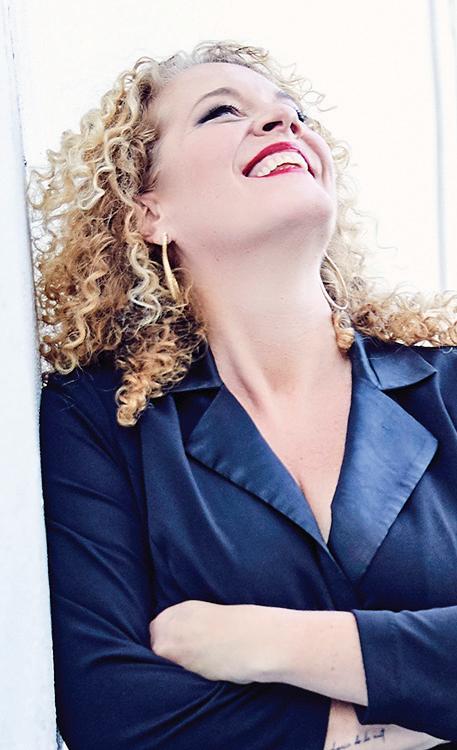

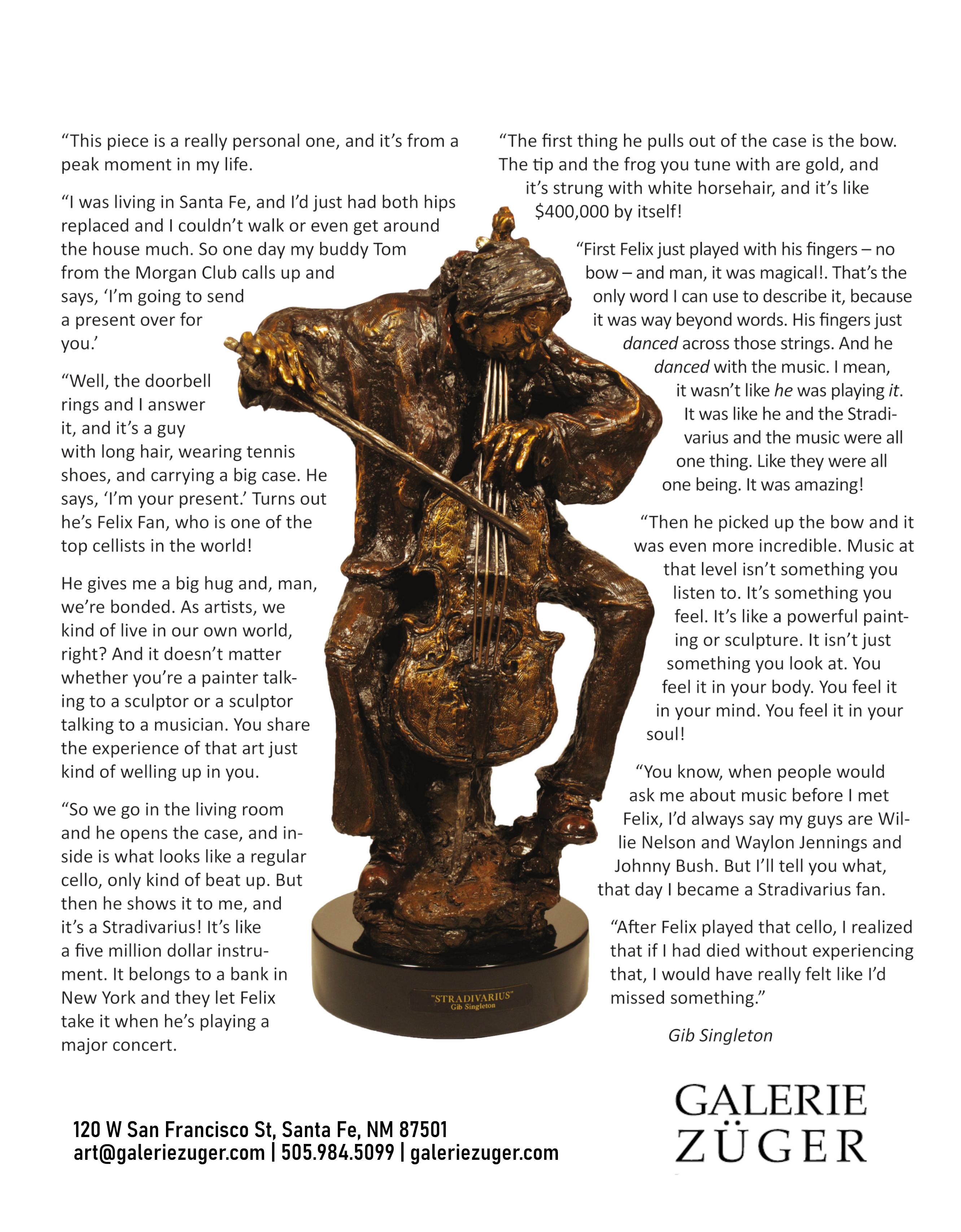


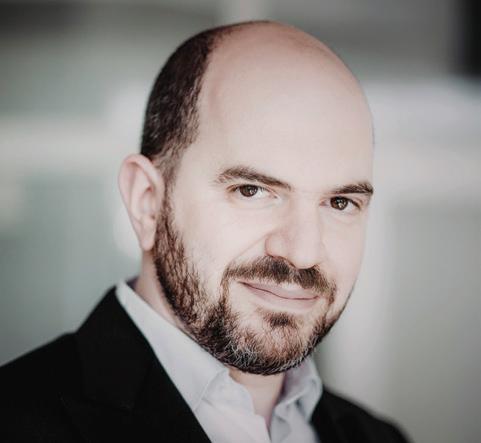




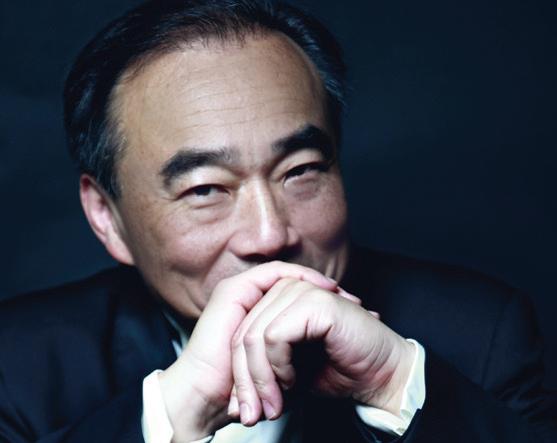




































full service catering party planning - weddings special events - dinners


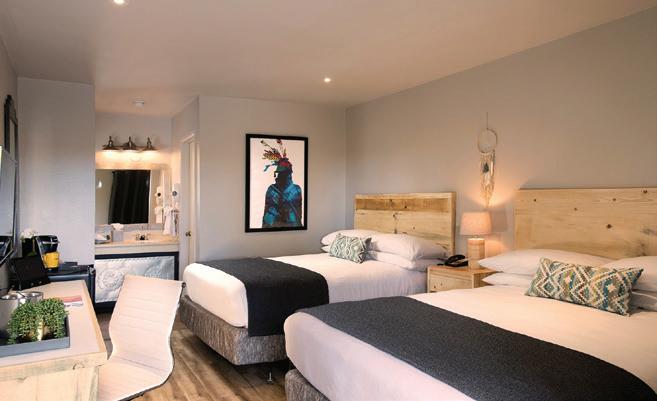
•Great Location & Even Better Value
•Great Location & Even Better Value
•Steps away from The Railyard & The Plaza
•Steps away from The Railyard & The Plaza
•Newly Renovated Rooms
•Newly Renovated Rooms
•Numerous Xperience Xclusives:
•Numerous Xperience Xclusives: Fresh Start Breakfast, Plaza Shuttle, Wifi & more...
•Seasonal

•NM
•Seasonal Patio Dining & Entertainment
•NM Safe Certified


Whether
Amenities

